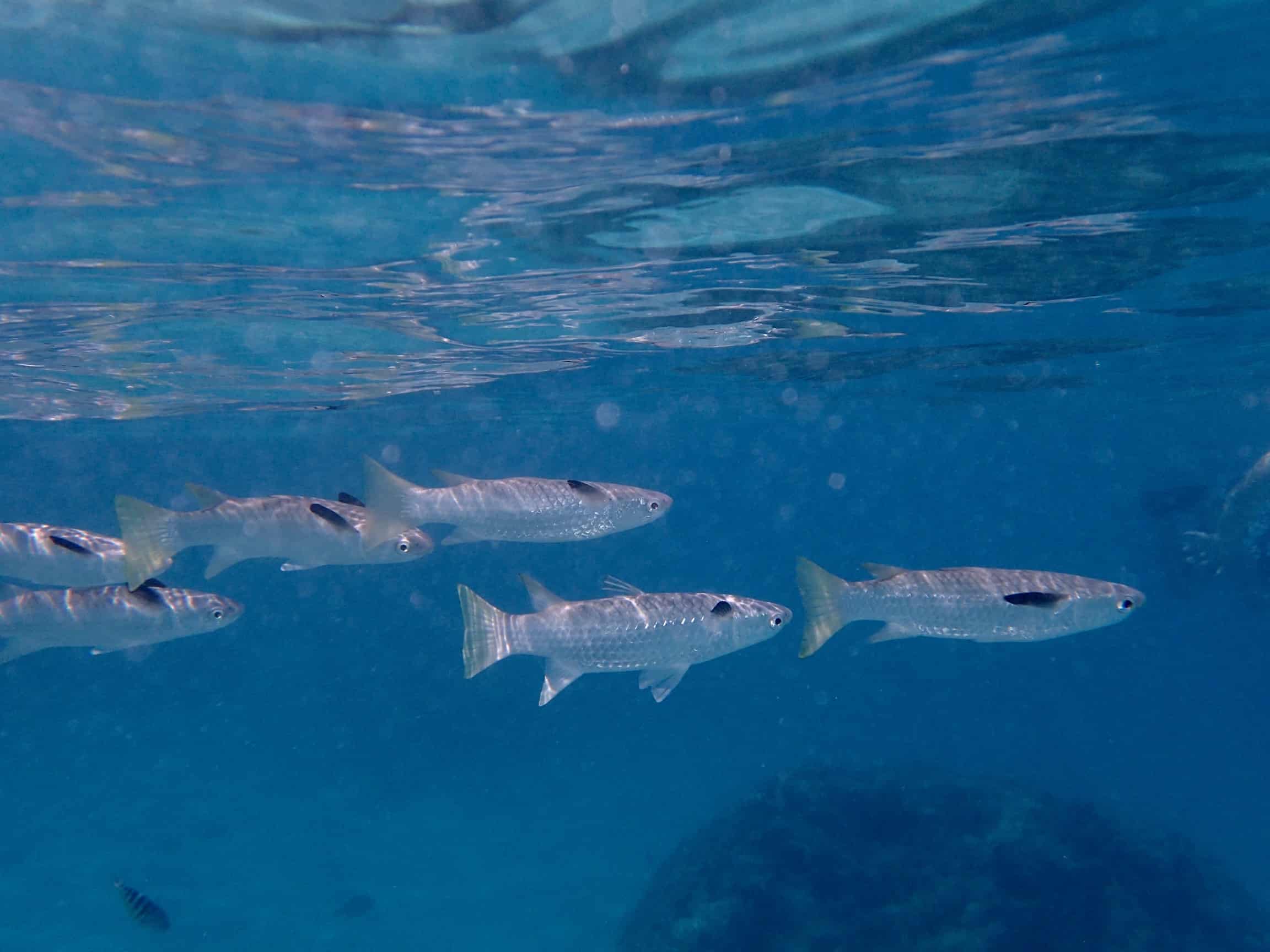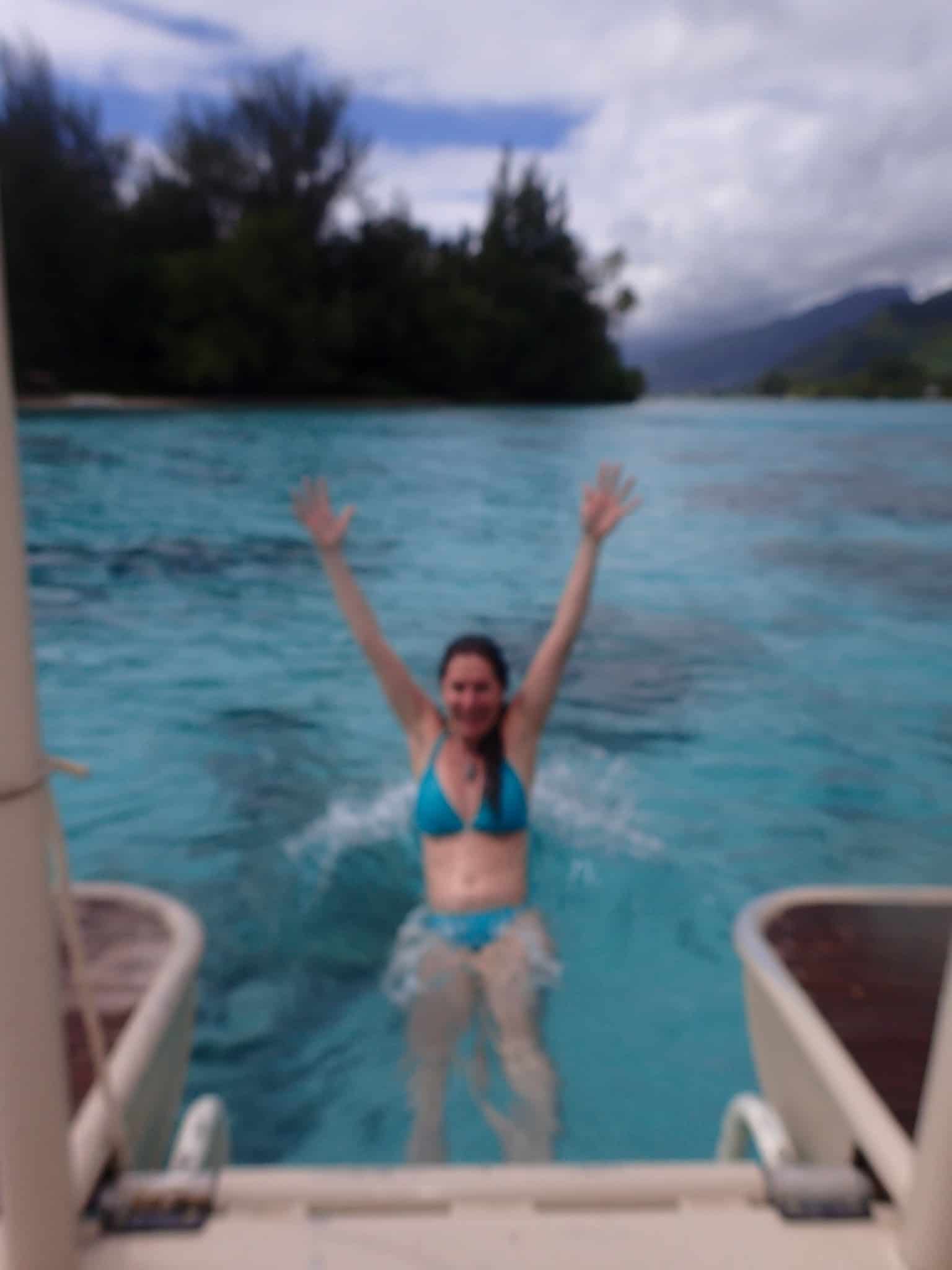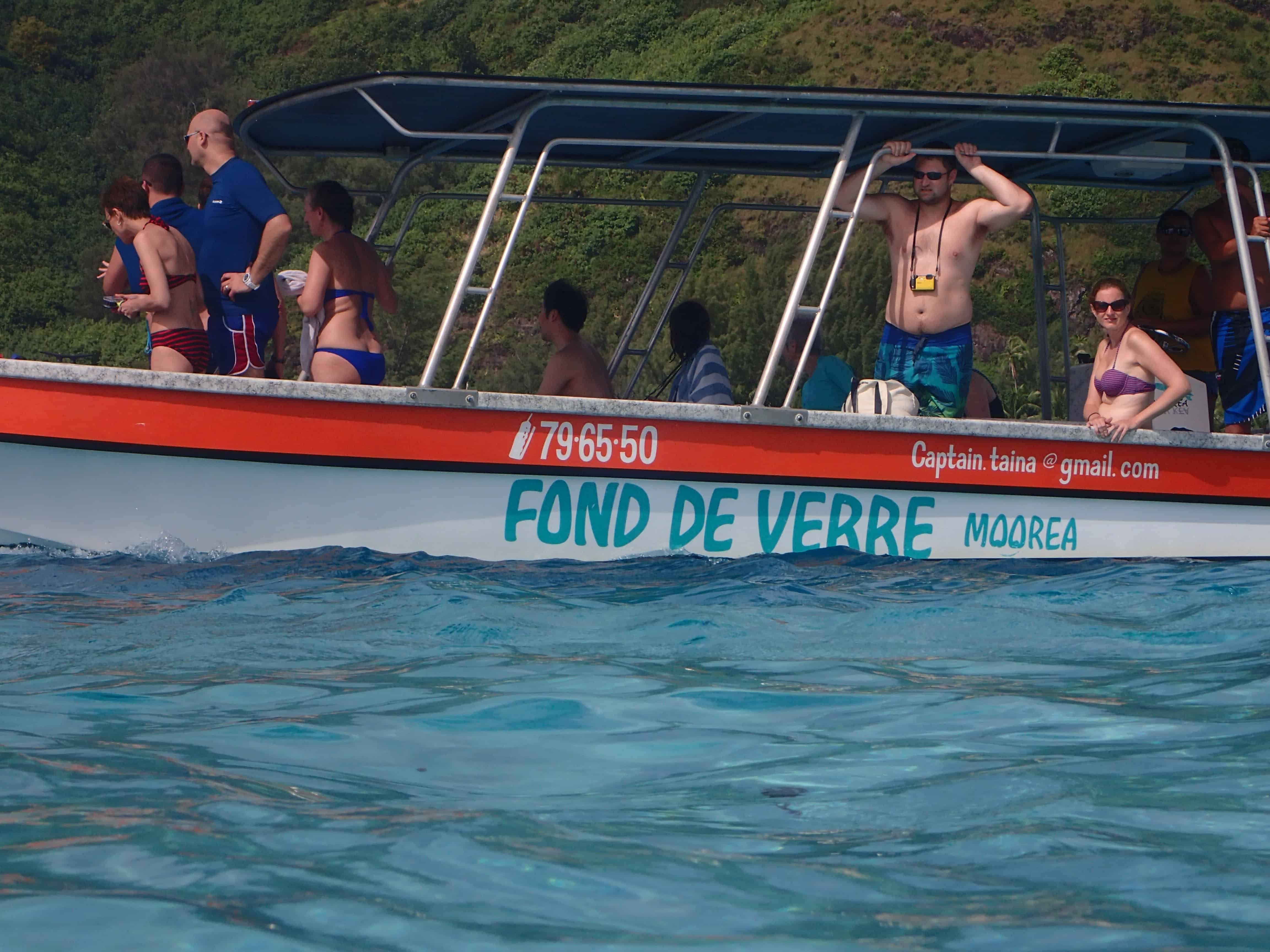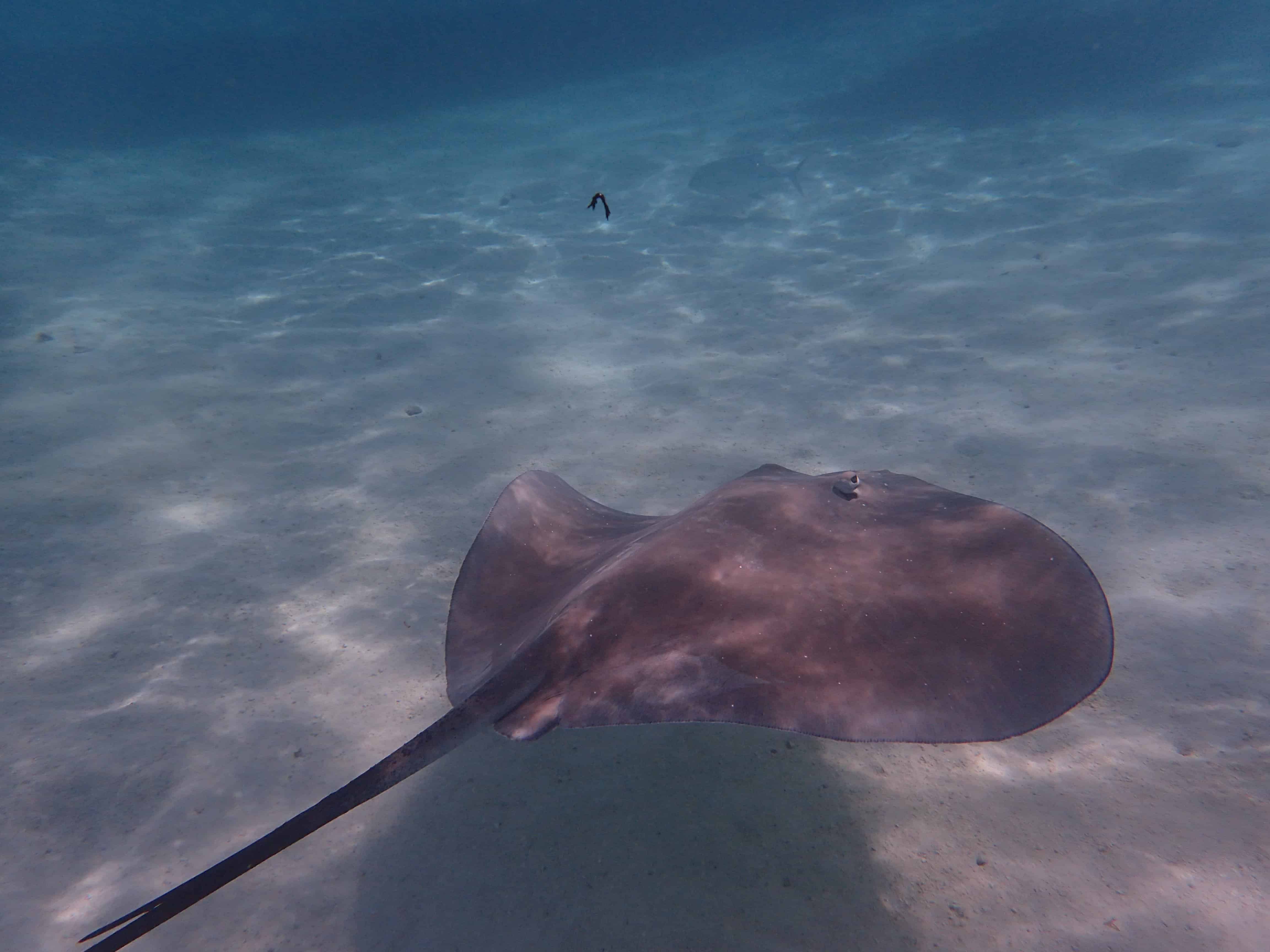French Polynesia has a wealth of more remote islands if you want to get off the beaten path, but Tahiti and Mo’orea, both of which are incredibly accessible, have a lot to offer on land and….on sea. Water lovers will love this ultimate travel guide to Tahiti and Mo’orea for all things on and under the sea.
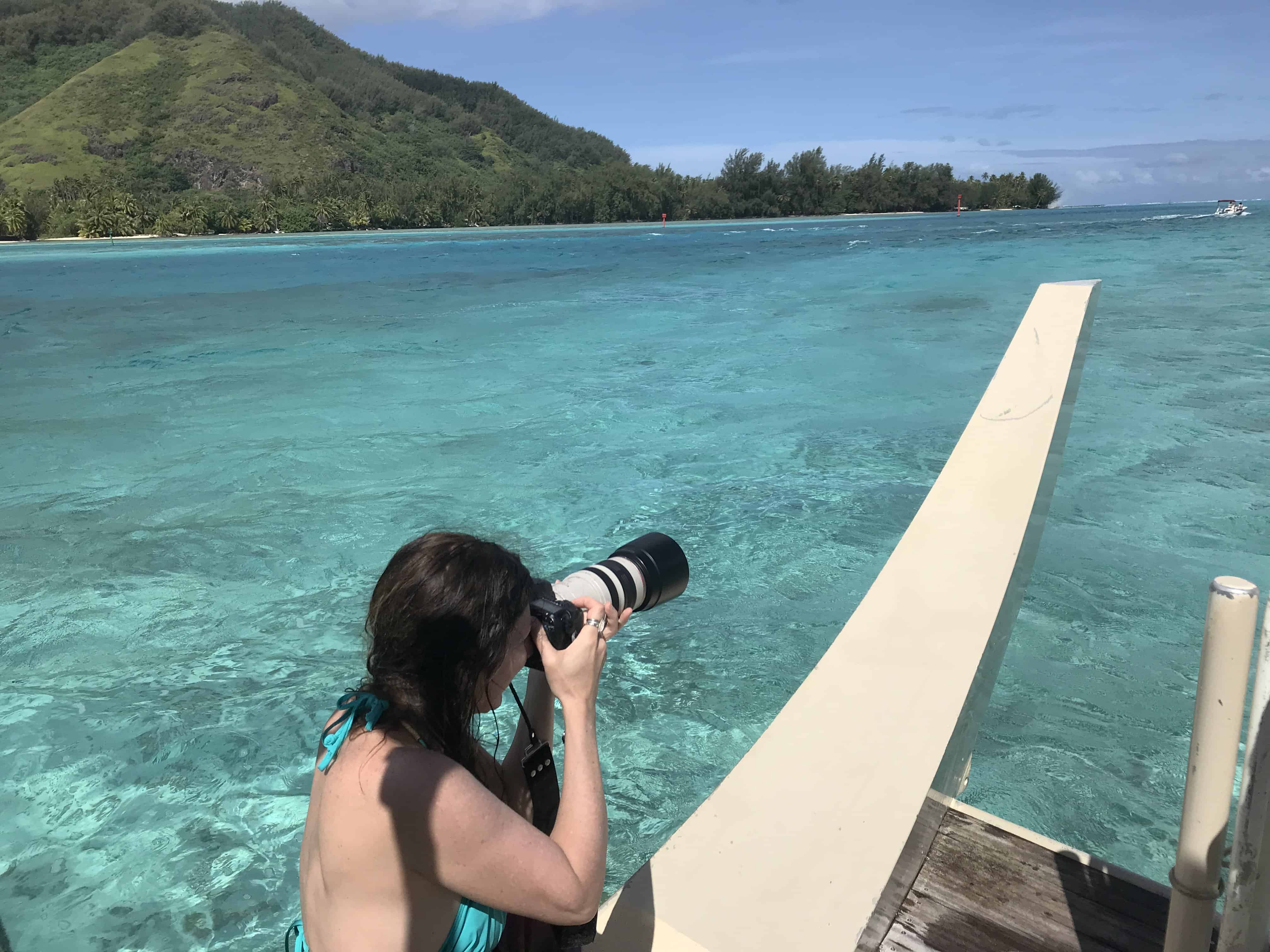
Shooting near the Lagoon in Mo’orea
Mo’orea & Tahiti Travel Guide on Water
My most memorable aha moments were in Mo’orea largely because the waters are warm, clear aqua blue and the fact that I had a chance to swim with stingrays, sharks and dolphins, which is hard to beat.
Remember that Mo’orea is only a 30-minute picturesque ferry ride from Tahiti. My favorite spot to swim with the most breathtaking views? The Lagoon of course, so this is where we’ll start this travel guide to Tahiti & Mo’orea for all things wet and wild.
The Lagoon
Mo’orea is well known locally and internationally for the opportunity to swim with and touch stingrays and reef sharks on a shallow sand bar in the lagoon. Roughly only around 1.3 meters deep, the waters are crystal clear. The stingrays don’t ‘sting’ and are about as friendly as they get.
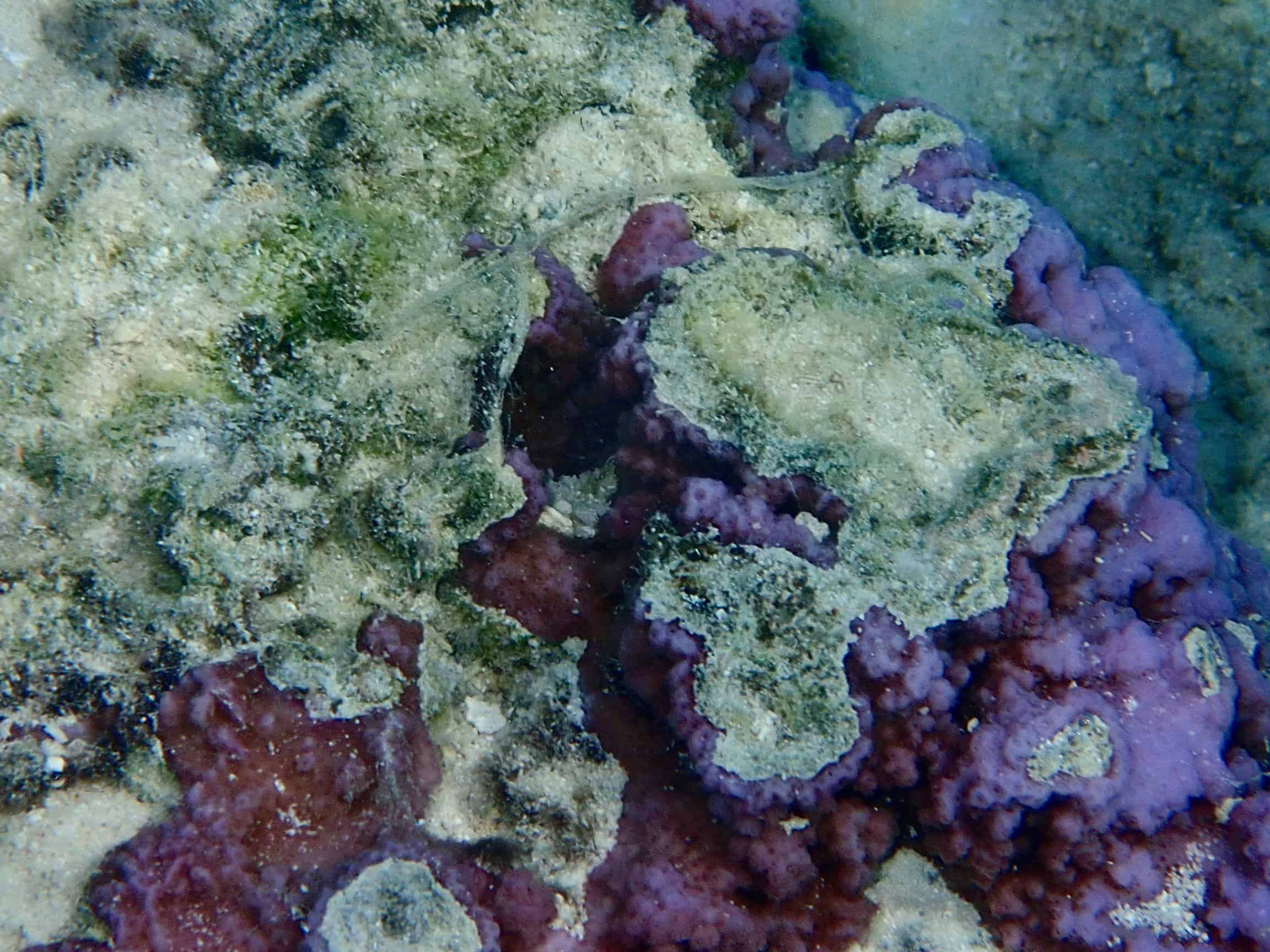
Coral near the Lagoon
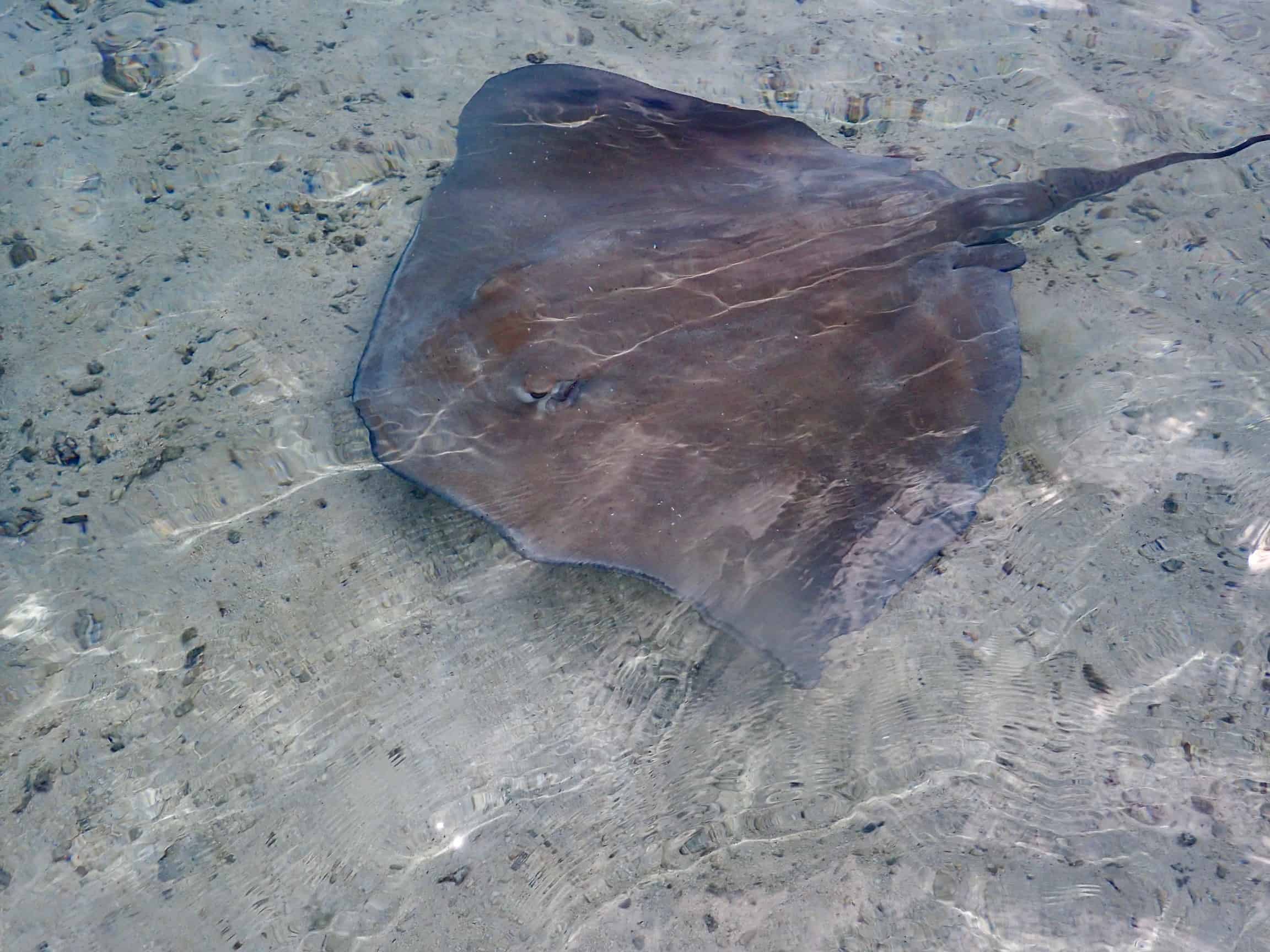
Friendly stingrays in the Lagoon
In the lagoon as well as in nearby waters, you’ll have one close up encounter with one stingray after another — they’ll literally swim around your legs and feet and nestle up against you, not unlike cats do when looking for attention or trying to show affection.
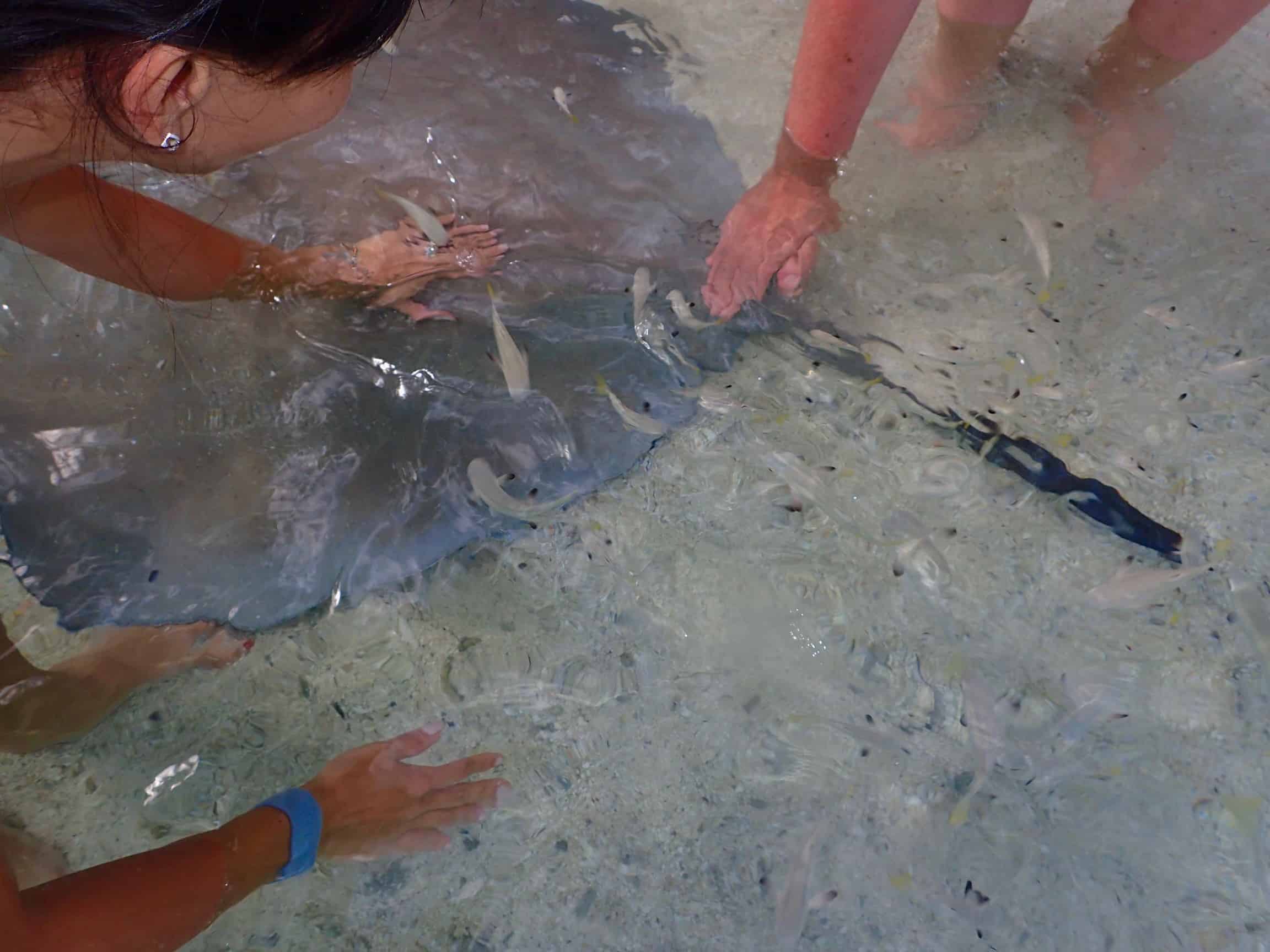
You can pet the stingrays as well.
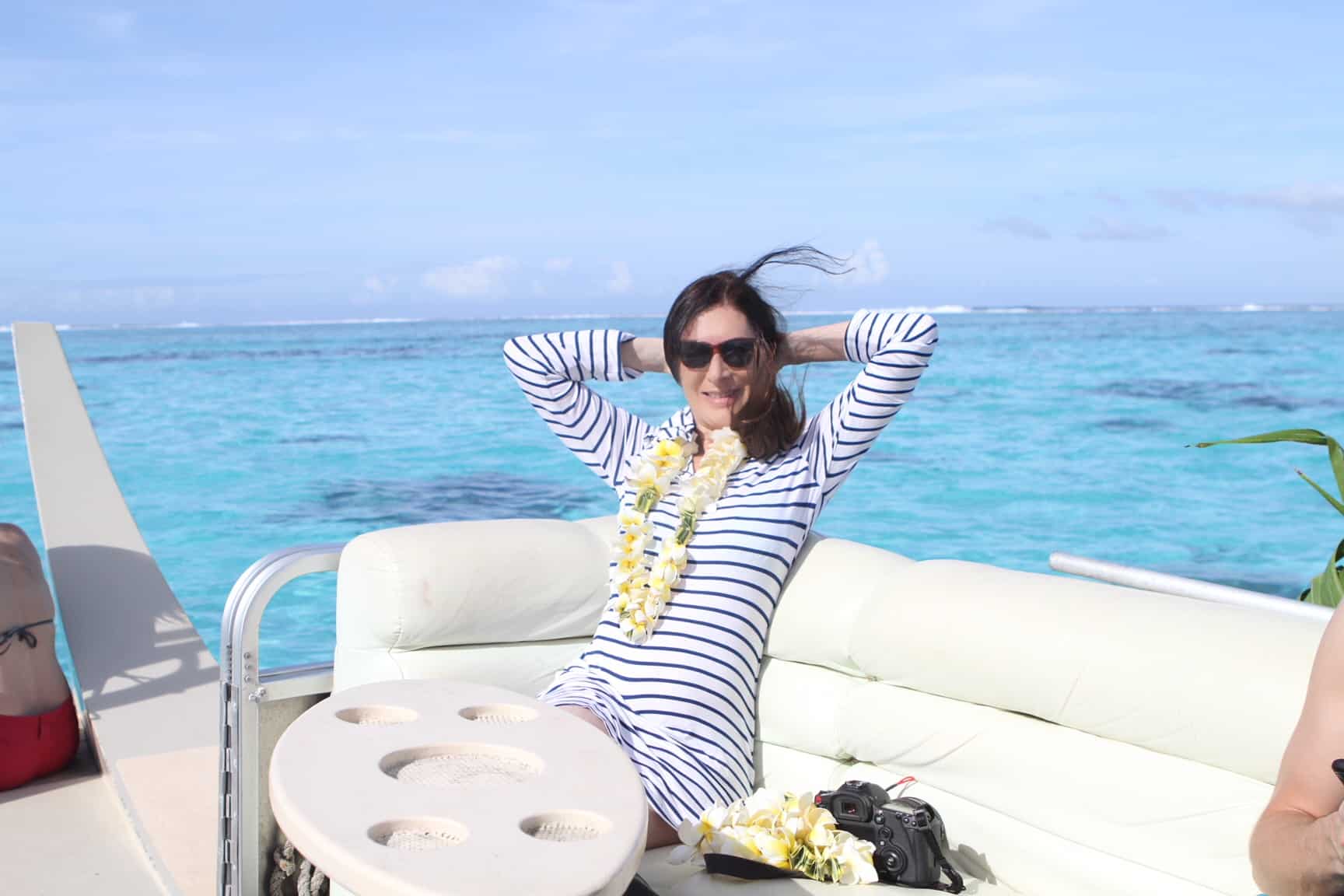
The other big draw about the lagoon is the reef sharks and there are dozens of them. In our area alone, I saw around ten or so and they seem to travel in small groups.

Reef sharks in the Lagoon.
If you’ve ever done serious snorkeling or diving in places like the Great Barrier Reef, Thailand or the Turks & Caicos, try not to be too disappointed by the lack of vibrant colors on their reef. Your real reason to visit the Lagoon is to have a transformative experience up close with reef sharks and friendly stingrays.
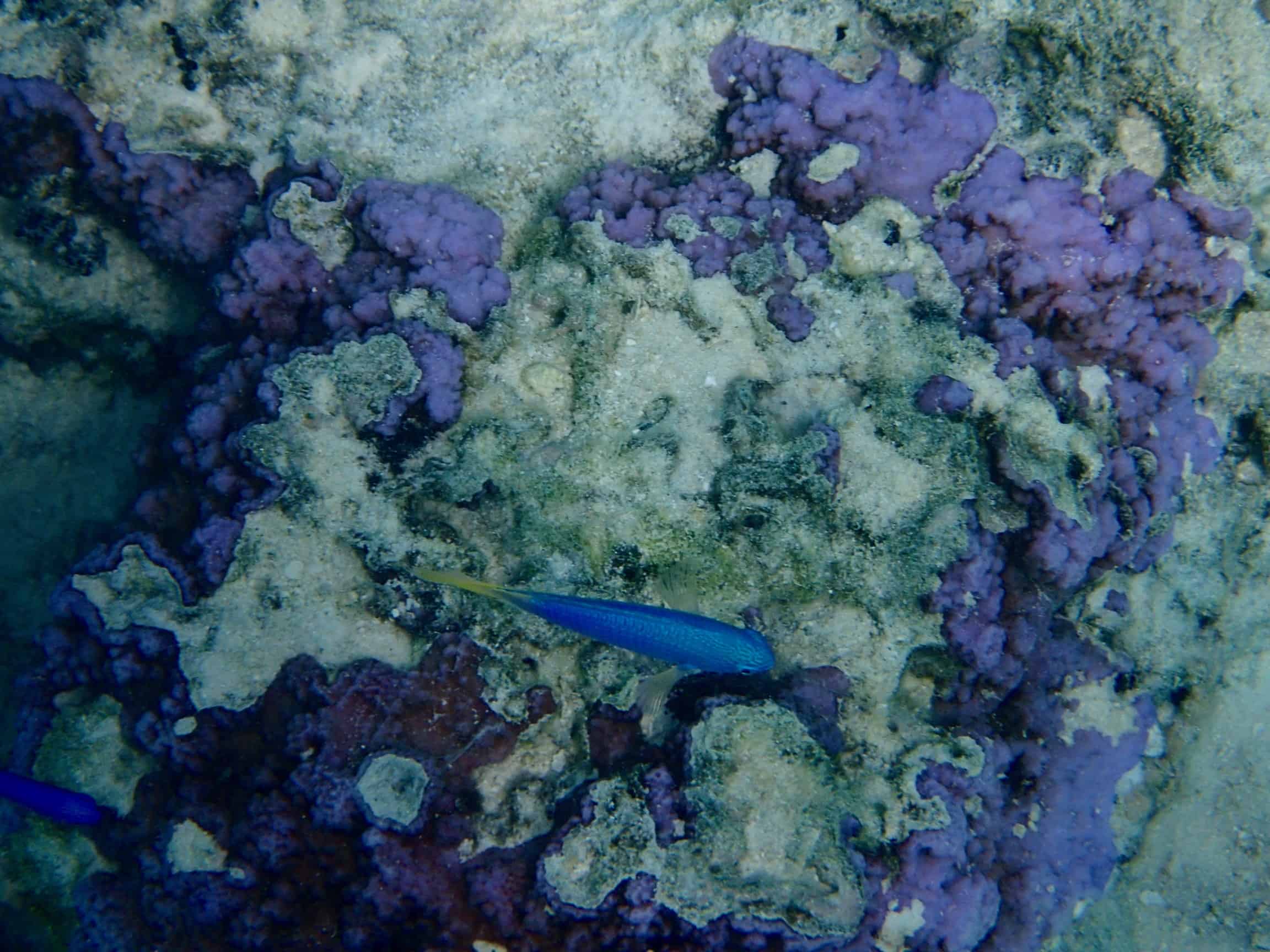
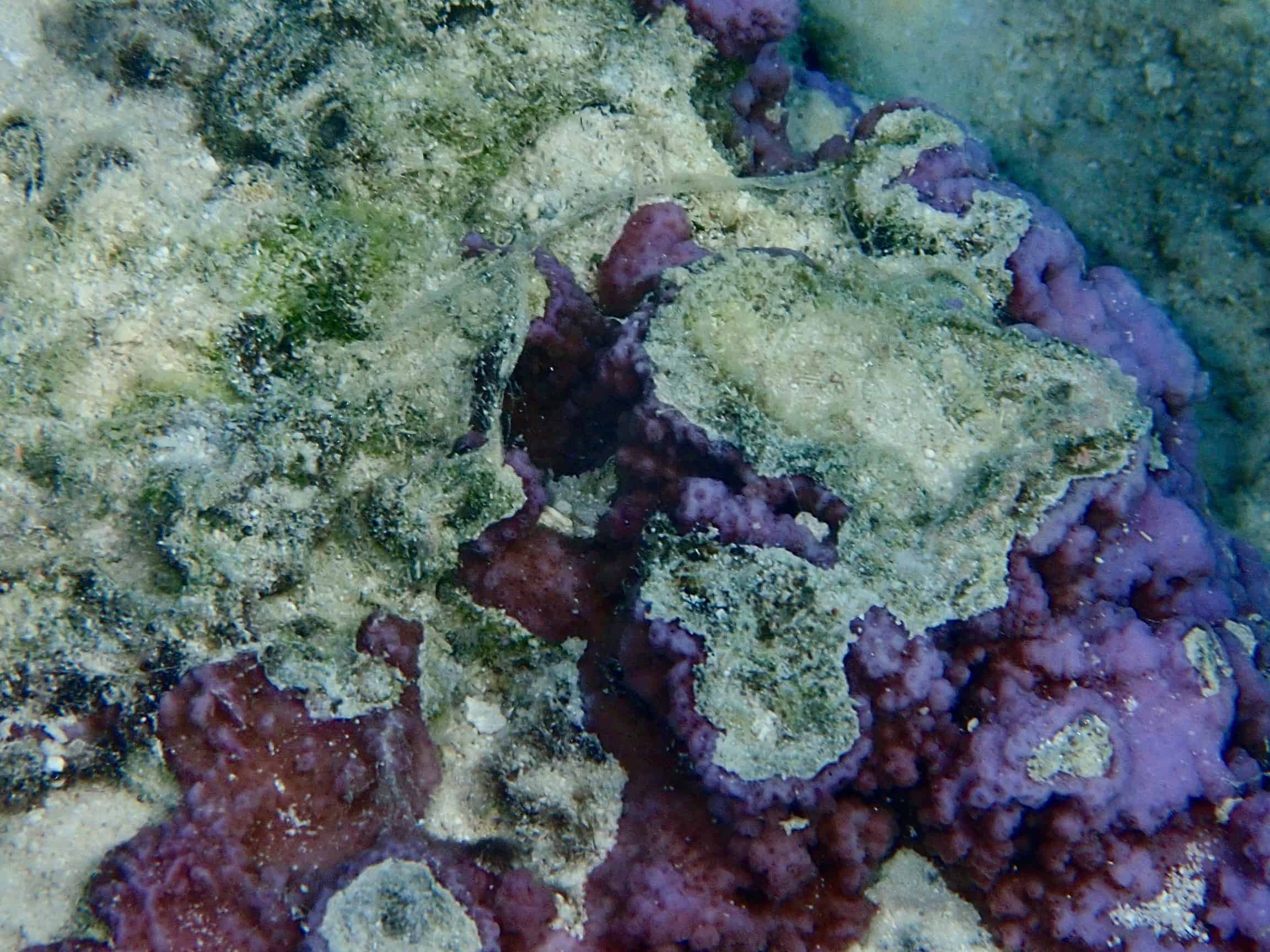
The ocean floor at the Lagoon

Fish in the Lagoon

Fish in the Lagoon
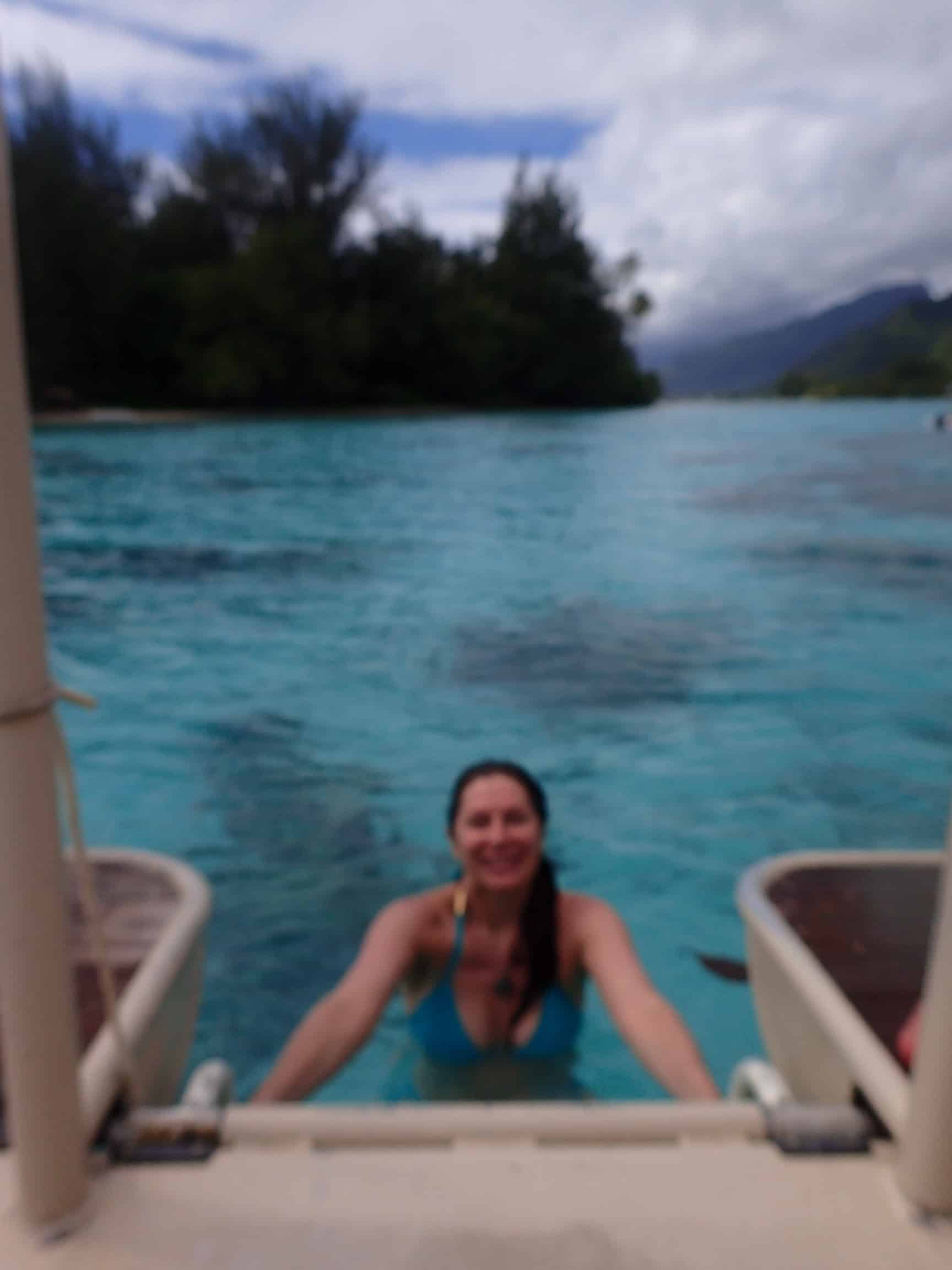
Snorkeling off the back of a Catamaran in the Lagoon
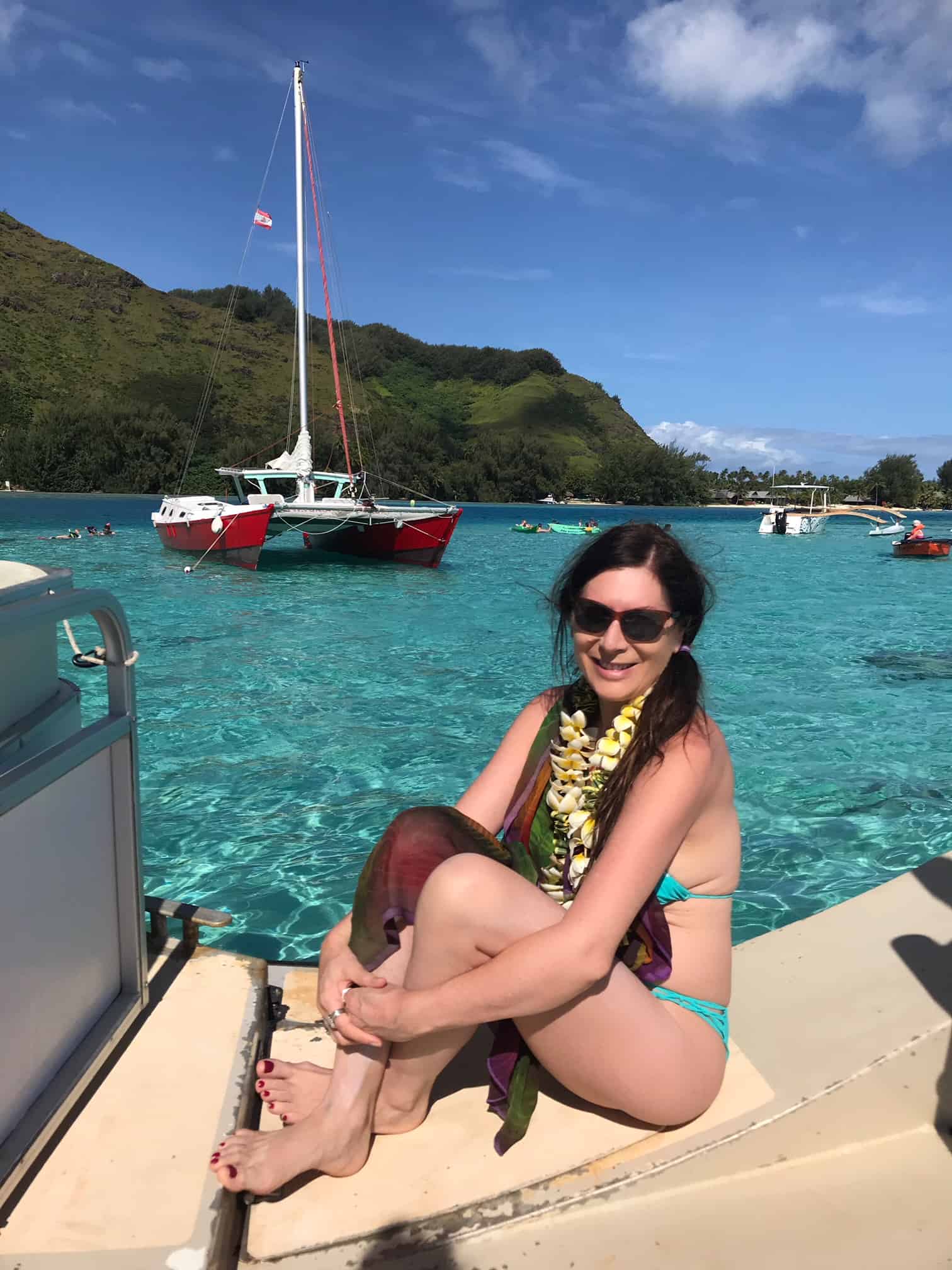
In the lagoon
In addition to sail boats, you can take other smaller tour boats to the Lagoon as well for snorkeling and swimming.
Views from the boat.
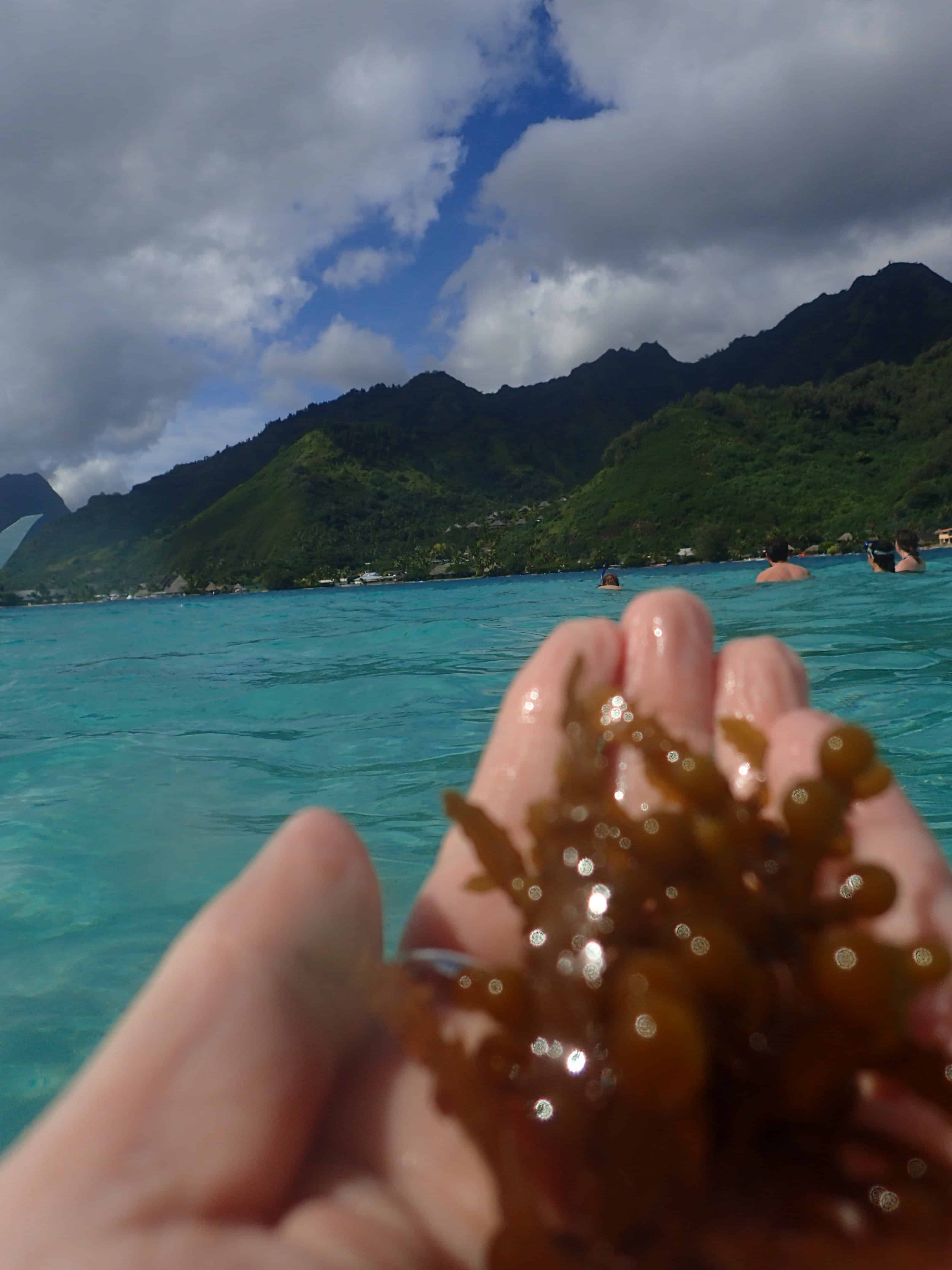
Mo’orea’s mountains off in the distance
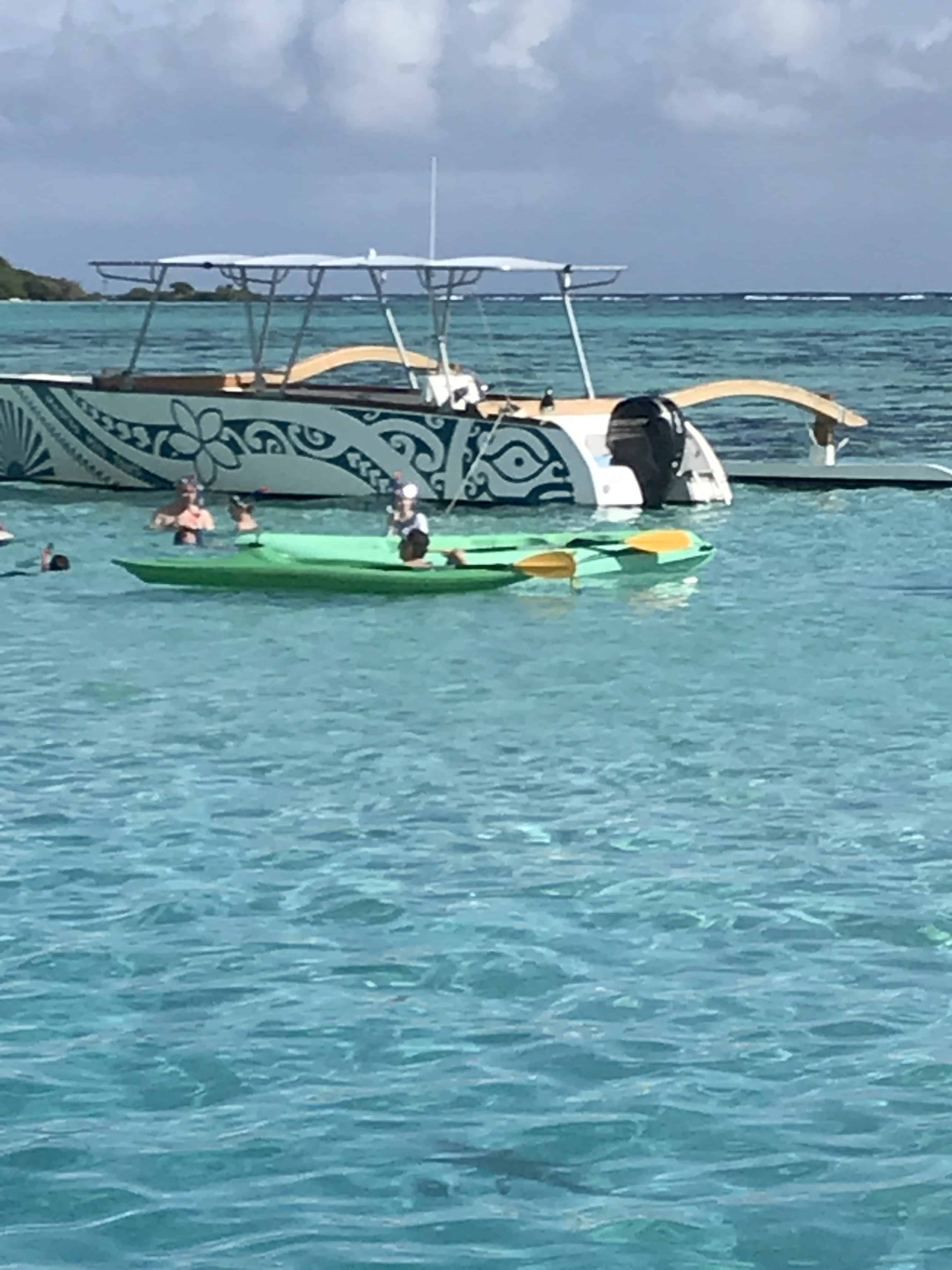
Views from the boat.
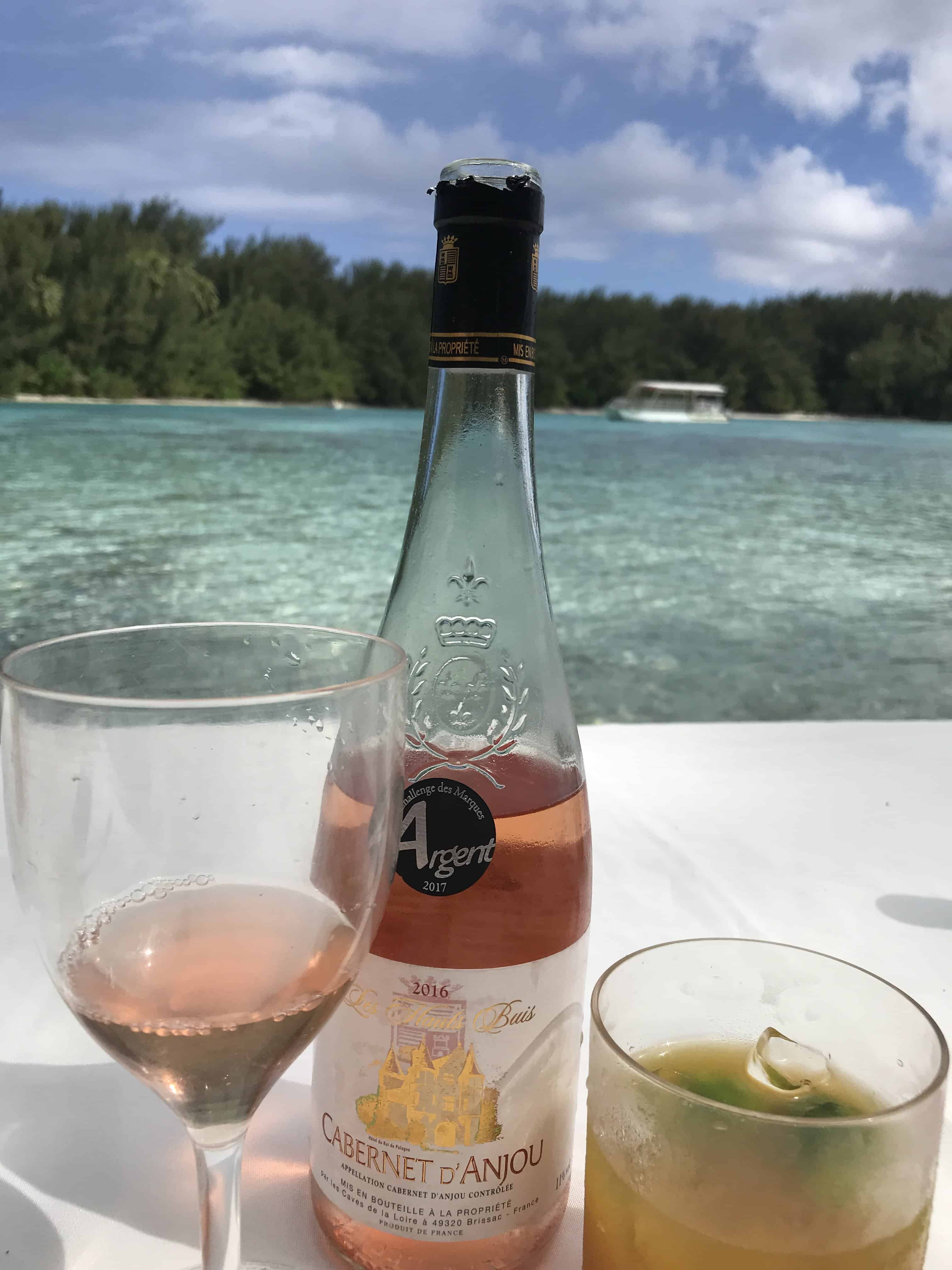
Rose on the beach!

An idea of bungalows you can rent over the water. 
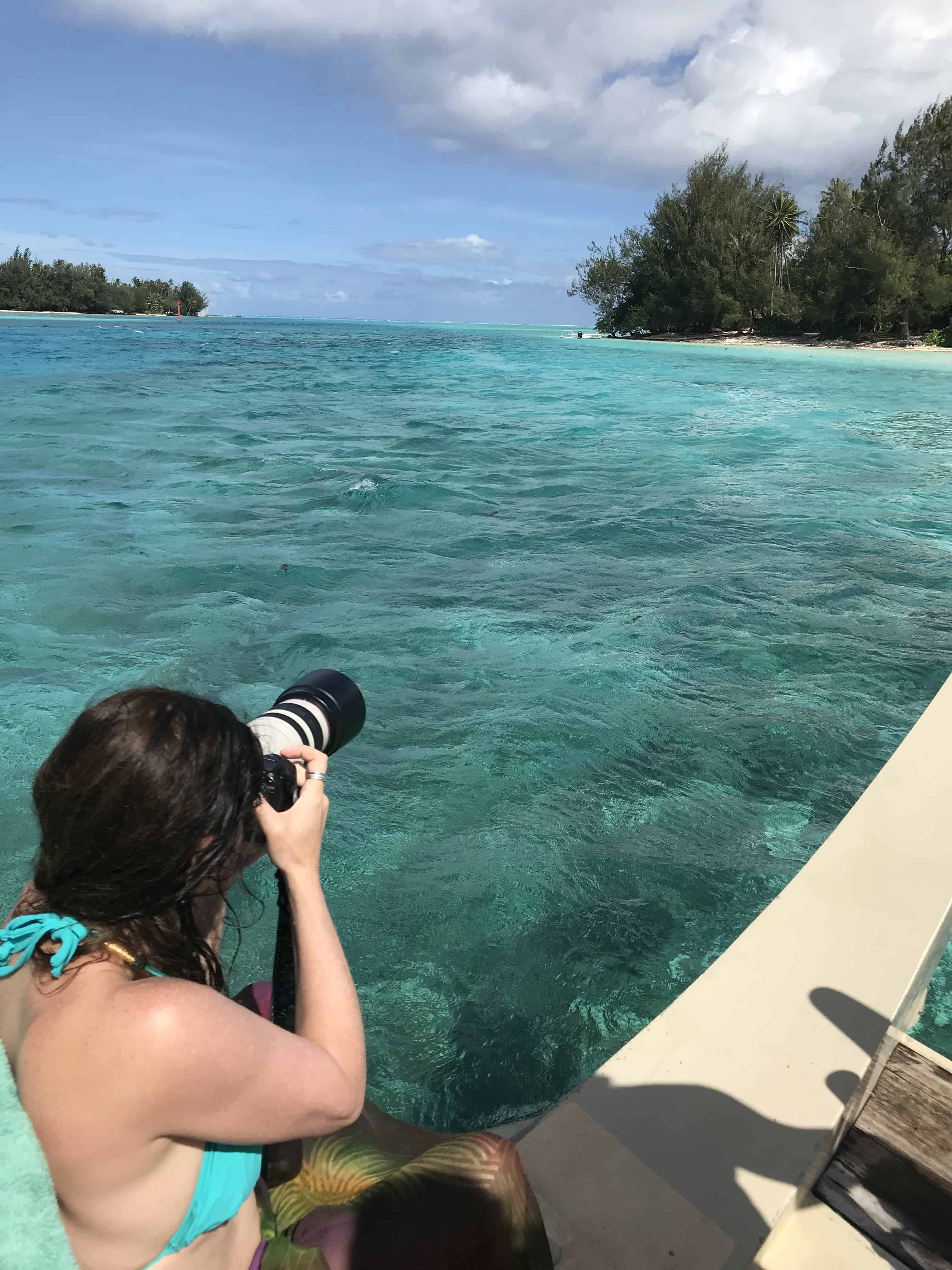

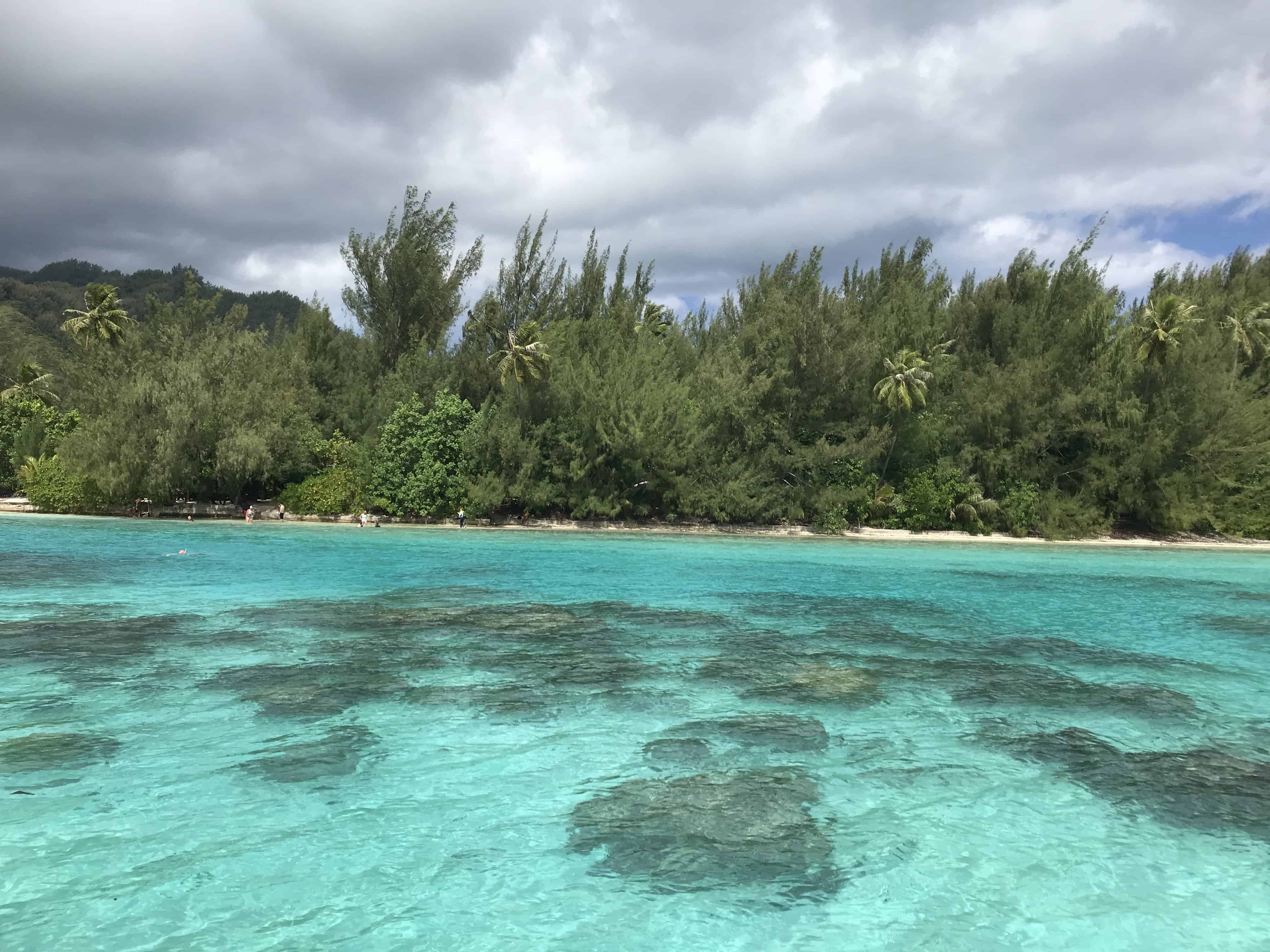
 Natural beauty goes on for infinity.
Natural beauty goes on for infinity.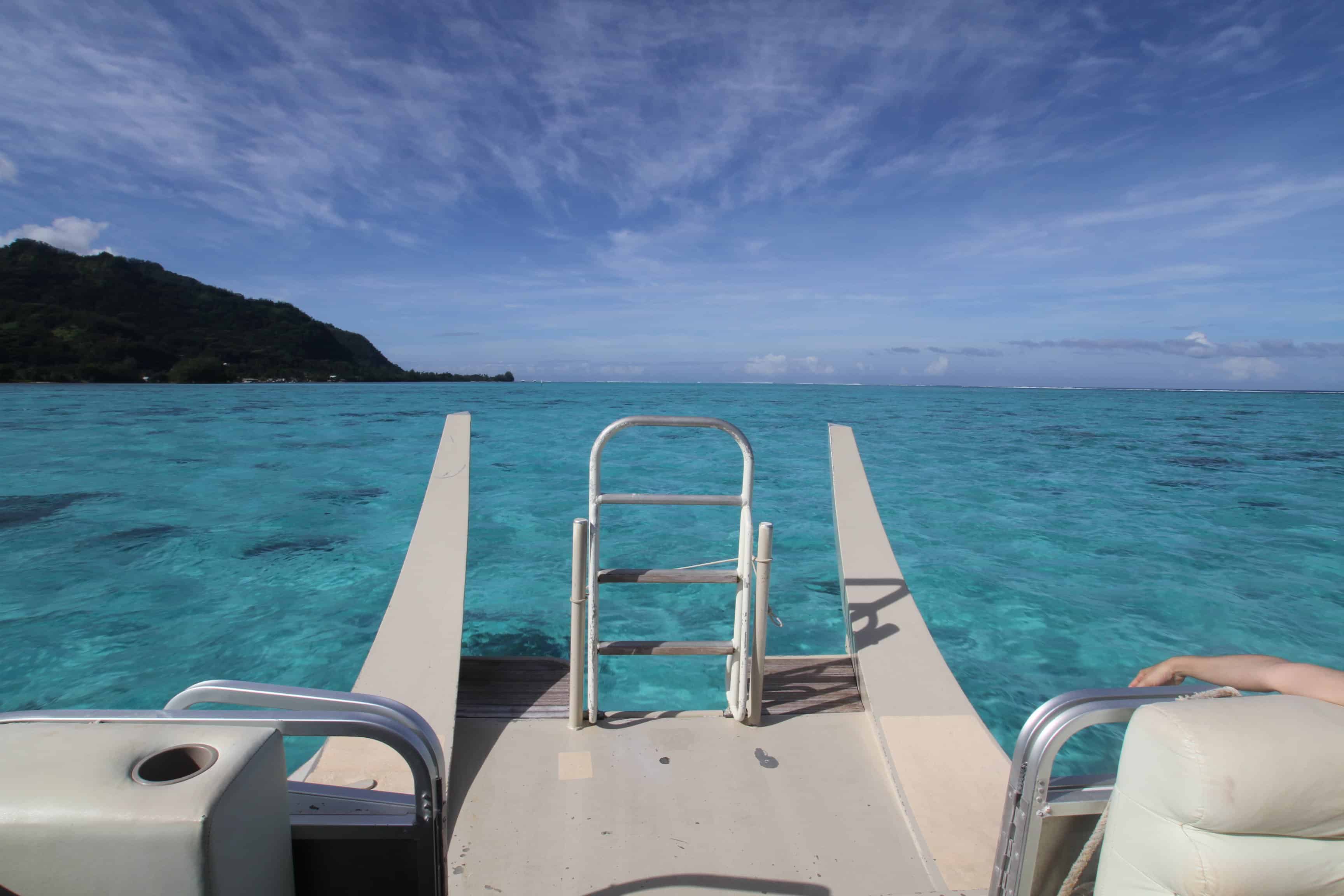
Beautiful aqua waters.

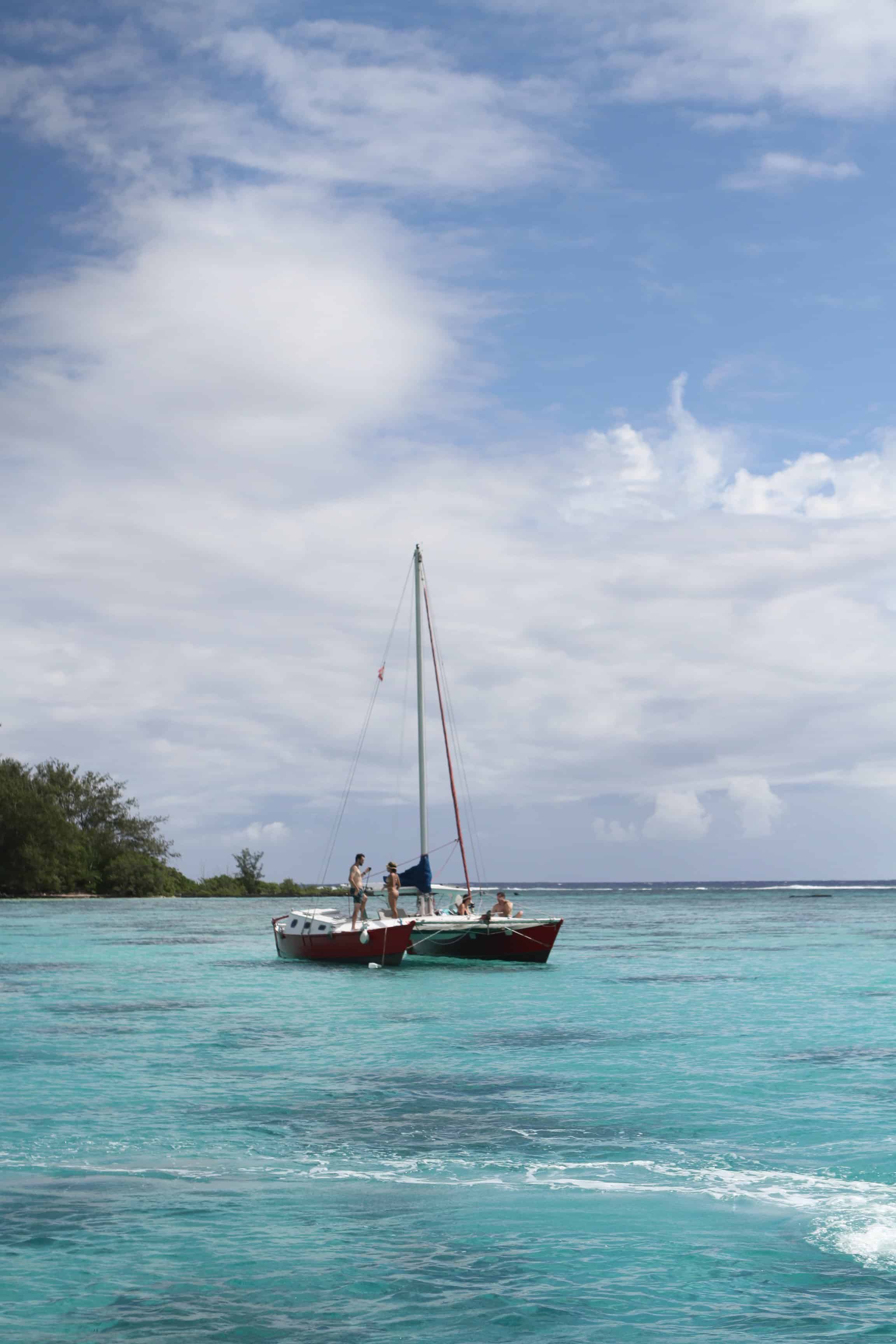
One of the most memorable experiences of the day was an afternoon lunch on an island beach — talk about pure bliss! Brunch consisted of fresh salmon and chicken toasted on an open grill and veggies.
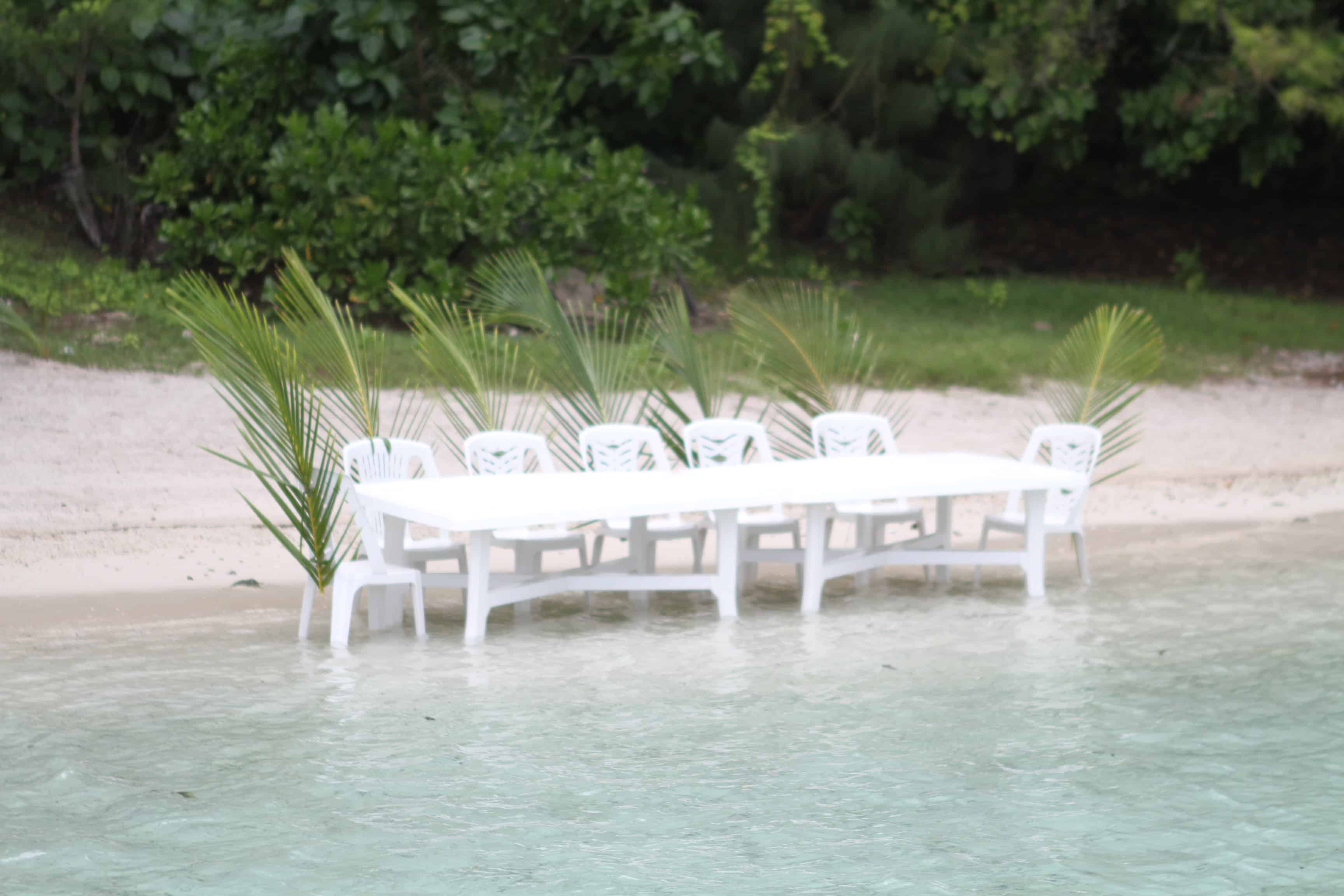
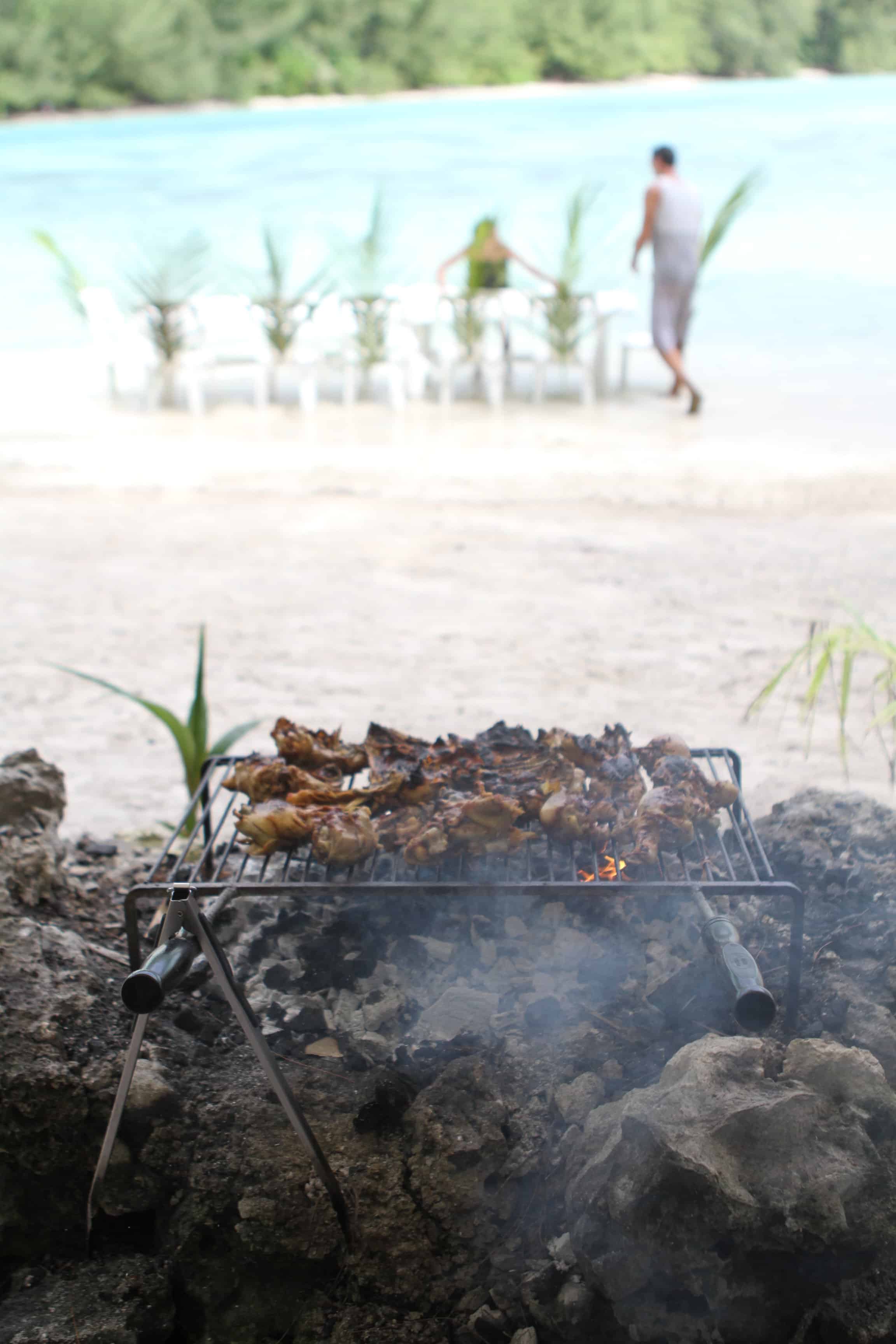
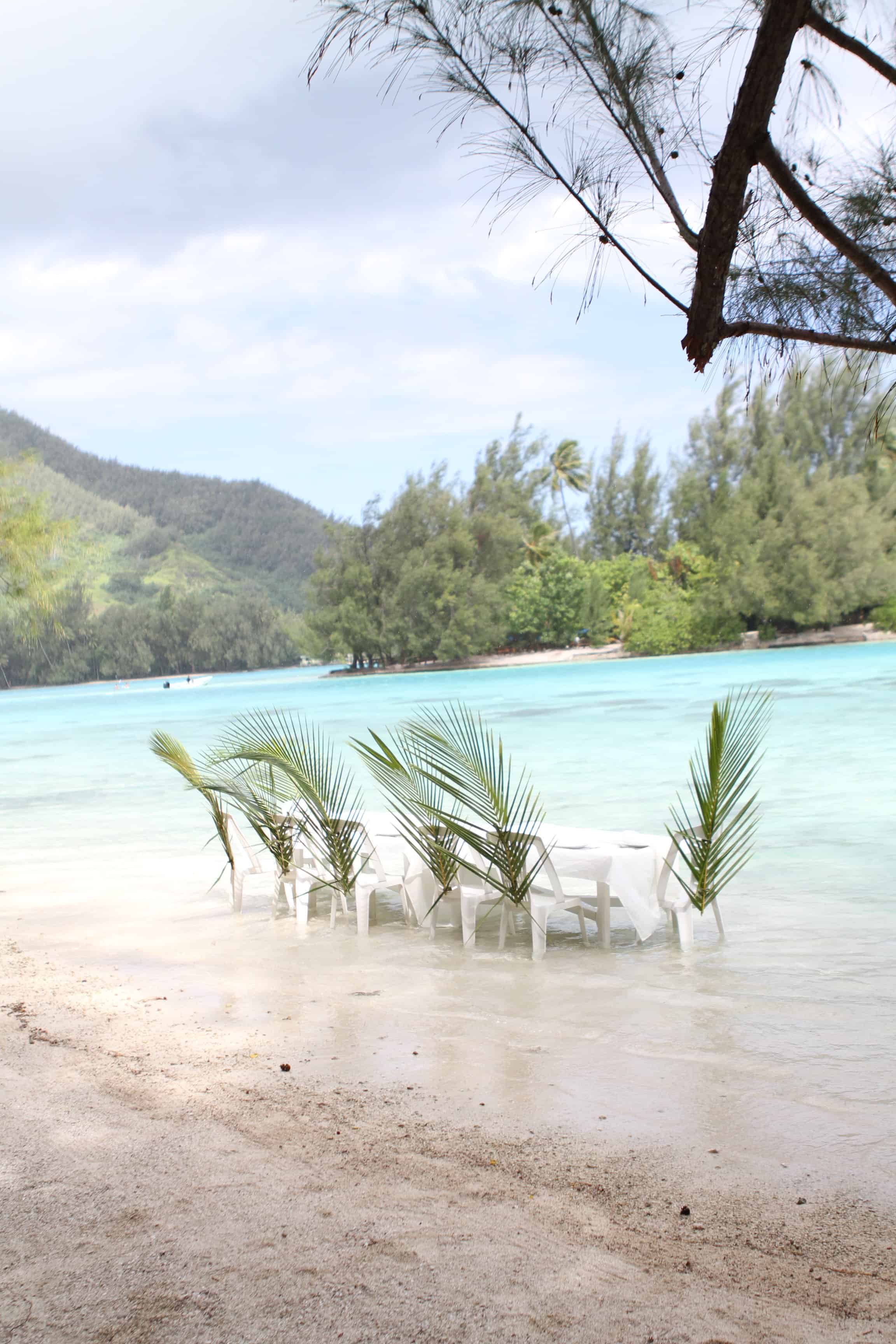
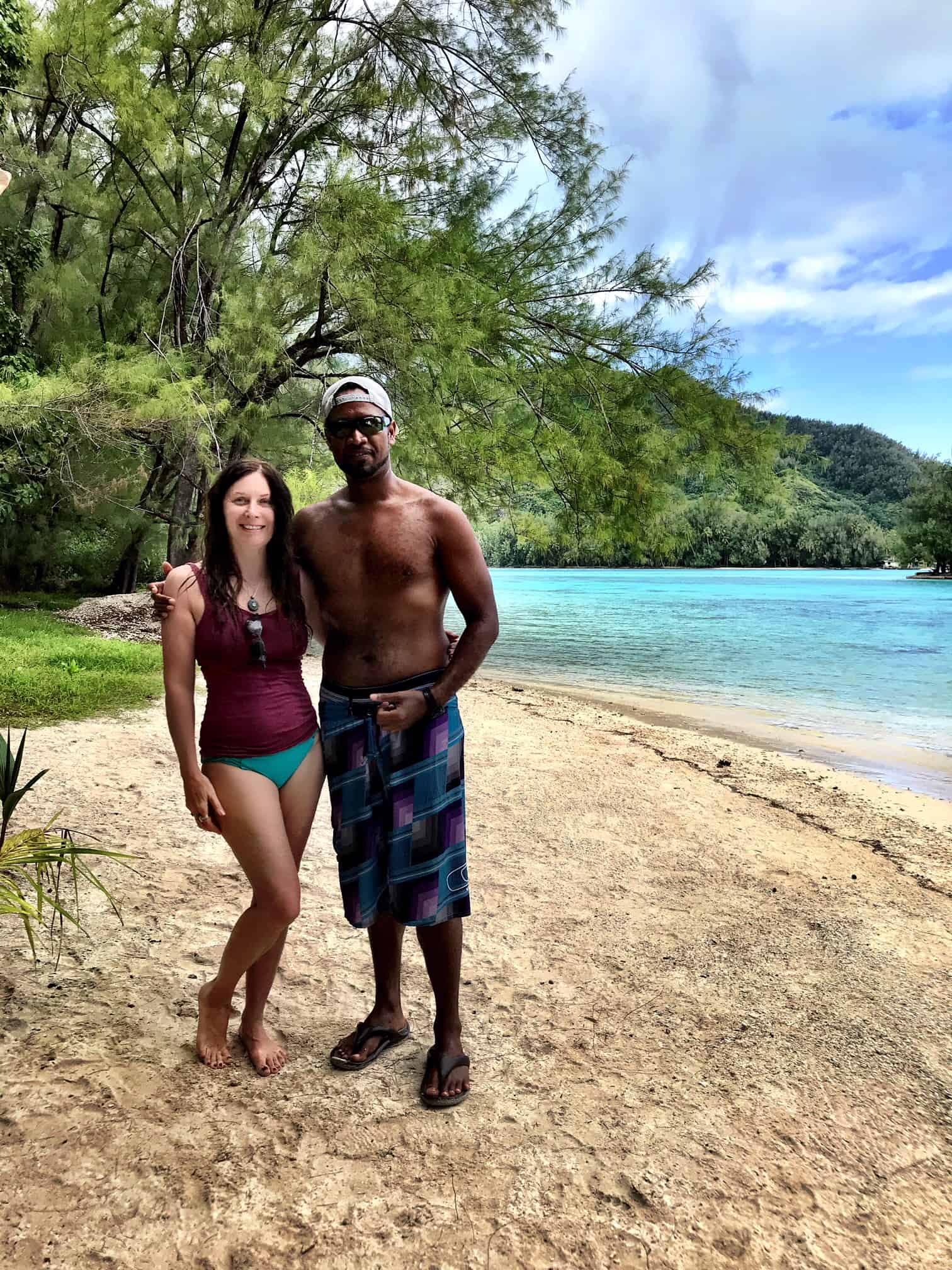
Bartender and chef, island style
While some of the reef is dead here, there are local programs to replace and restore the coral.
Water Activities
There are plenty of water activities on the island, whether at the Lagoon, other bays and even at some of the more popular hotel destinations like the InterContinental which offers snorkeling, kayaking and paddle boarding directly from the beach for guests.

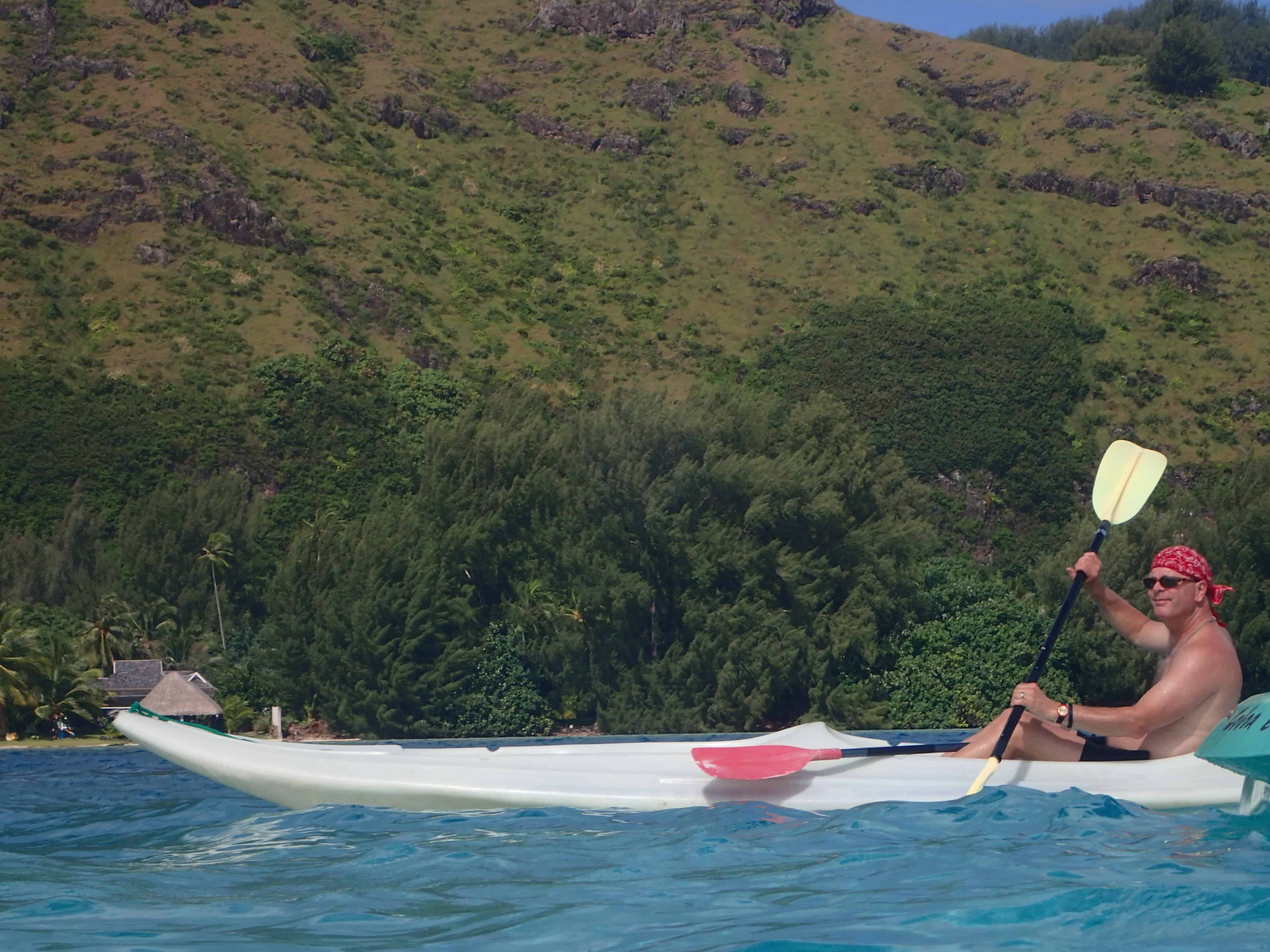
You can kayak all around the island of Mo’orea
You can also get out onto boats to see whales and dolphins.
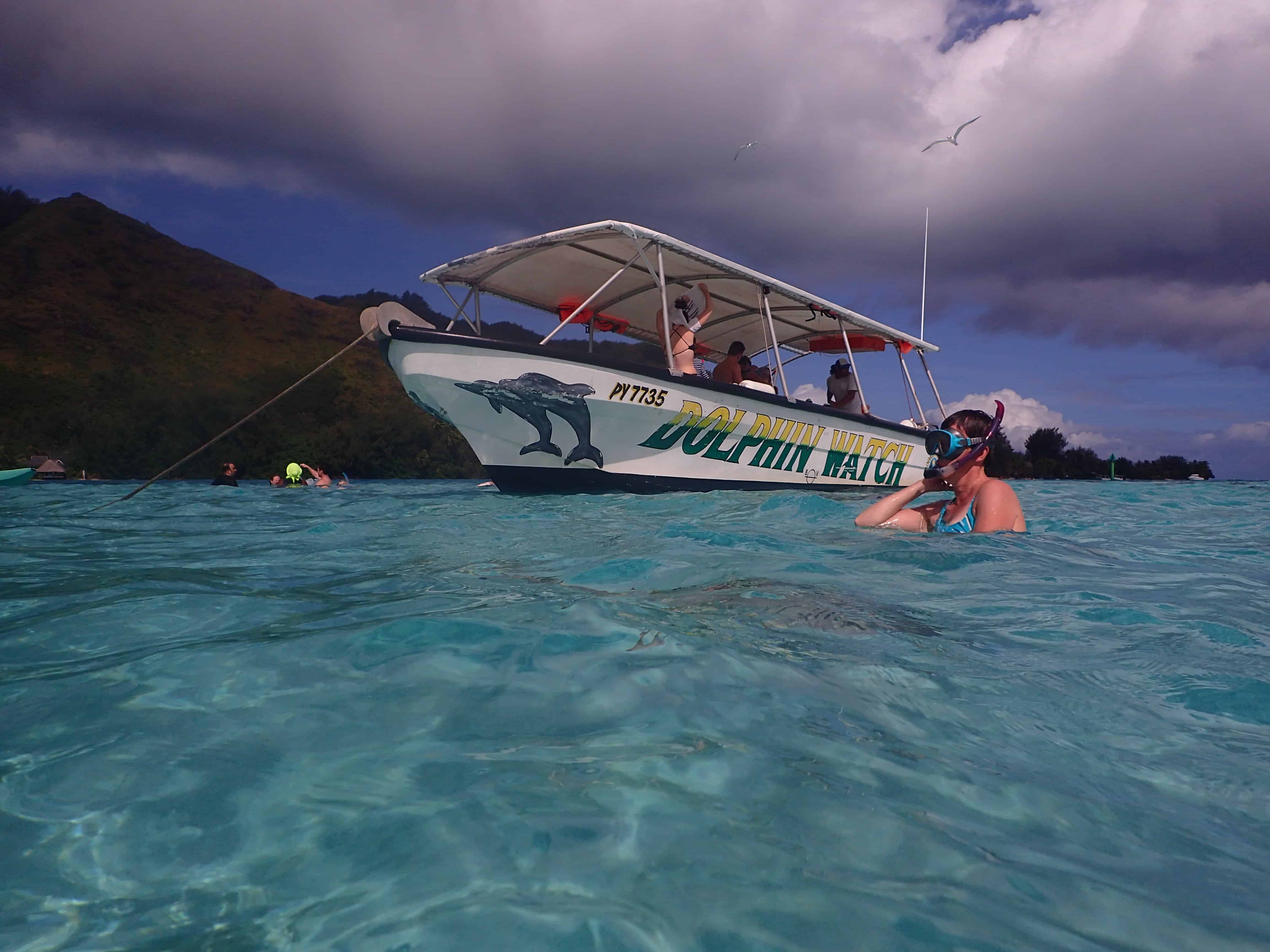
Dolphin watch
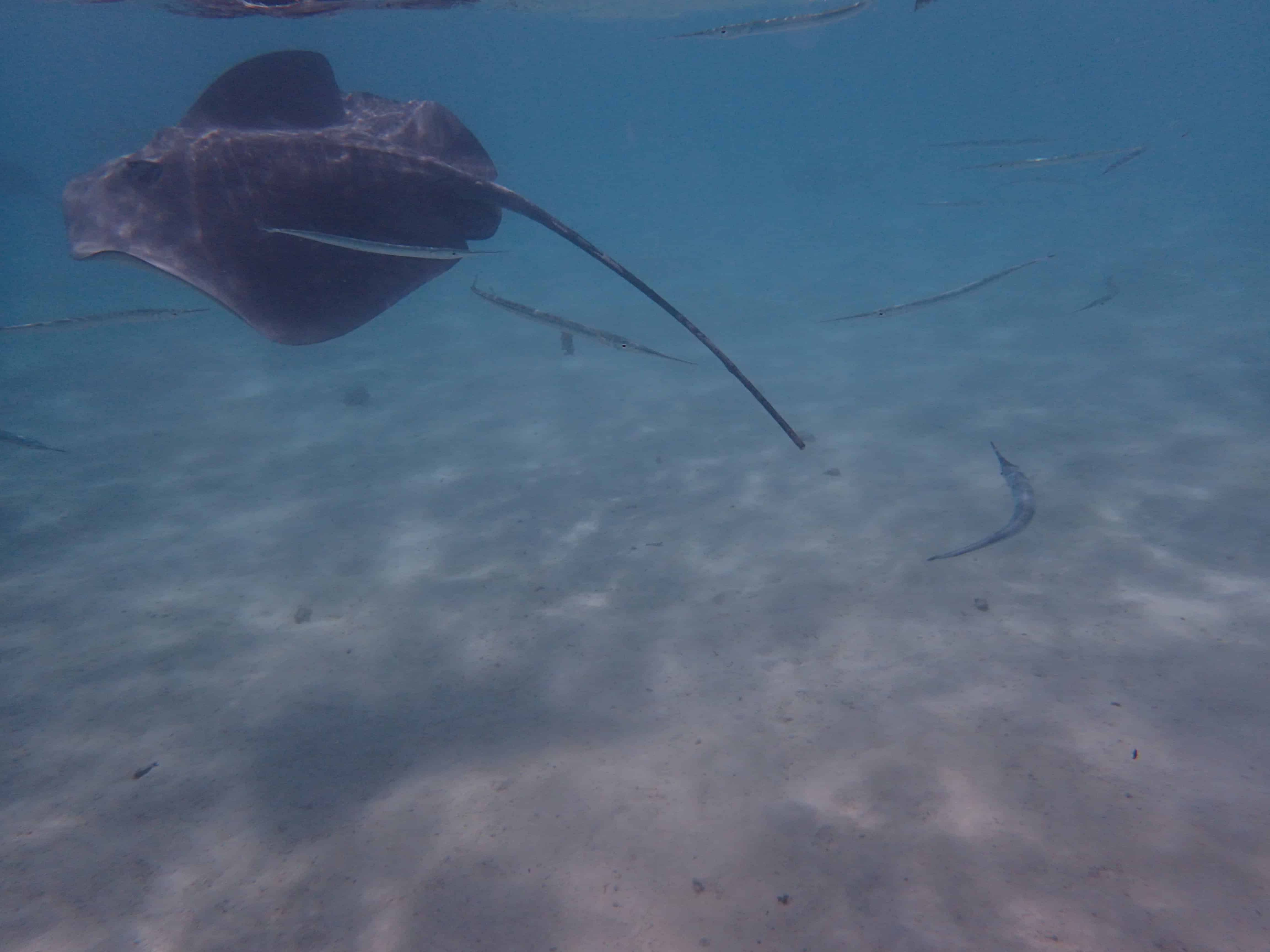
Underwater magic

Perfect views from secluded swimming spots
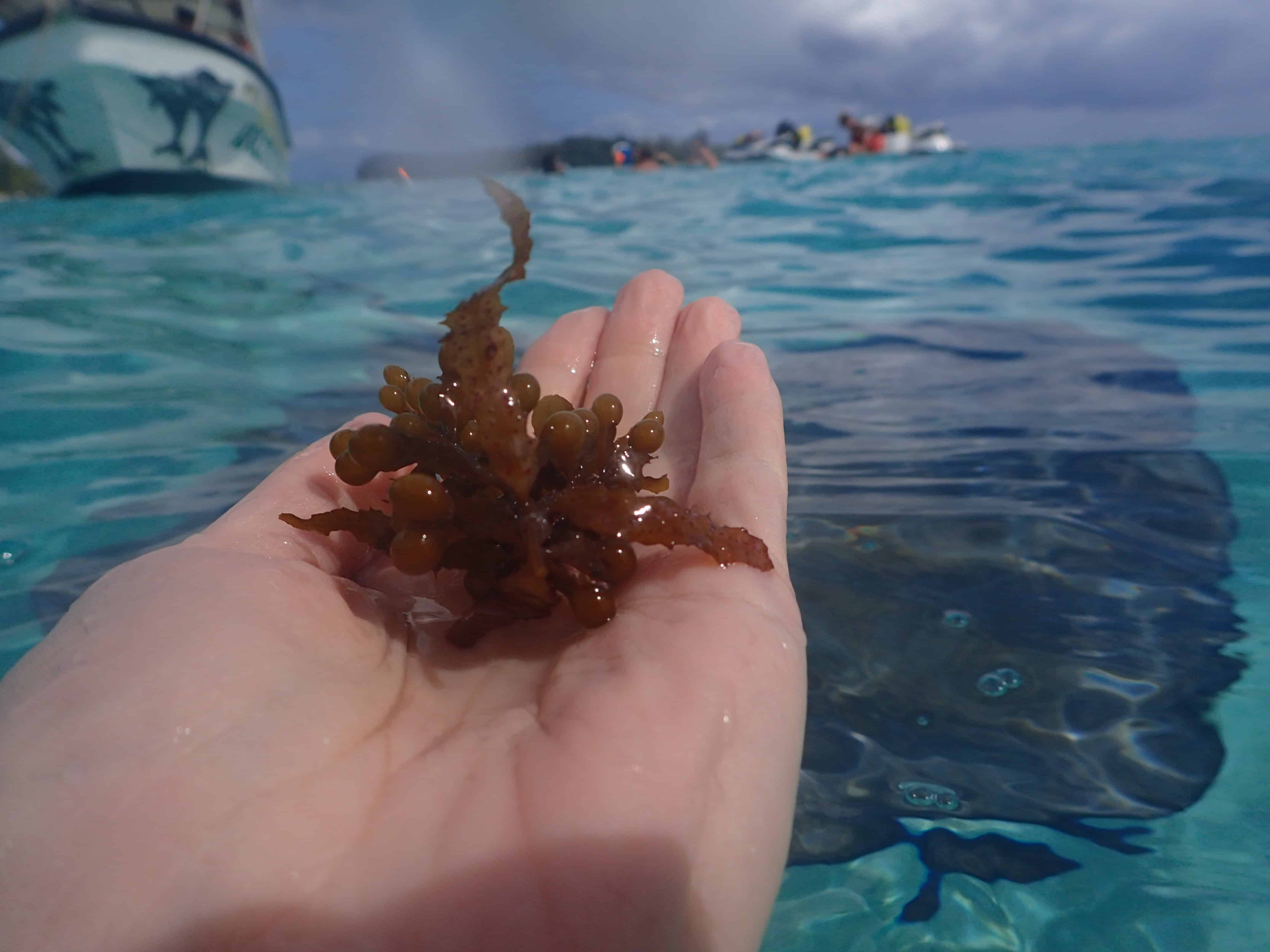
Easy to find magic under Mo’orea’s waters
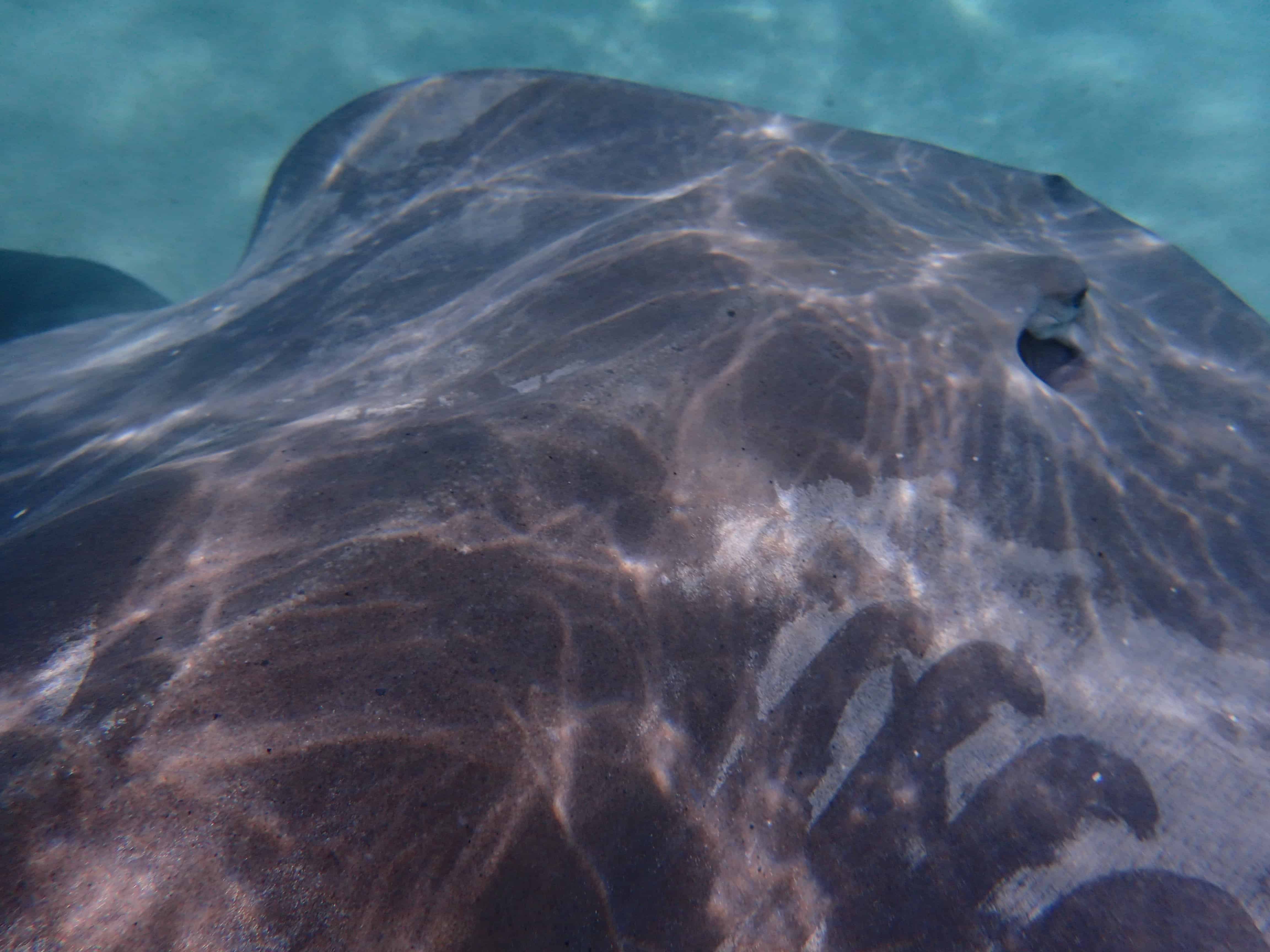
Stingrays can be found in abundance
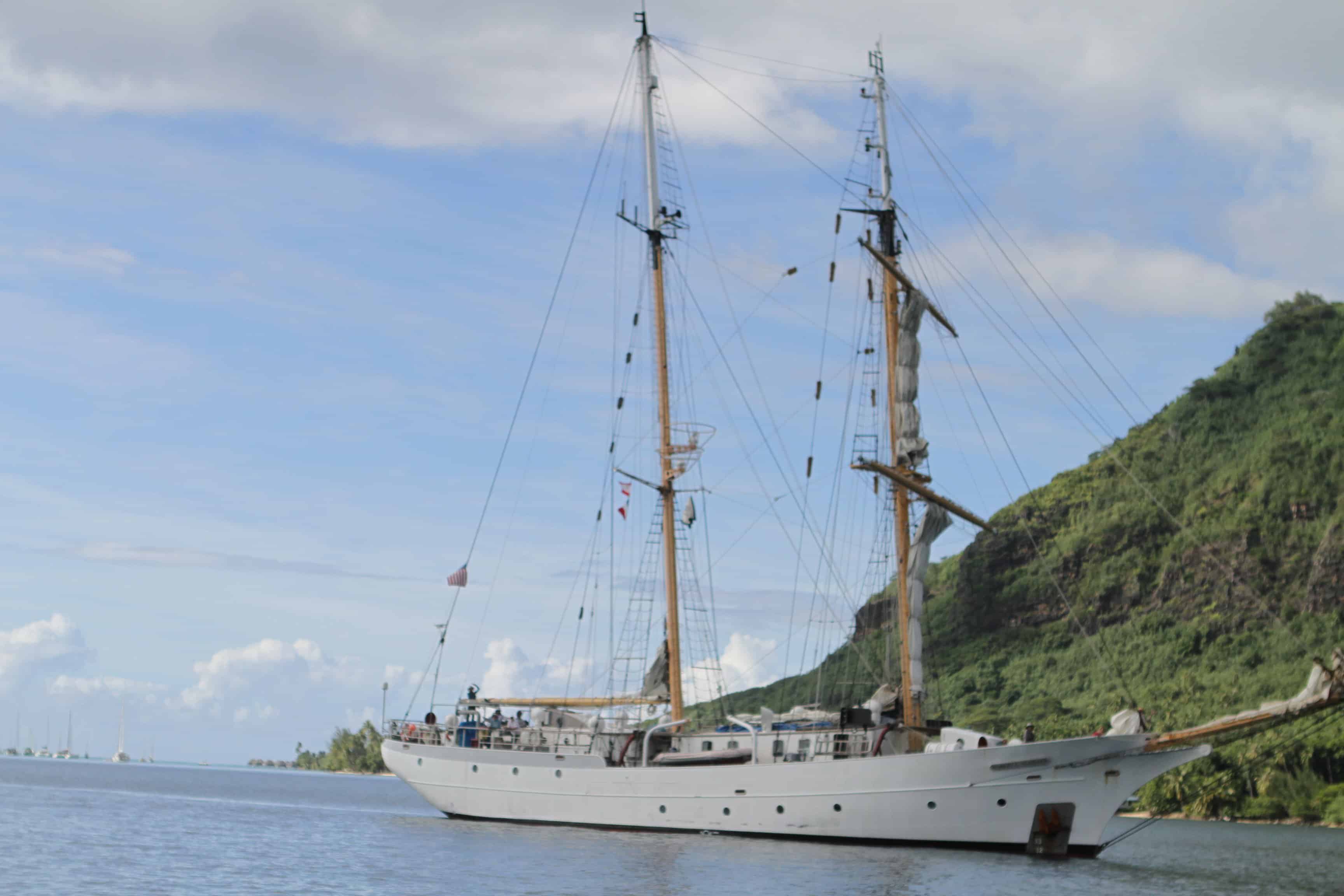
Other sailing ships are available for rent or for cruising!
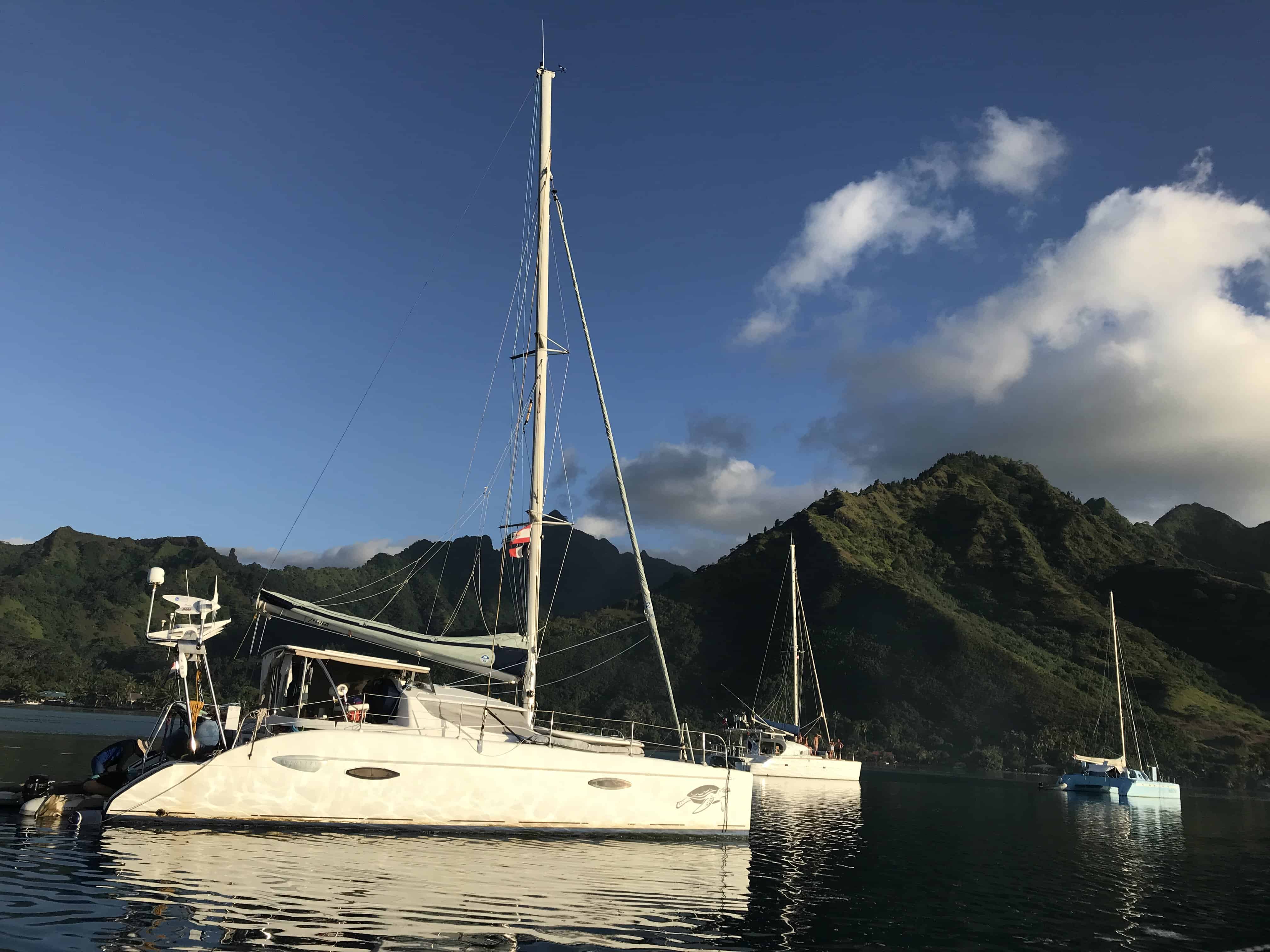
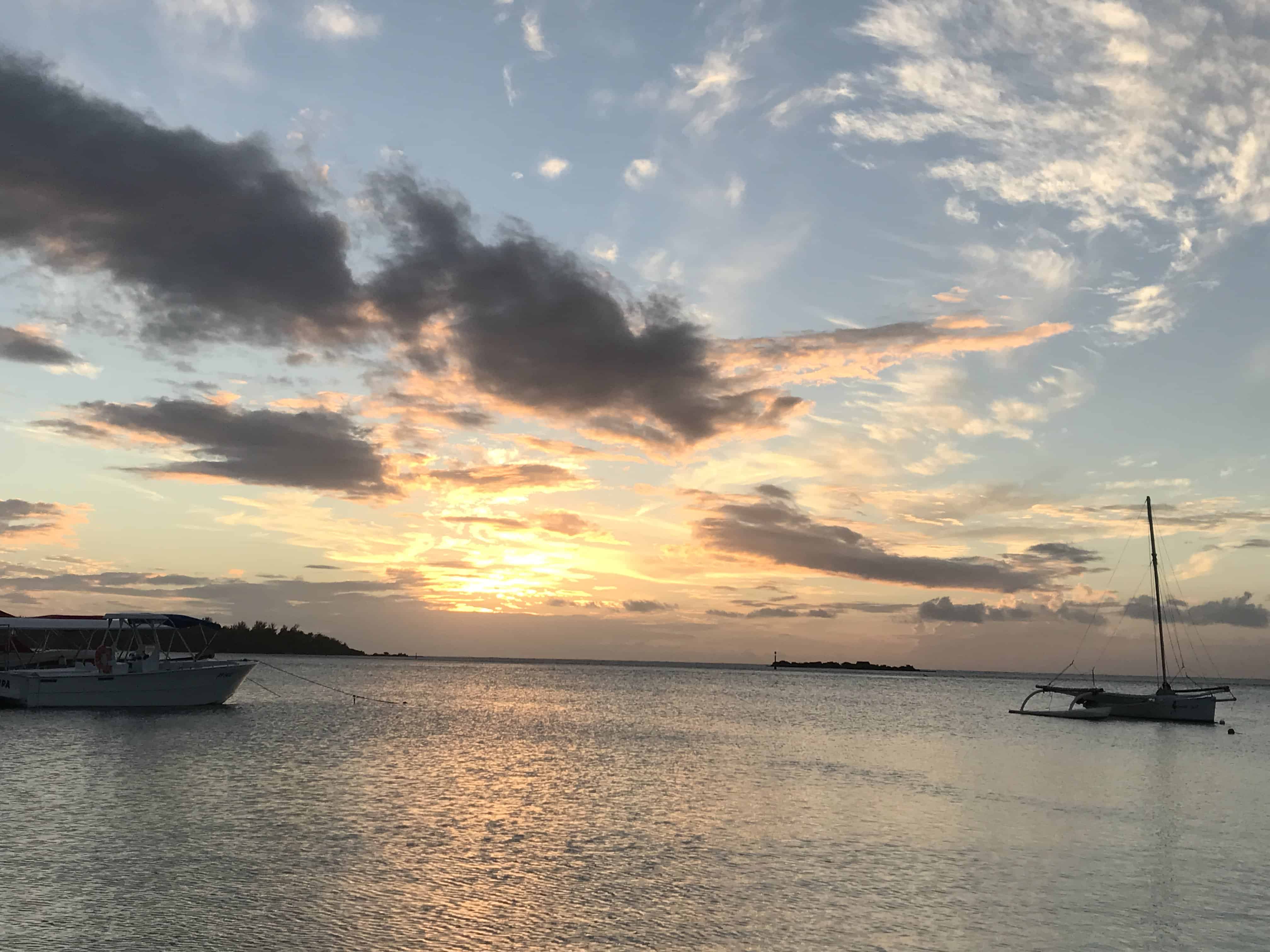
Sunset in Mo’orea
Beach Time at Smaller Hotels
Although we stayed at the InterContinental this time around, I was pleasantly surprised by the quality and beauty of some of the smaller hotels and pensions. We visited several during our stay but the Hibiscus Hotel right on the beach is a special place.
The water is pure and it also appeared to be a somewhat protected area — soft ocean breezes without a lot of wind, so it’s a great spot for swimming and snorkeling straight from the beach.
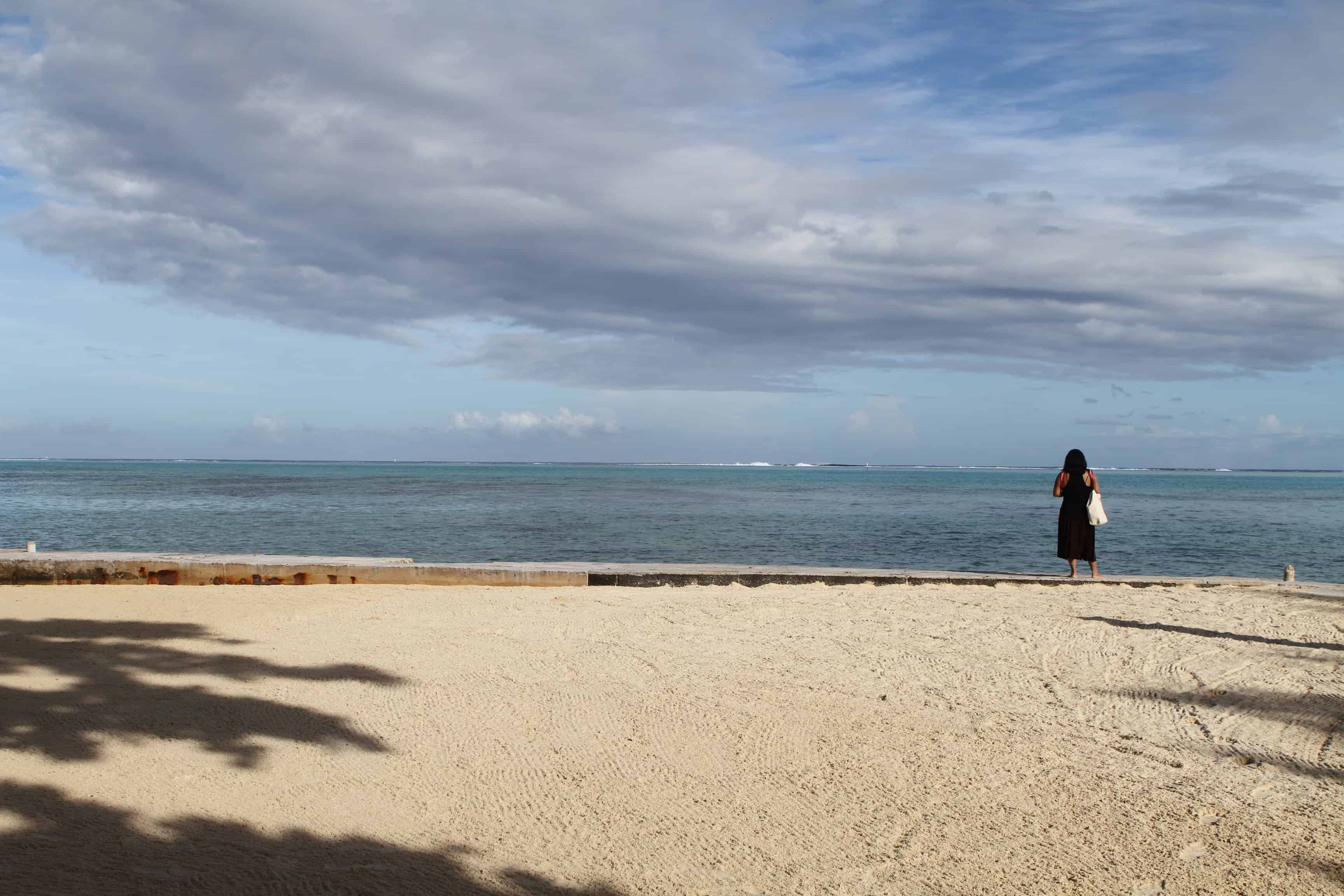
View from the stairs that lead down to the beach at the Hibiscus

The beach at the Hibiscus
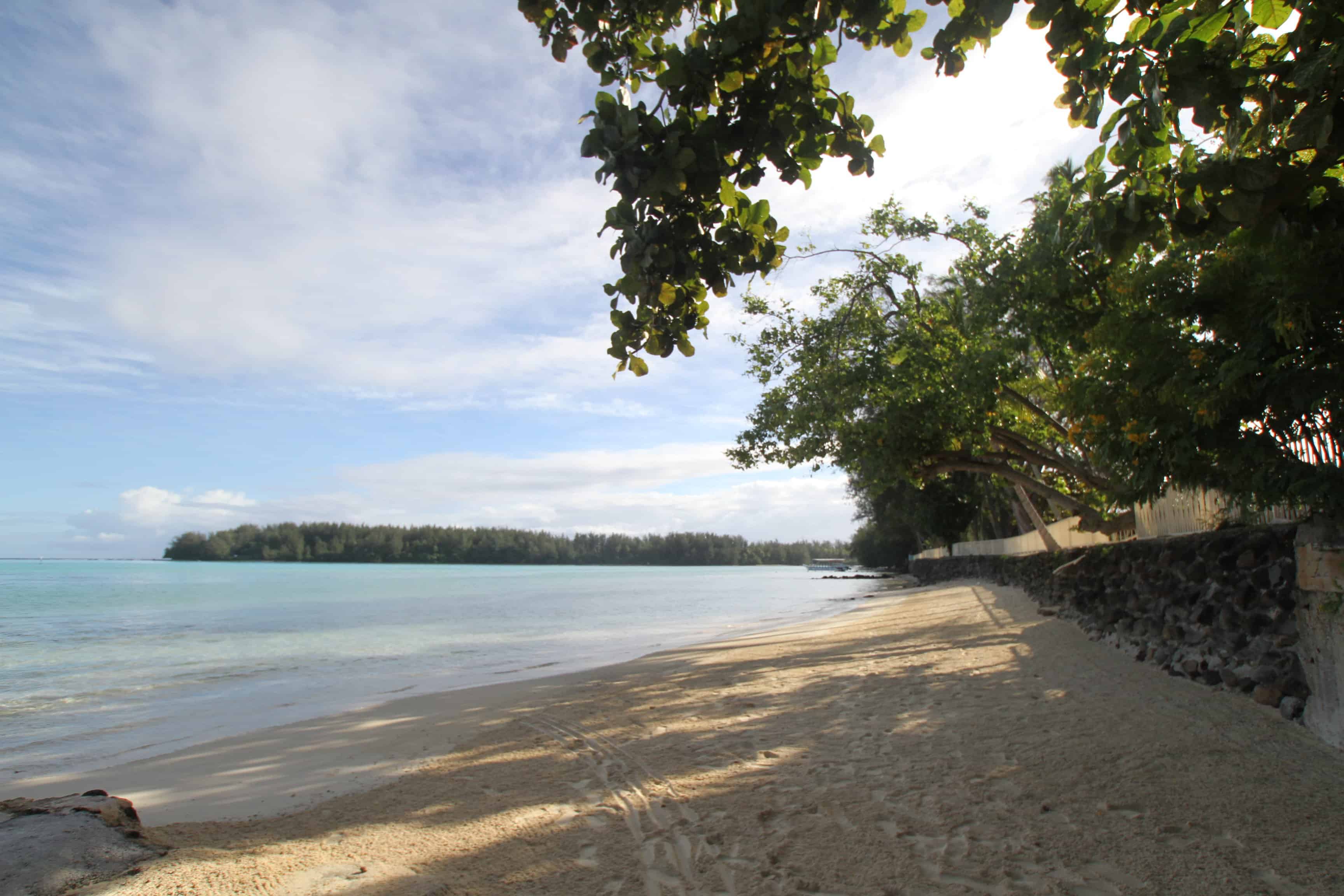
Beautiful views
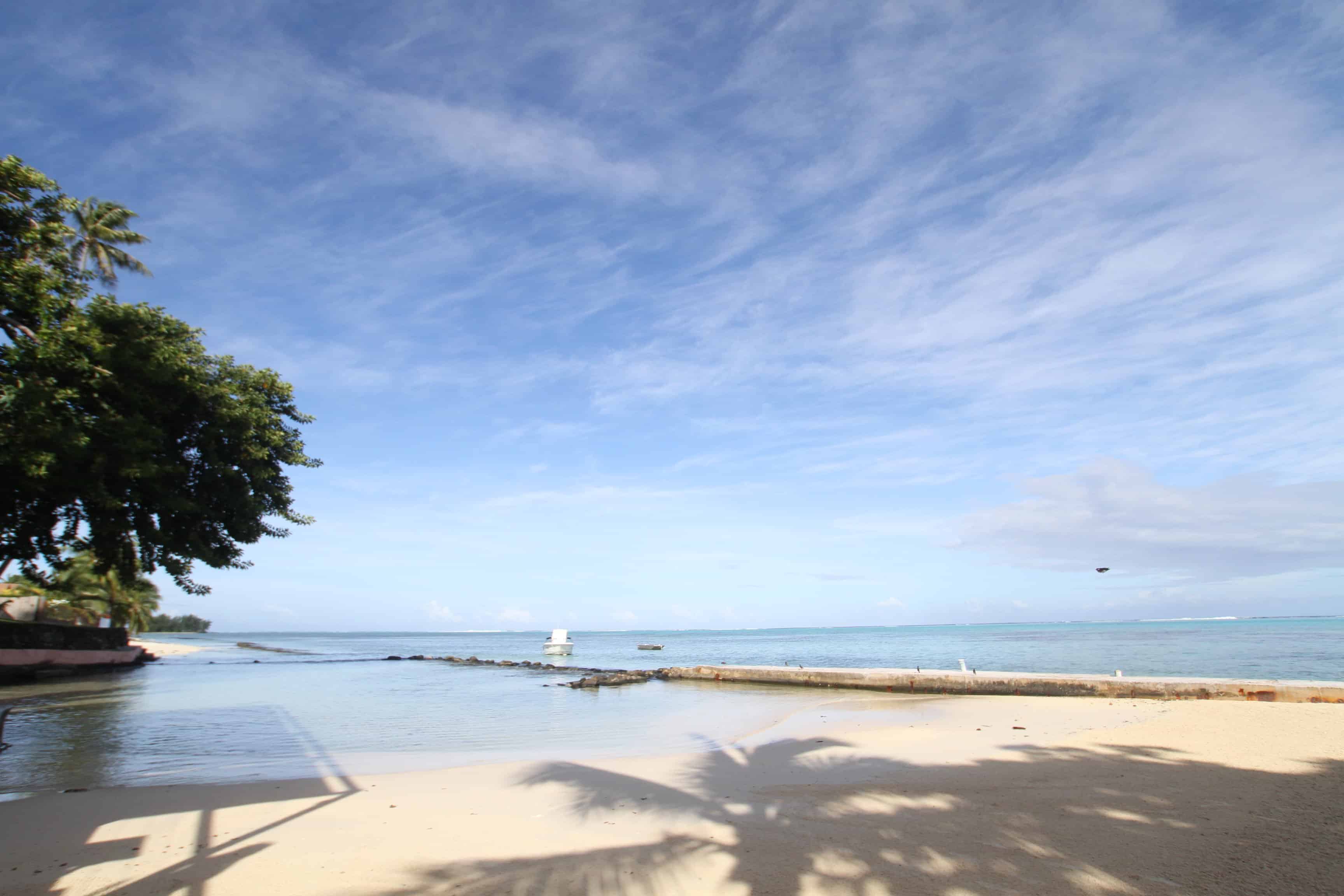
Look at the pristine sand
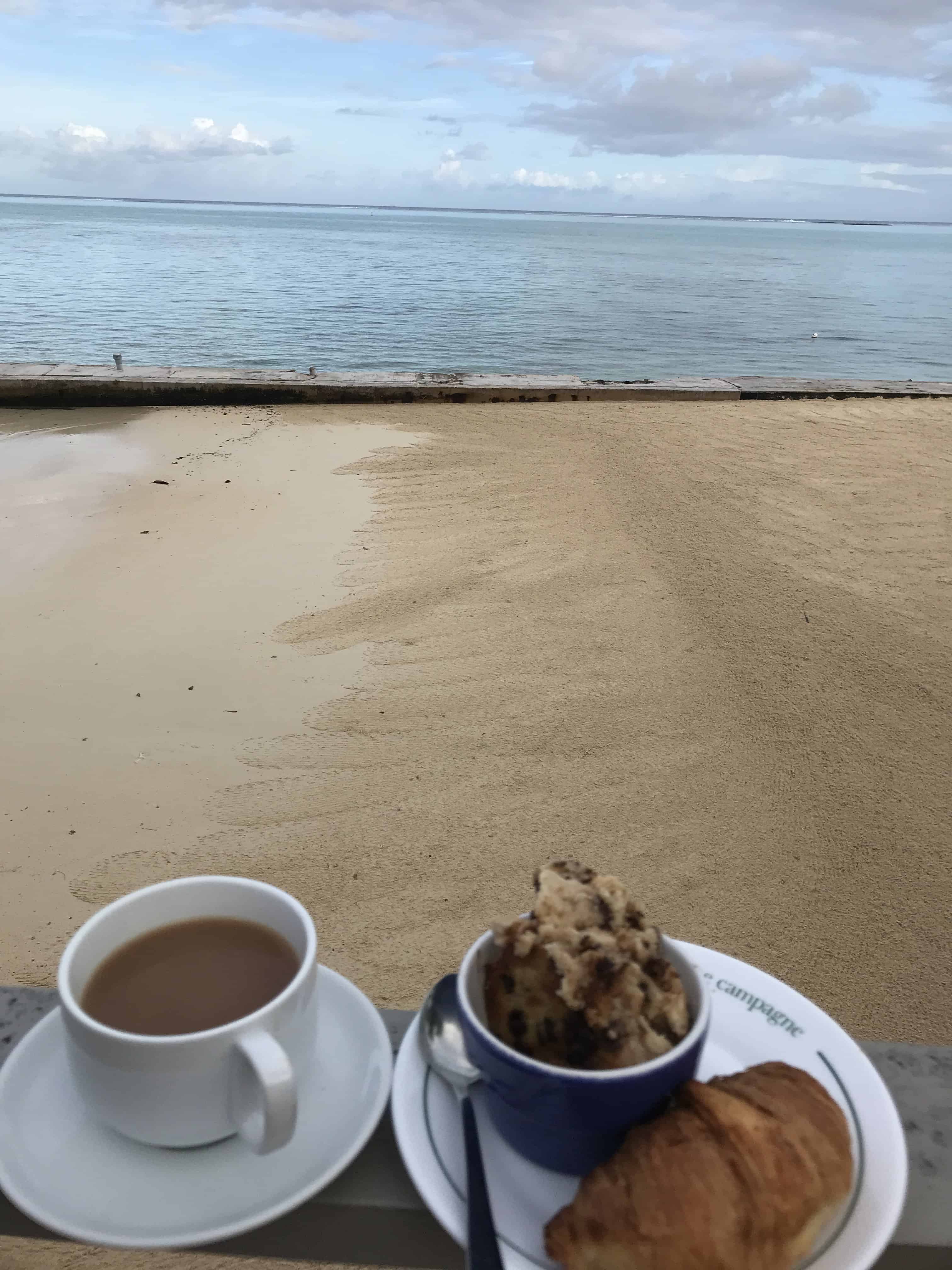
Imagine having bread pudding, croissants and coffee for breakfast on a perfect beach like this one?
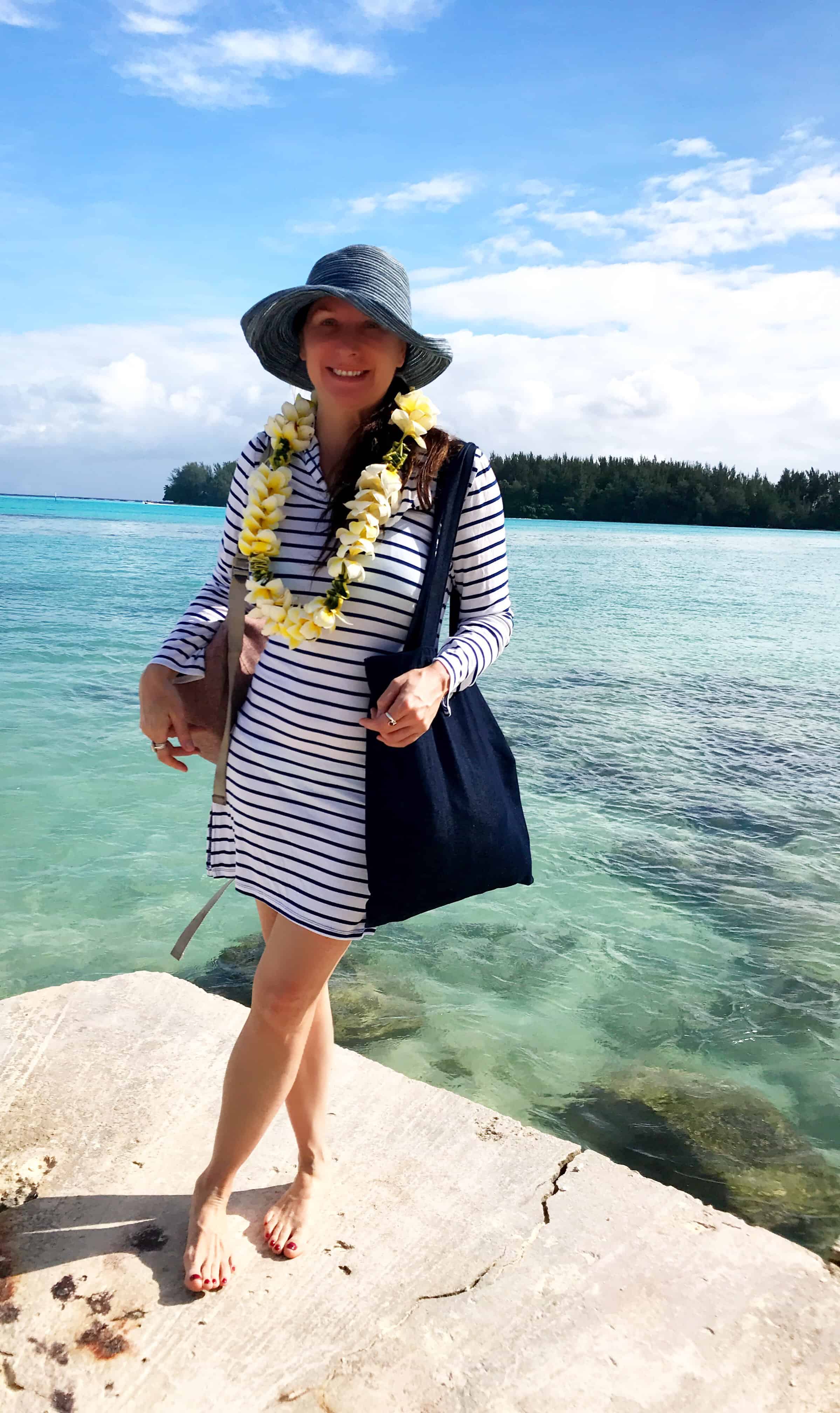
Sunburned and happy at Hotel Hisbiscus
Dolphins & Turtles
If you are a turtle lover, you’ll love the Turtle Center at the InterContinental in Mo’orea. This is a particularly good place to visit if you’re traveling with children. The Turtle Center is a rehabilitation centre which was established in February 2004 by the Te Mana o Te Moana Association, in partnership with the Ministry of the Environment in an effort to protect the French Polynesian sea turtles.
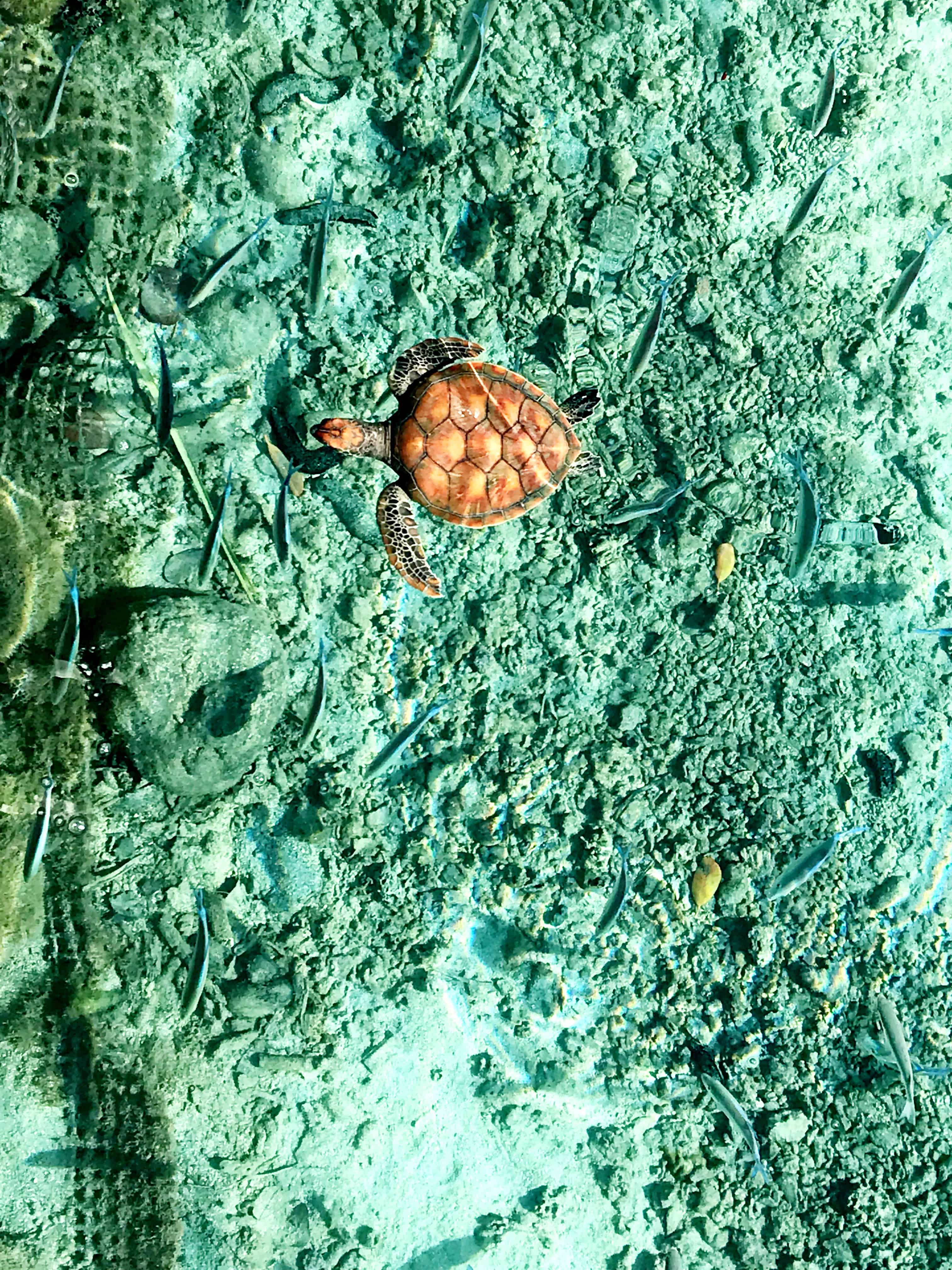
One of their turtles taken on site from my iPhone
On the five sea turtle species found in the French Polynesian waters, the Clinic has welcomed four different species in 11 years : the green turtle, the hawksbill turtle, the Loggerhead sea turtle and the Olive turtle. Most of the time, you will encounter the green turtle and the hawksbill turtle, which are the ones we saw during our stay there. Read more about the foundation here.
If you love turtles, chances are you have a soft spot for water and marine life. If this is the case, you’ll be thrilled to learn that they also have a Dolphin Center right on the premises. So cool, right? We thought so.
The Moorea Dolphin Center is a marine mammal’s education center which houses three bottlenose dolphins: two males, Lokahi and Kuokoa born in a Hawaiian facility, and one female, Hina, a San Diego US Navy retiree.
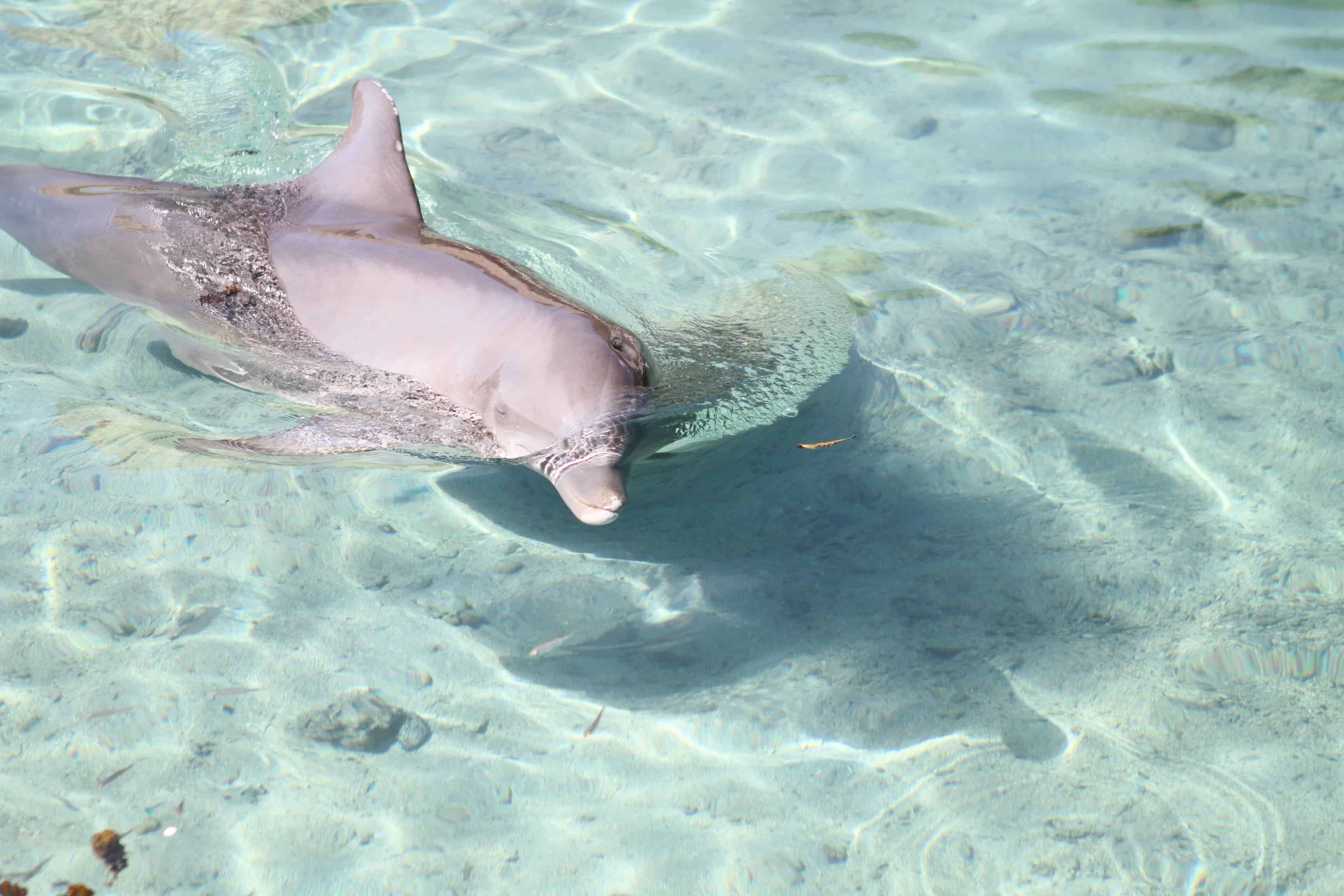
Dolphins at the center
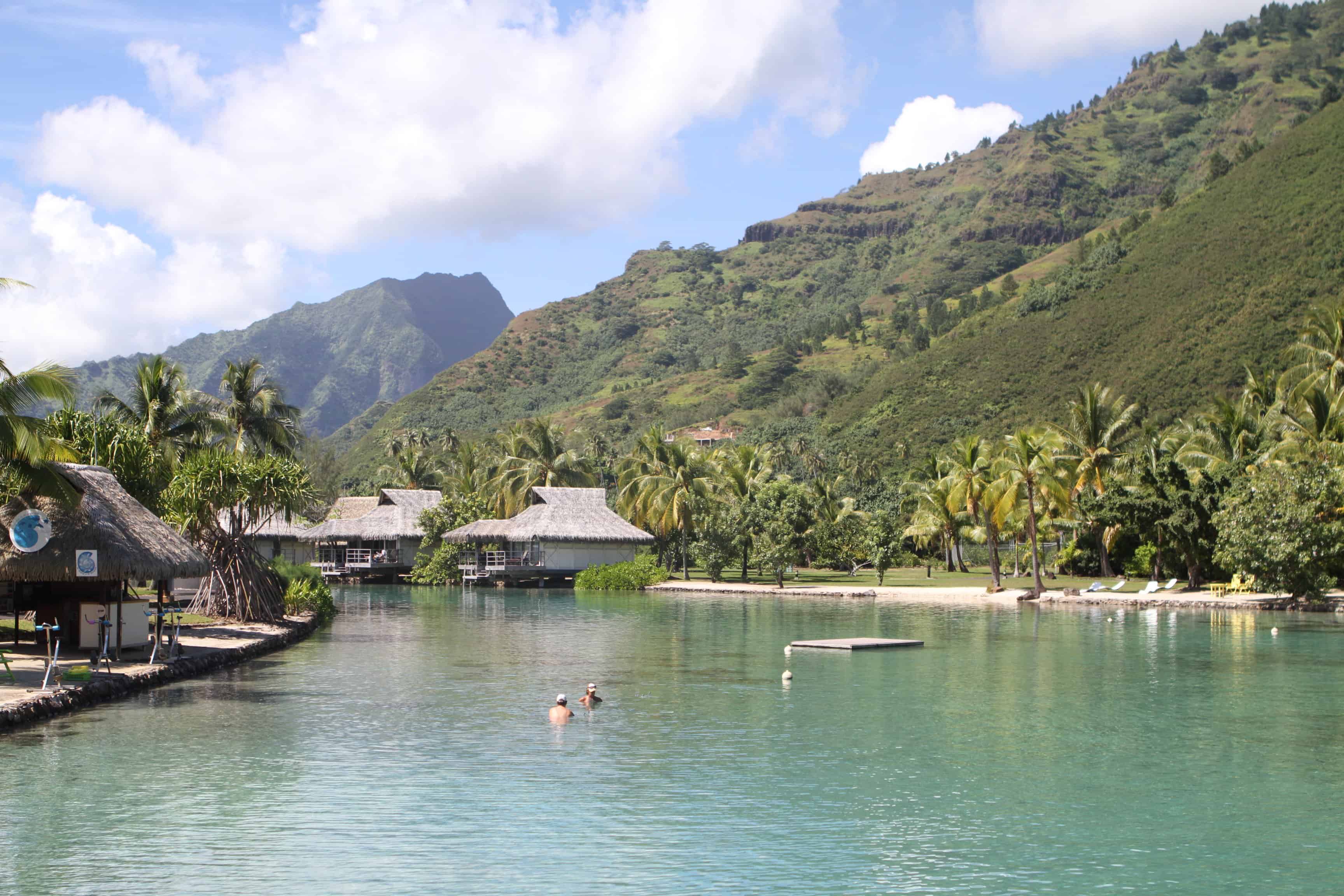
Swimming area at the InterContinental in a sheltered area very near the Dolphin Center.
They offer educational and interactive programs, and you can experience a dolphin up close and I mean, really up close. You can swim with them in one of their programs, or in the one we did, give them a kiss, pat their tummy, hug them around the center and feel their fins.
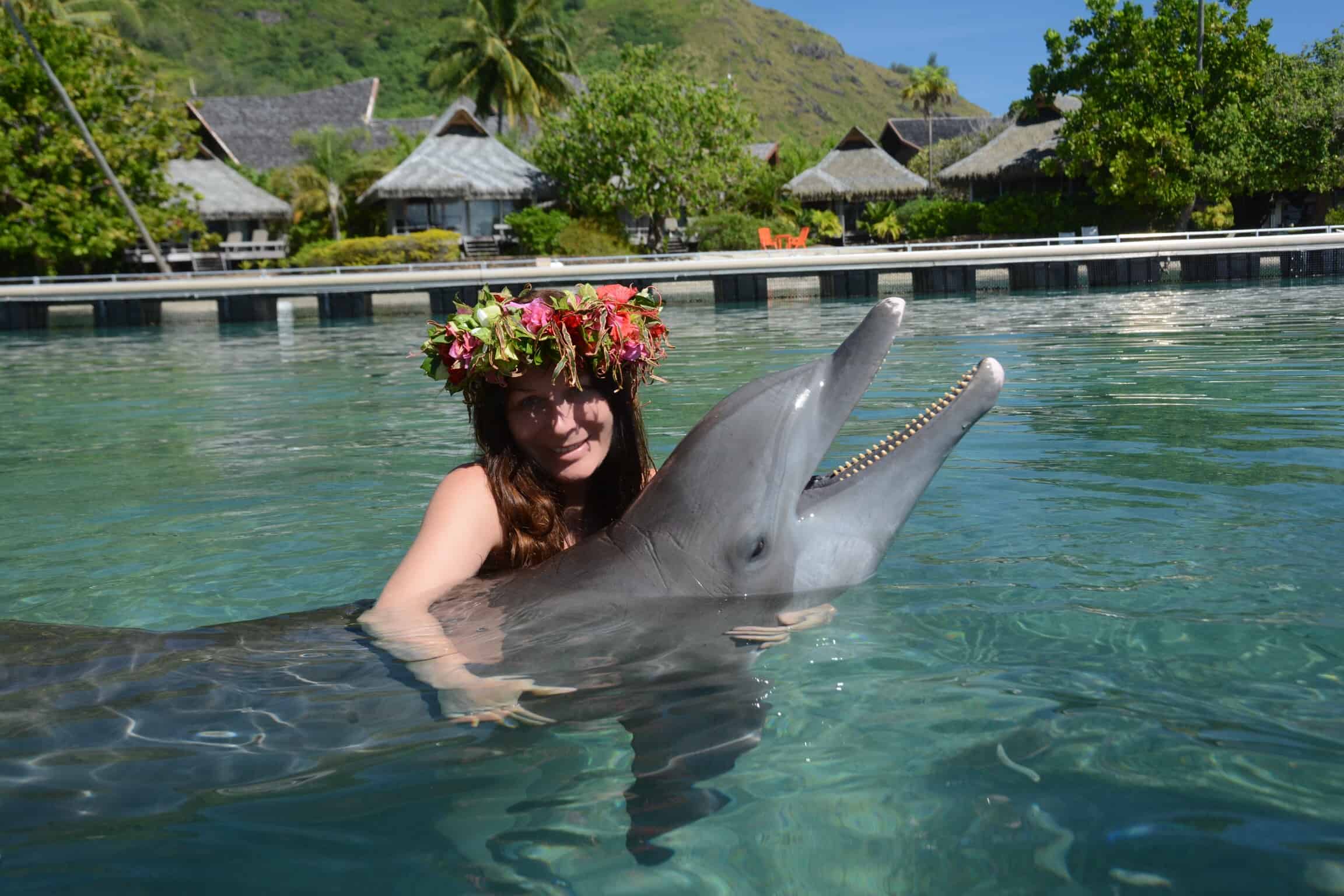
Hugging a dolphin at the Dolphin Center. Courtesy: Dolphin Center.
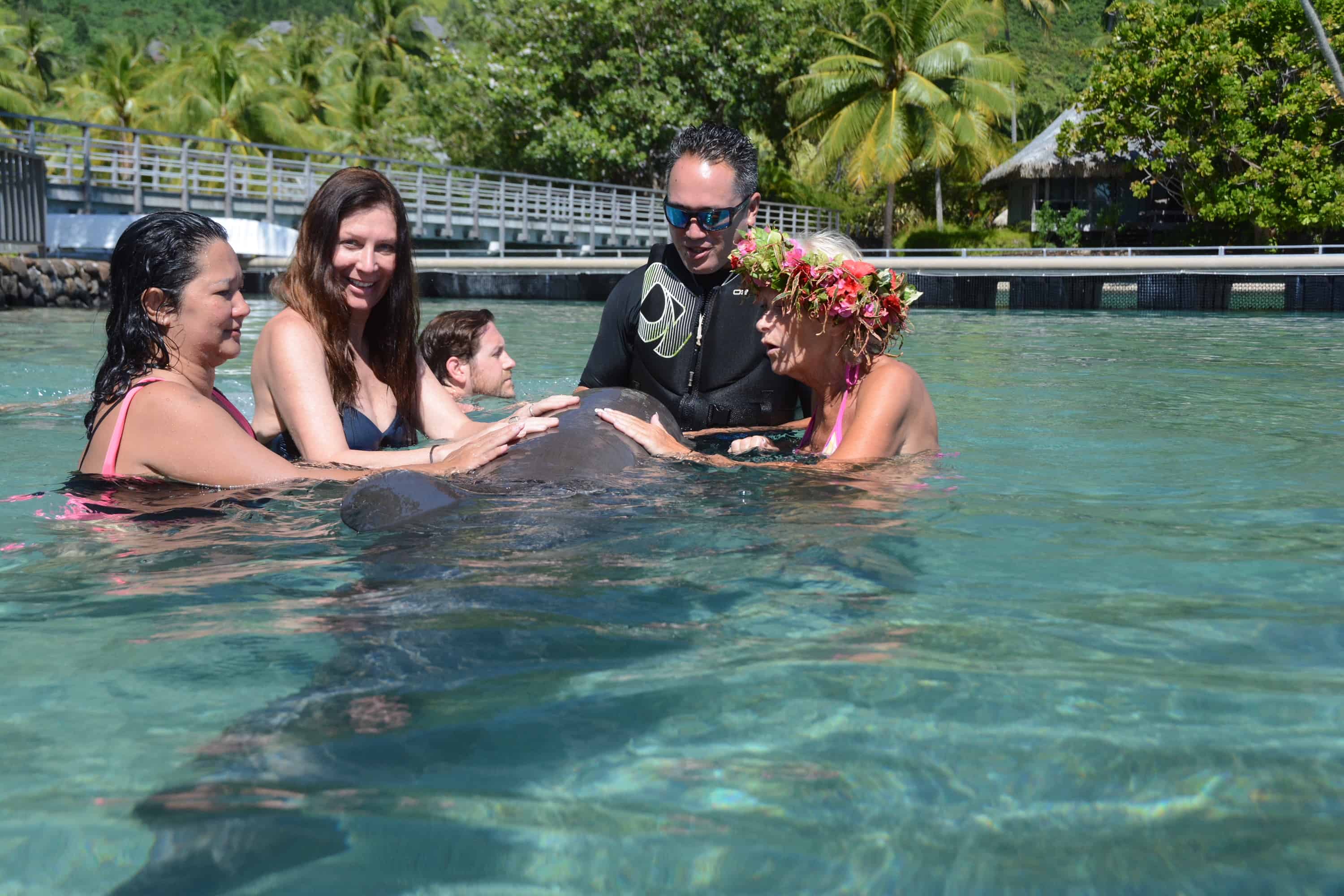
Courtesy: Dolphin Center.
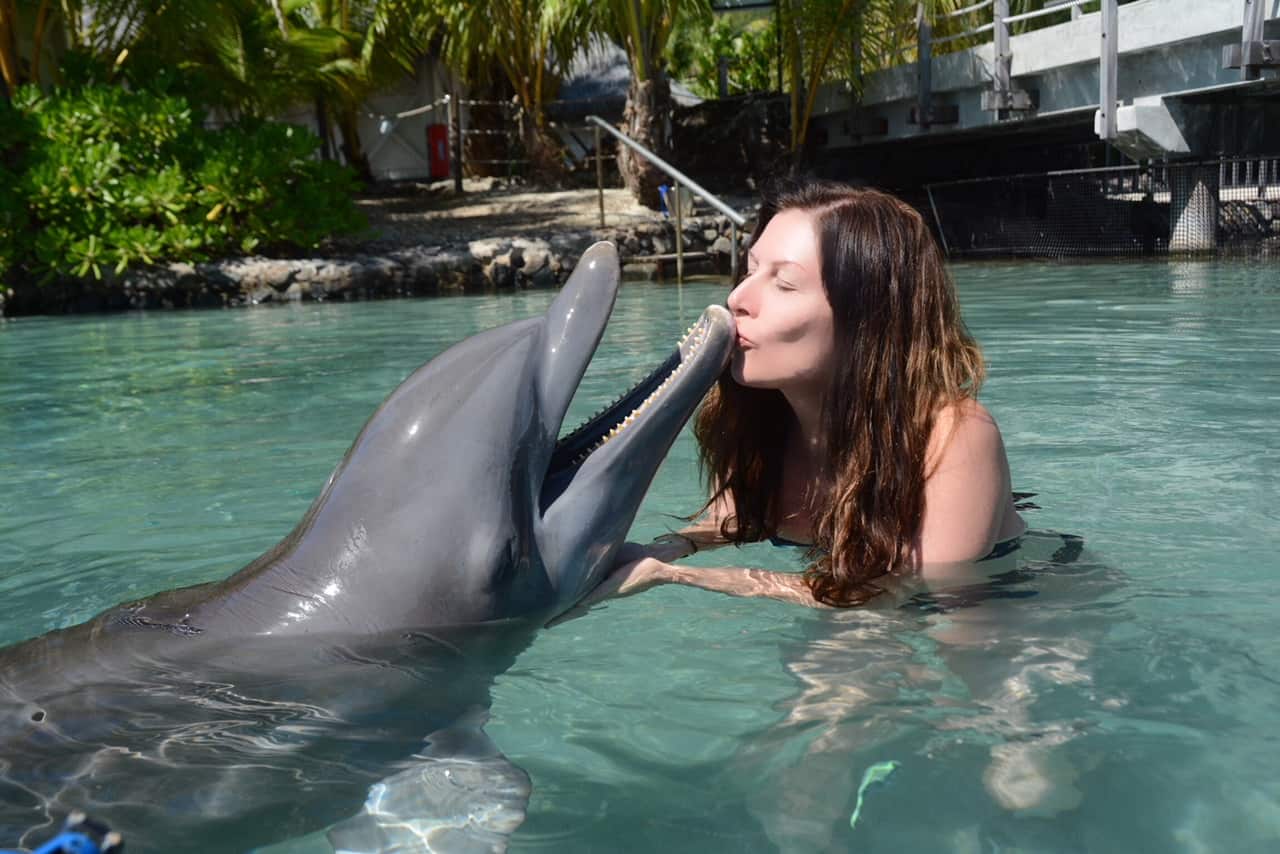
Kissing a dolphin! Courtesy: Mo’orea Dolphin Center.
At the same time, you learn about marine mammals and their ecosystem which is an incredible opportunity for kids if you’re heading there for a family getaway.
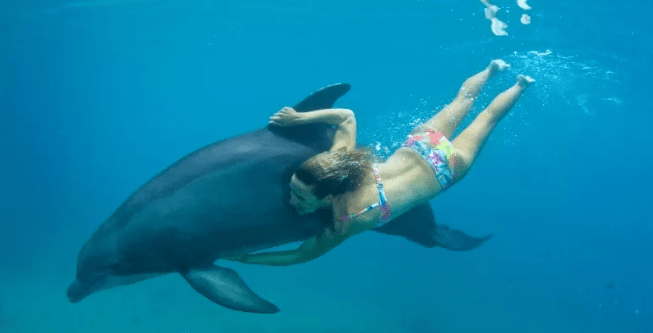
Swimming with Dolphins. Credit: Mo’orea Dolphin Center.
Even if you don’t do one of the programs, you can walk at the vicinity of the center, observe the dolphins in their lagoon, and chat with the trainers. Apparently, 5% of their gross income supports diverse local programs and foundations, like the non-profit organization Te Mana O Te Moana and La Saga, dedicated to disadvantaged children.
Both the Turtle and Dolphin centers are on-site at InterContinental, which offers both paddle boards and kayaks complimentary for guests (up toan hour and $5 thereafter). I have always loved paddle boarding so tried both during my stay.

Luxe Hotel Infinity Pools & Ocean Views
On Tahiti, the hotel beaches are equally blissful. Although not quite as remote and the water felt a tad cooler than the beaches in Mo’orea, more upscale properties like Manava and the Meridien both offer stunning views from their private beaches and pools.
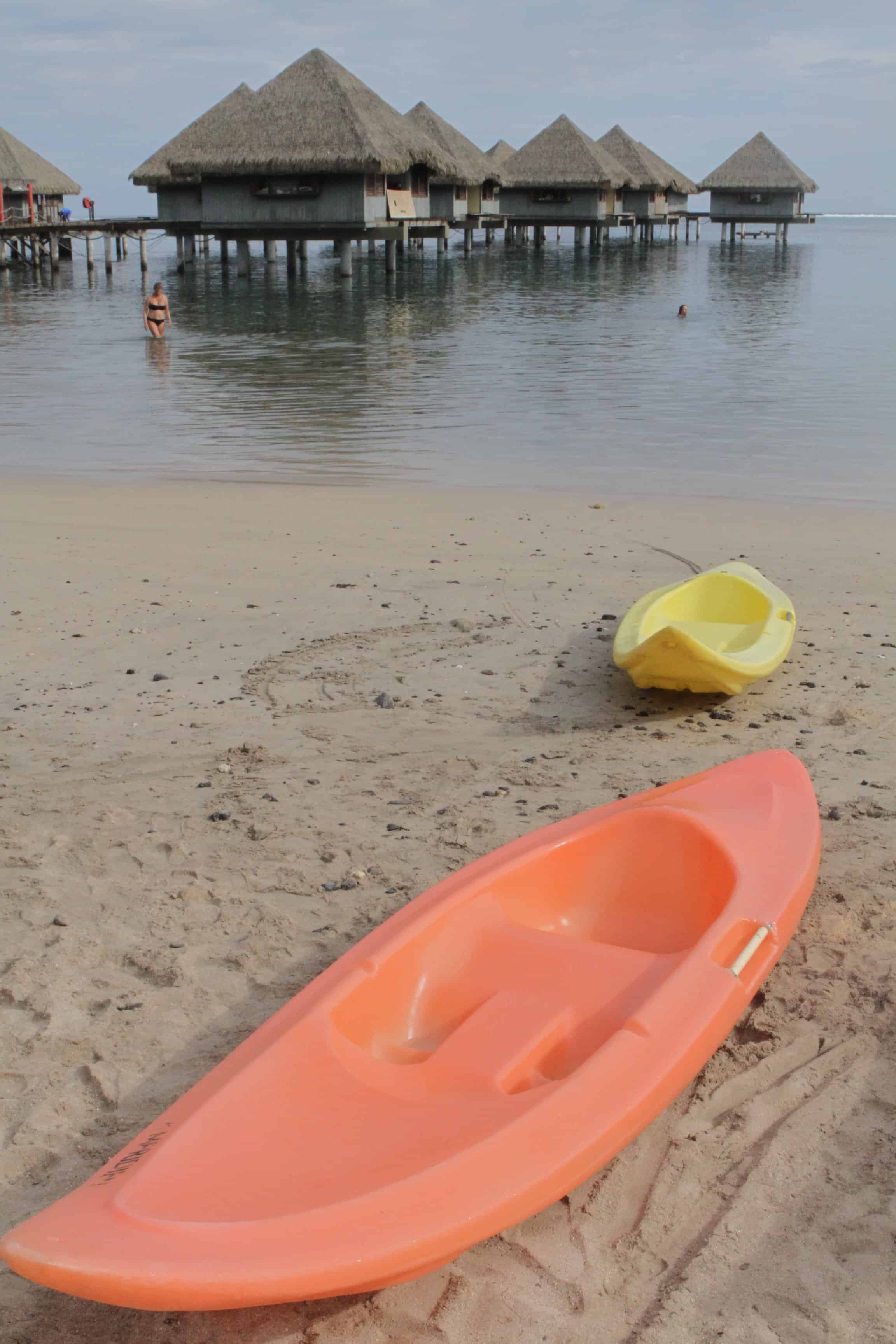
Kayacks are left on the beach for guests to use at the Meridien in Tahiti.
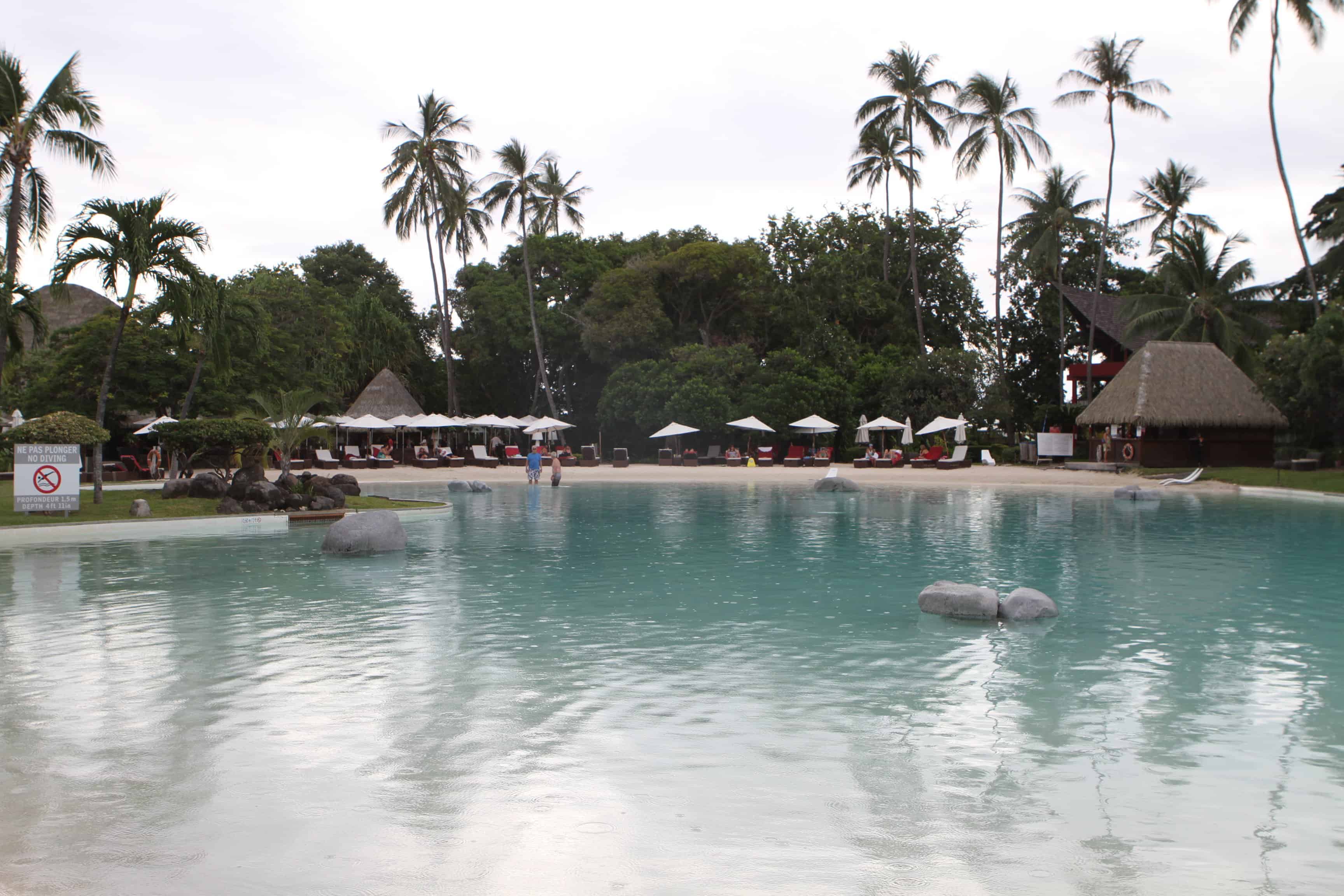
The sheltered pool at Le Meridien with a sandy floor
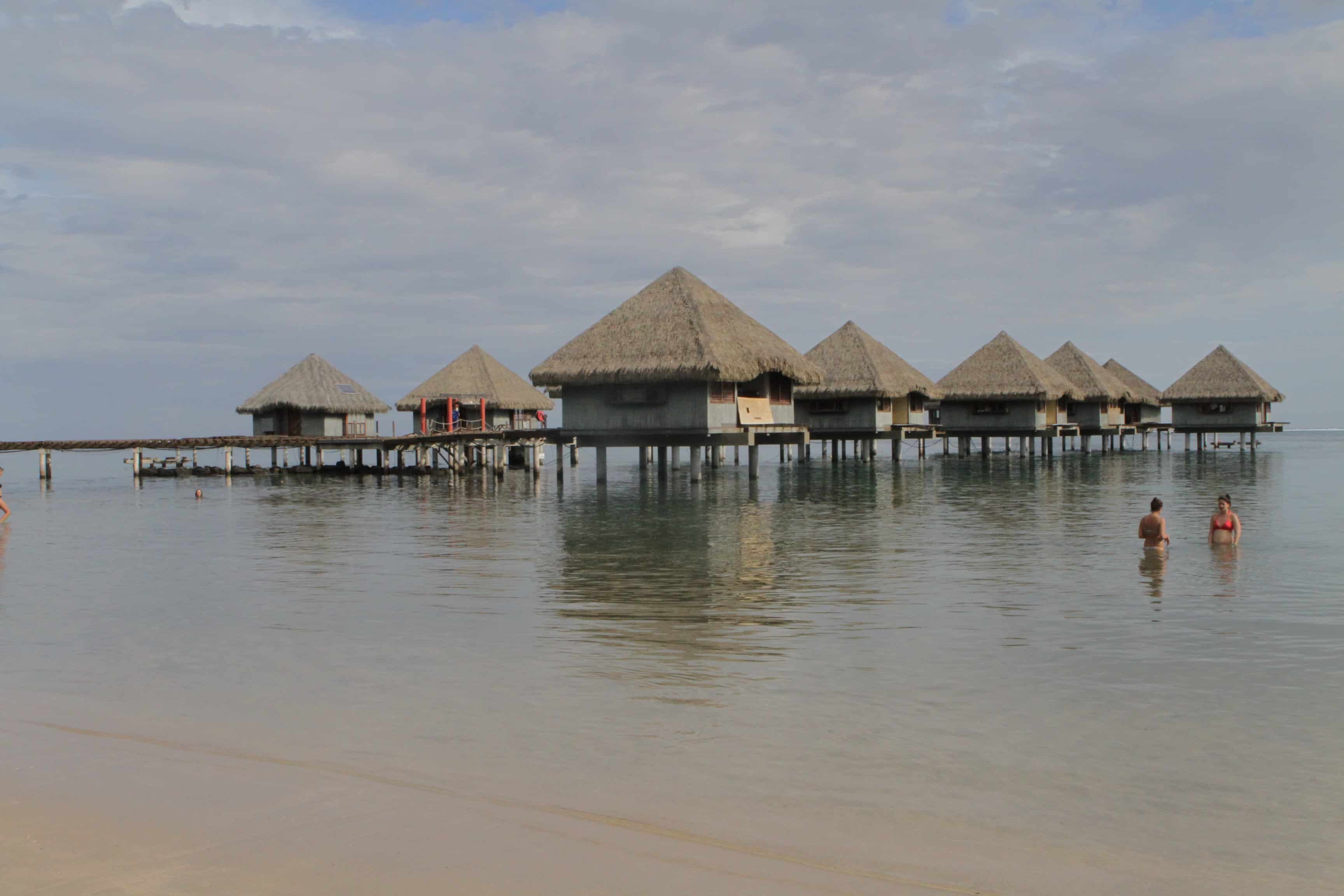
Swimming at Le Meridien
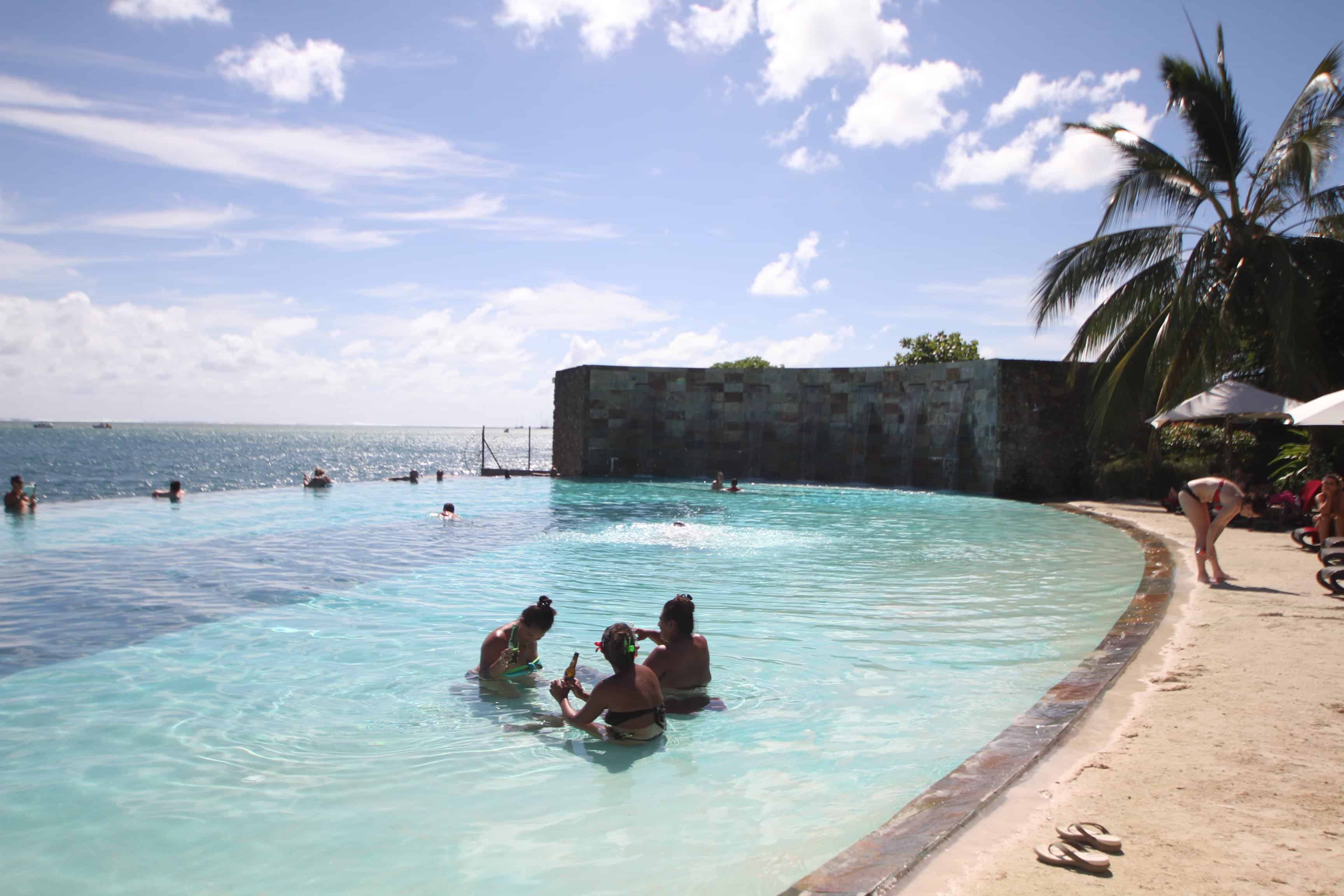
The pool at the Manava in Tahiti
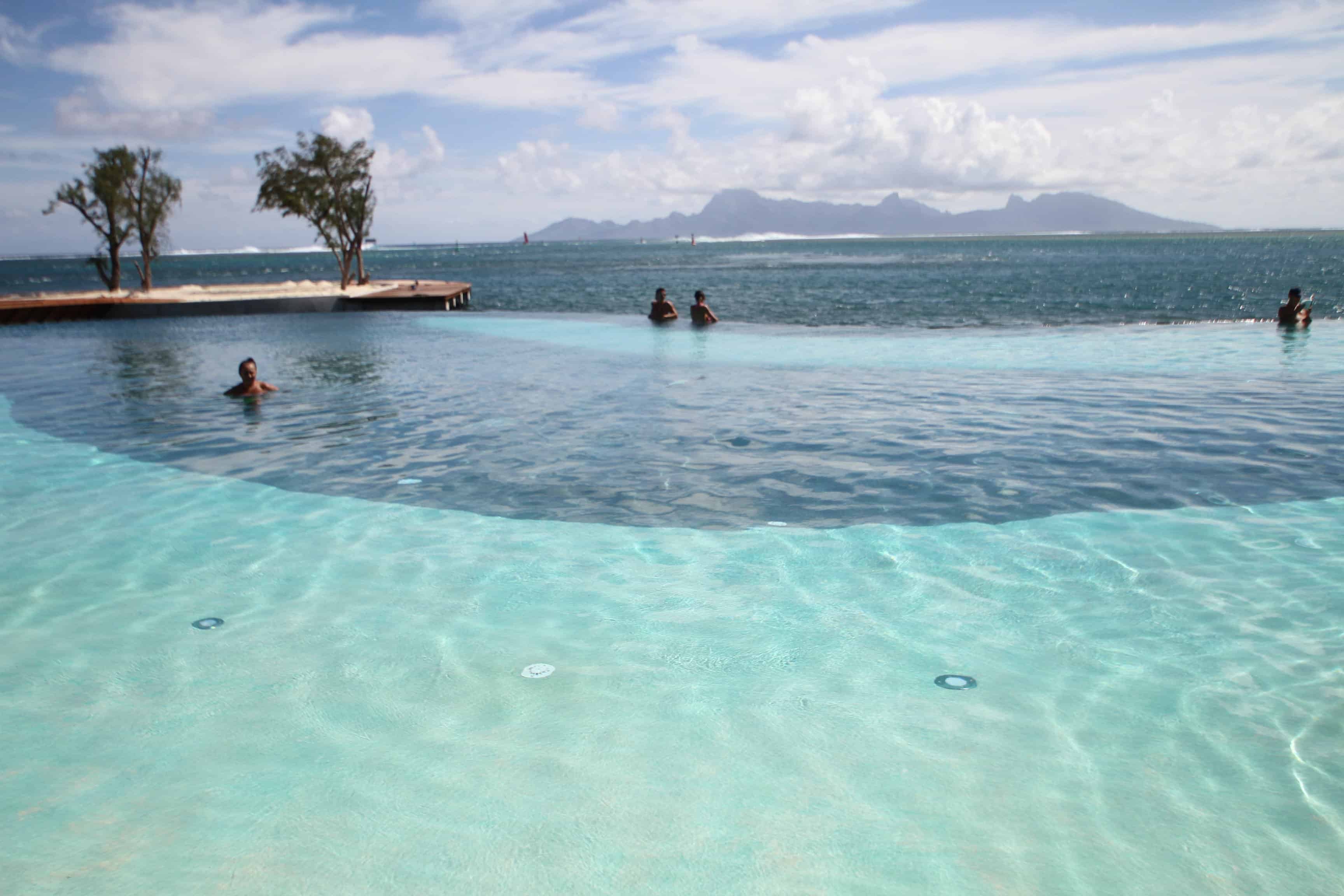
The infinity pool and views at the Manava in Tahiti
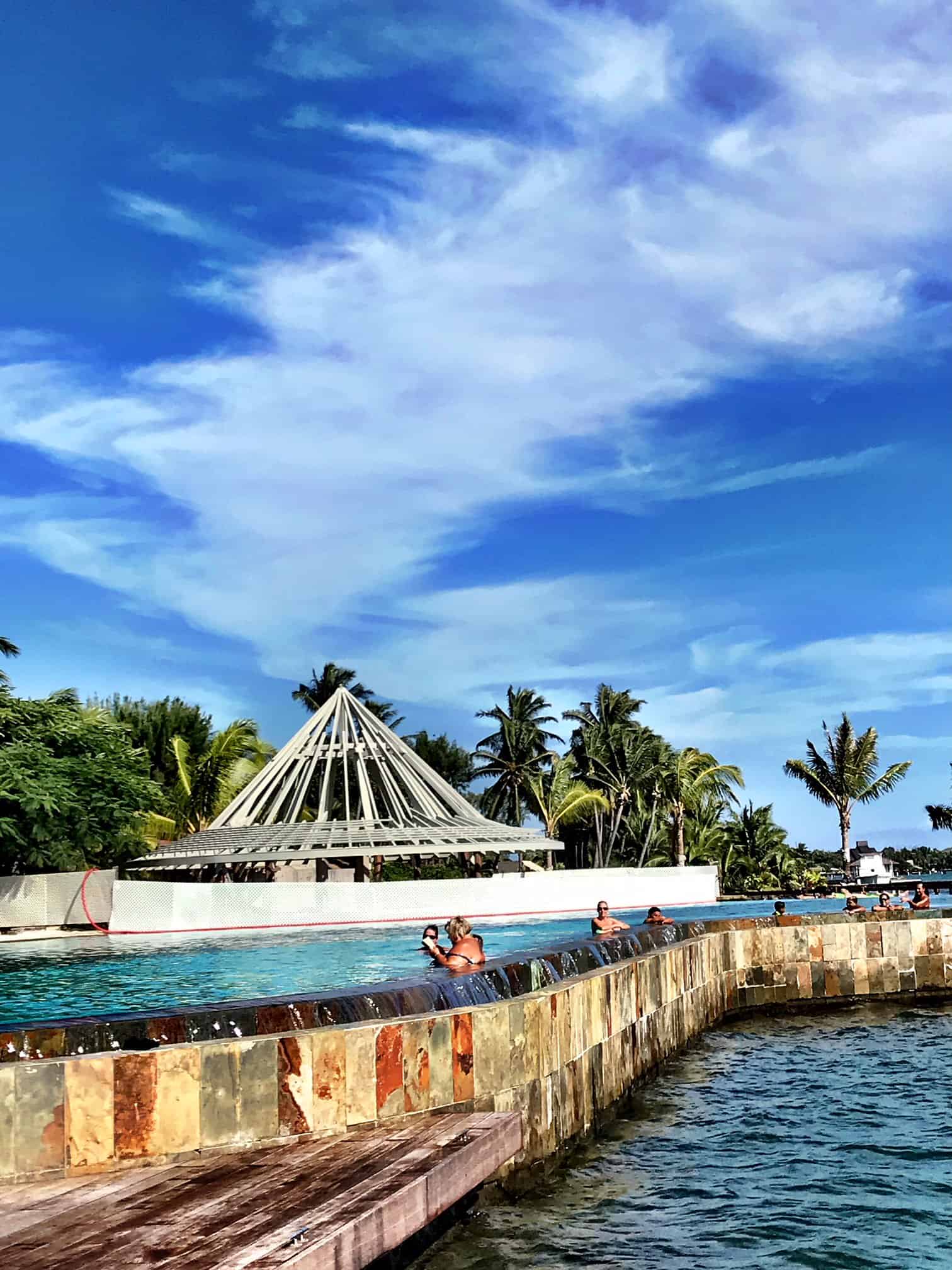
Swimming at the Manava
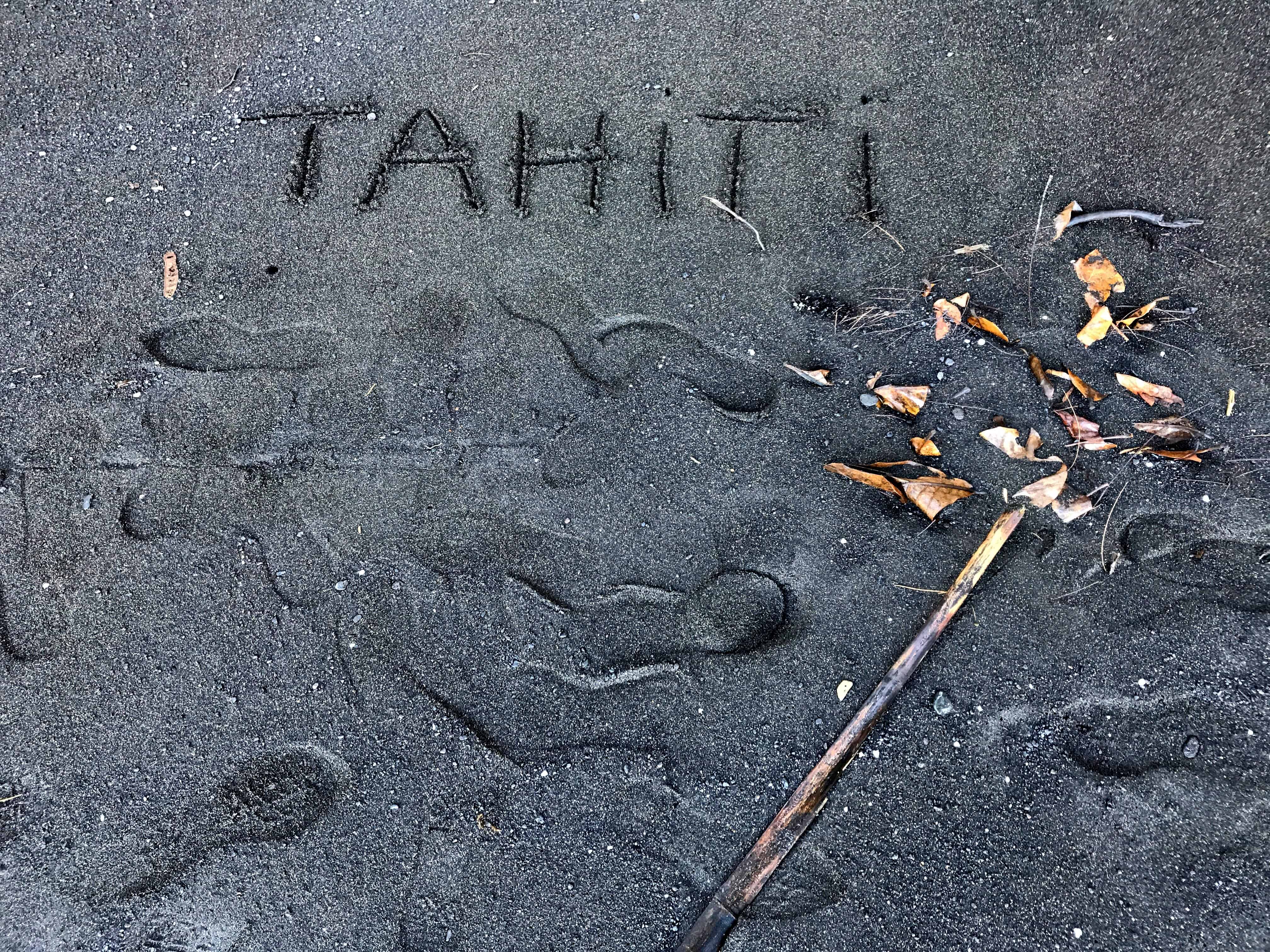
While most of the sand is white and beautiful throughout the islands, there area beaches with darker sand as well (this was taken on the west side)
Tahiti’s Venus Point & Waterfalls
You can make your own way around Tahiti (by renting a car) or getting a private tour guide to ensure you stop at some of the more historically interesting places along the ocean’s edge in Tahiti. We took an extensive tour that covered both land and sea, and some of the water stops worth noting are included in this Tahiti Guide for all things water!
Venus Point is located in the north on the edge of Matavai Bay and was always a special spot for European navigators. For example, James Cook named it after the planet in commemoration of the transit of Venus that was observed during one of his trips to Tahiti.
Point Venus has a picturesque Victorian-era lighthouse and a monument to the crew of the Bounty, who also landed at Venus Point. Along the way, there are many spots to stop off the side of the road and just dip your feet in the water. Or, hang under a luscious palm tree.
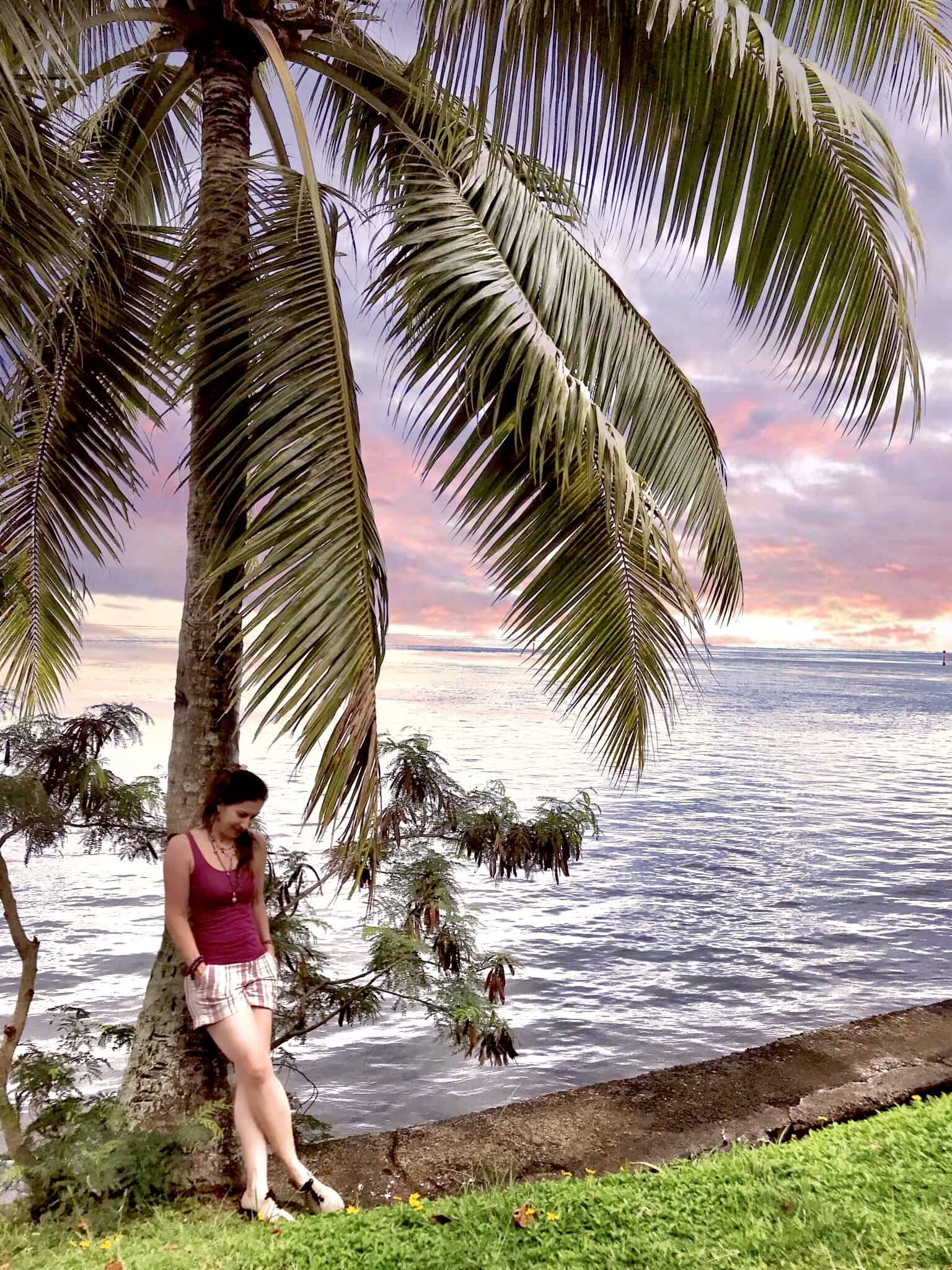
Some of the larger islands in French Polynesia tend to have the high mountains and deep gulches and valleys — they’re known for their abundant waterfalls. There are extra tall falls like Cascade de Fachoda as well as the Faarumai Waterfalls and there’s also the Afareaitu Waterfalls in Mo’orea.
A smaller but equally lovely waterfall stop are the Cascades de Faone, which makes a great spot for a family picnic or just a place to relax for an hour or so. These double waterfalls here are located in a remote and peaceful area of the community of “Faaone” on the east coast of Tahiti. Not well known by many, they cascade down in a pool and finish into the sea.
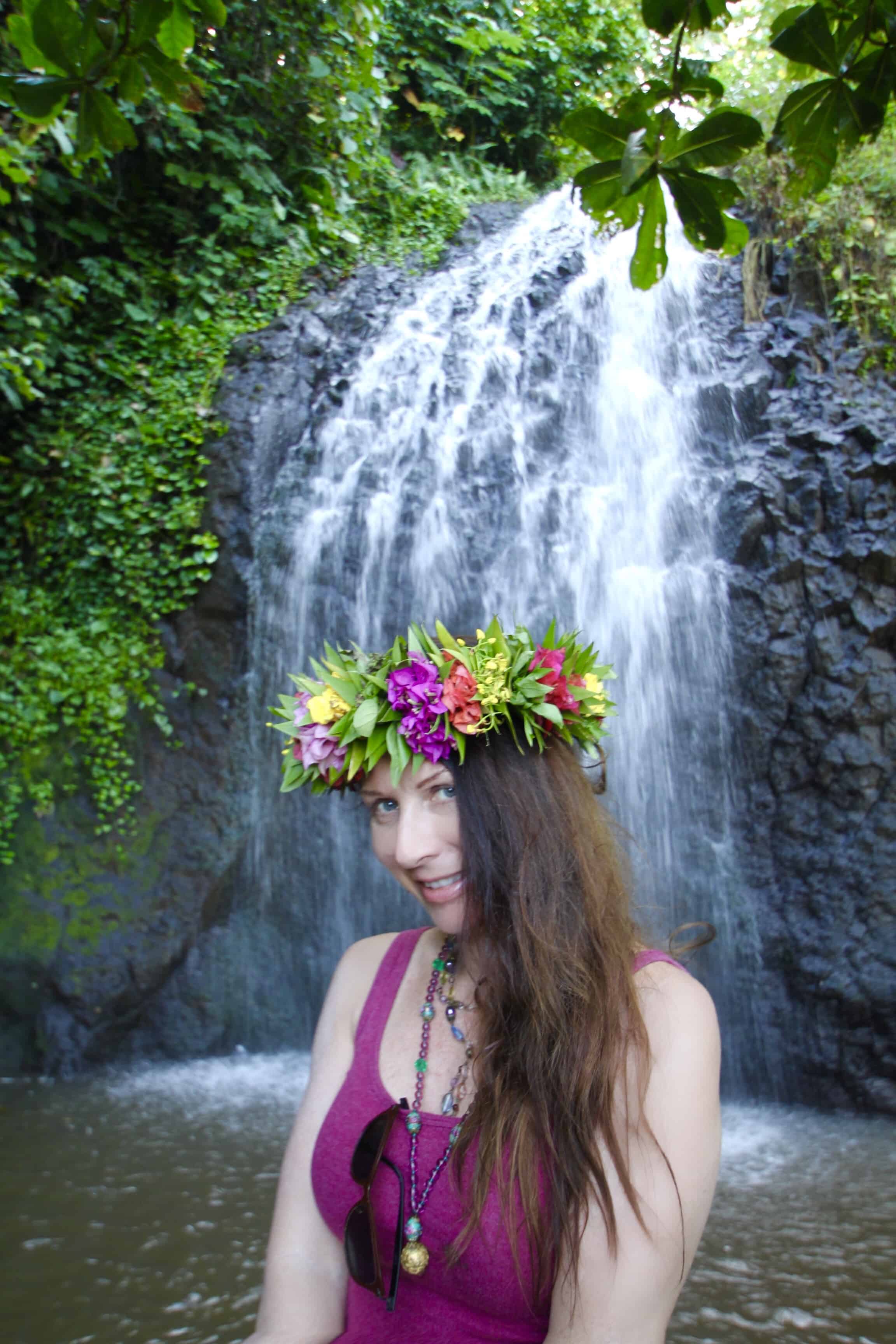
At the Cascades de Faone
Serenity is the order of the day throughout Tahiti. There are many little coves and bays where you can hear a pin drop in the water depending on the time of day.

A local family picnics at the Cascades de Faone
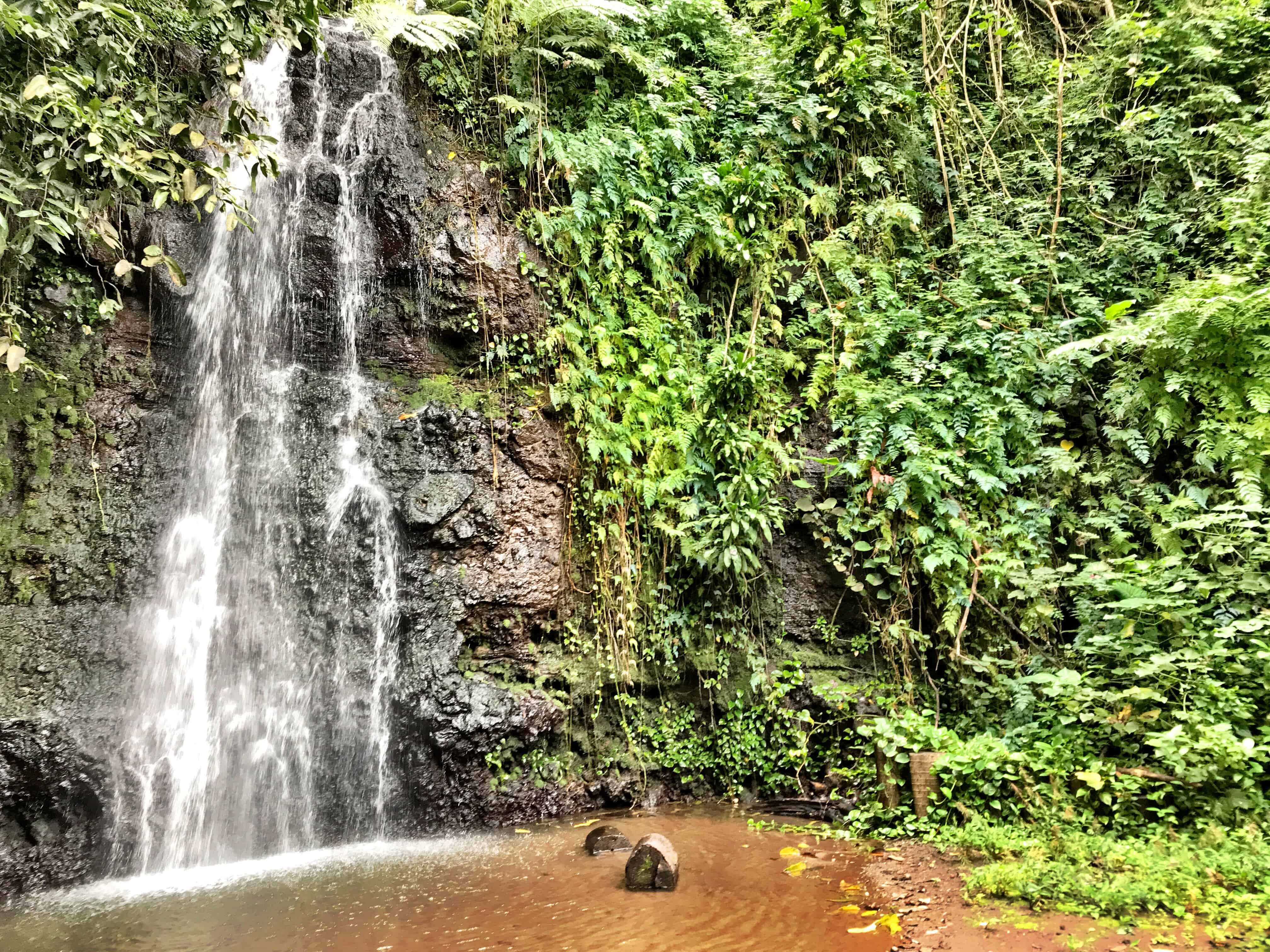
More waterfalls.
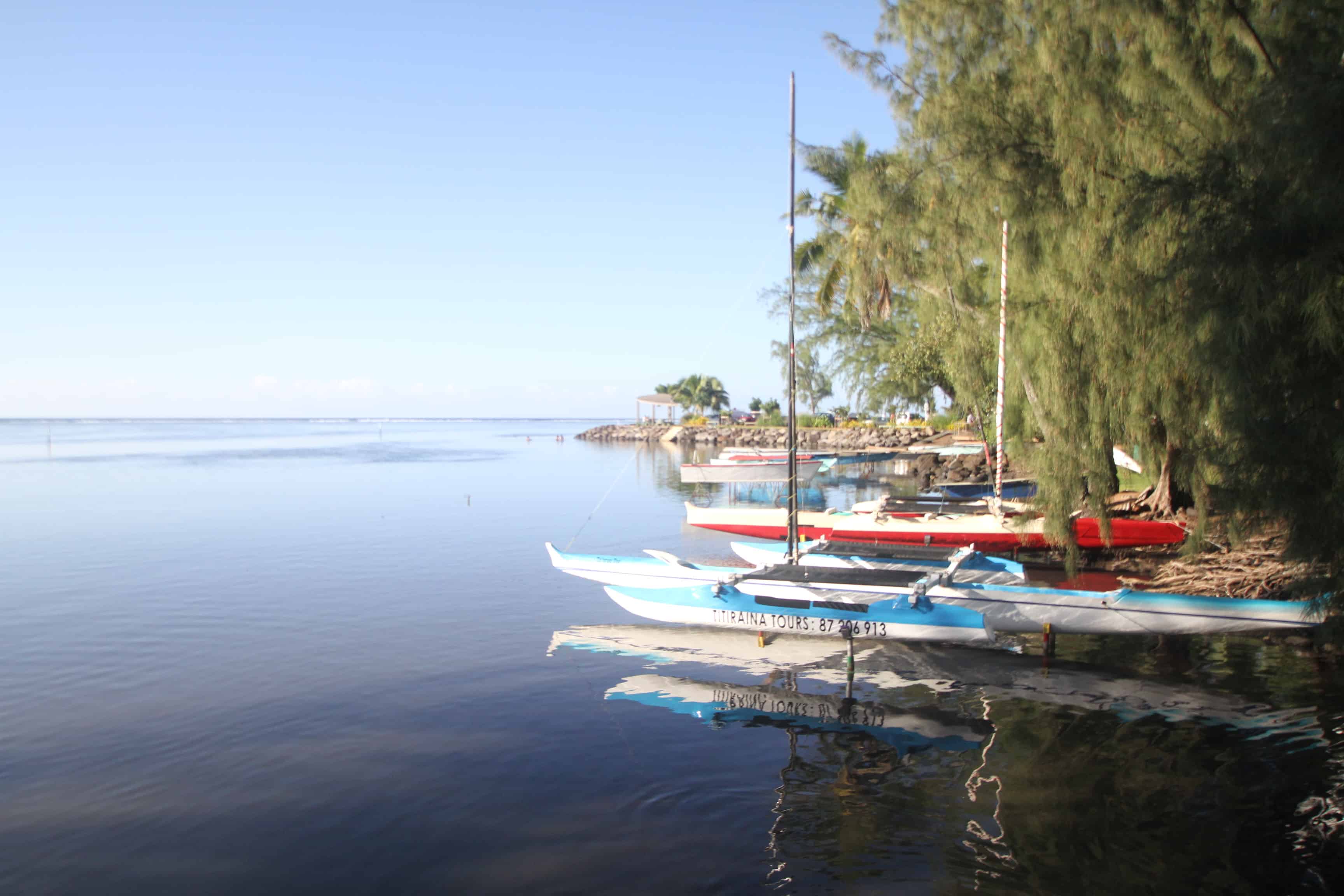
Such a serene little bay, which you can find on both coasts (above and below) 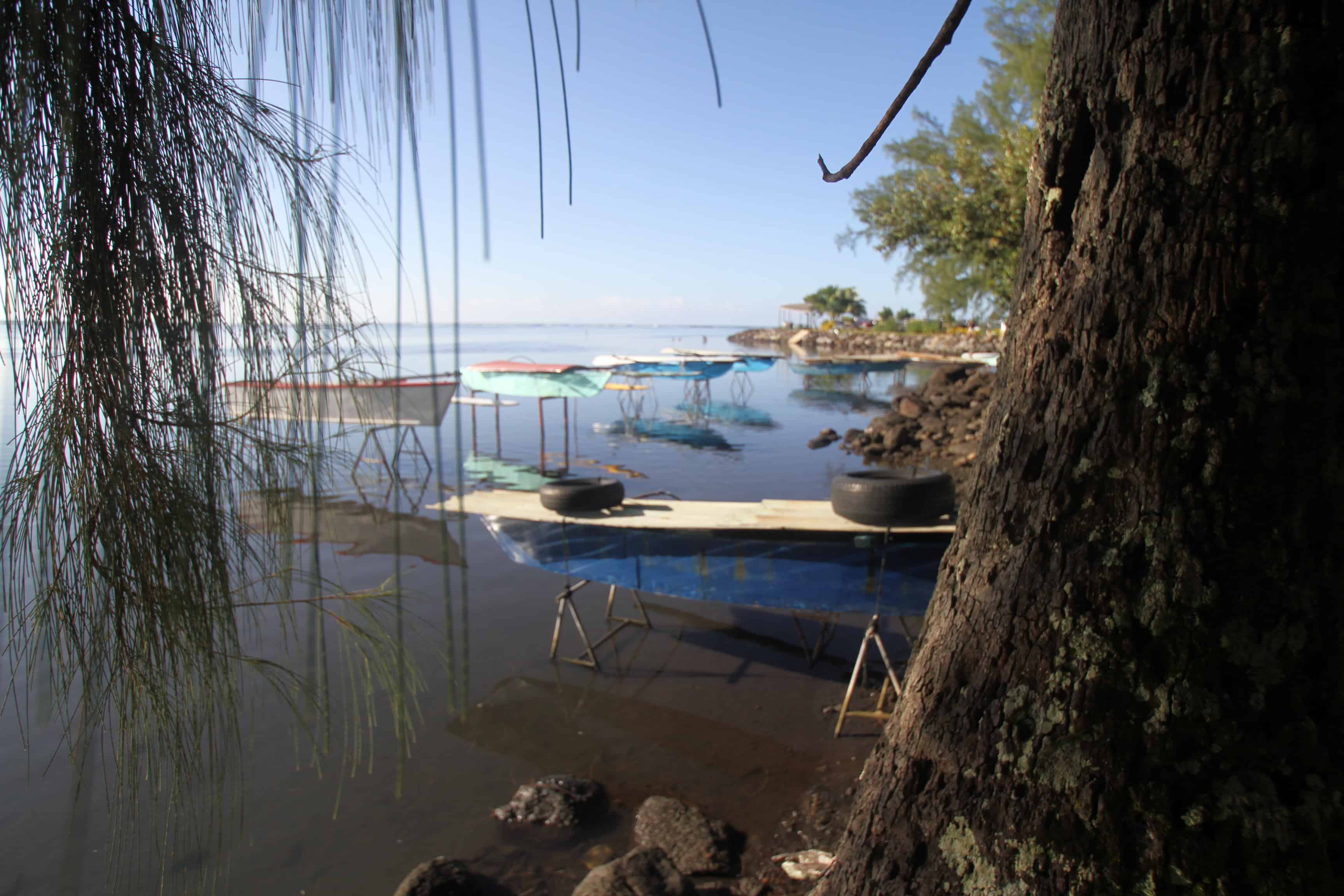
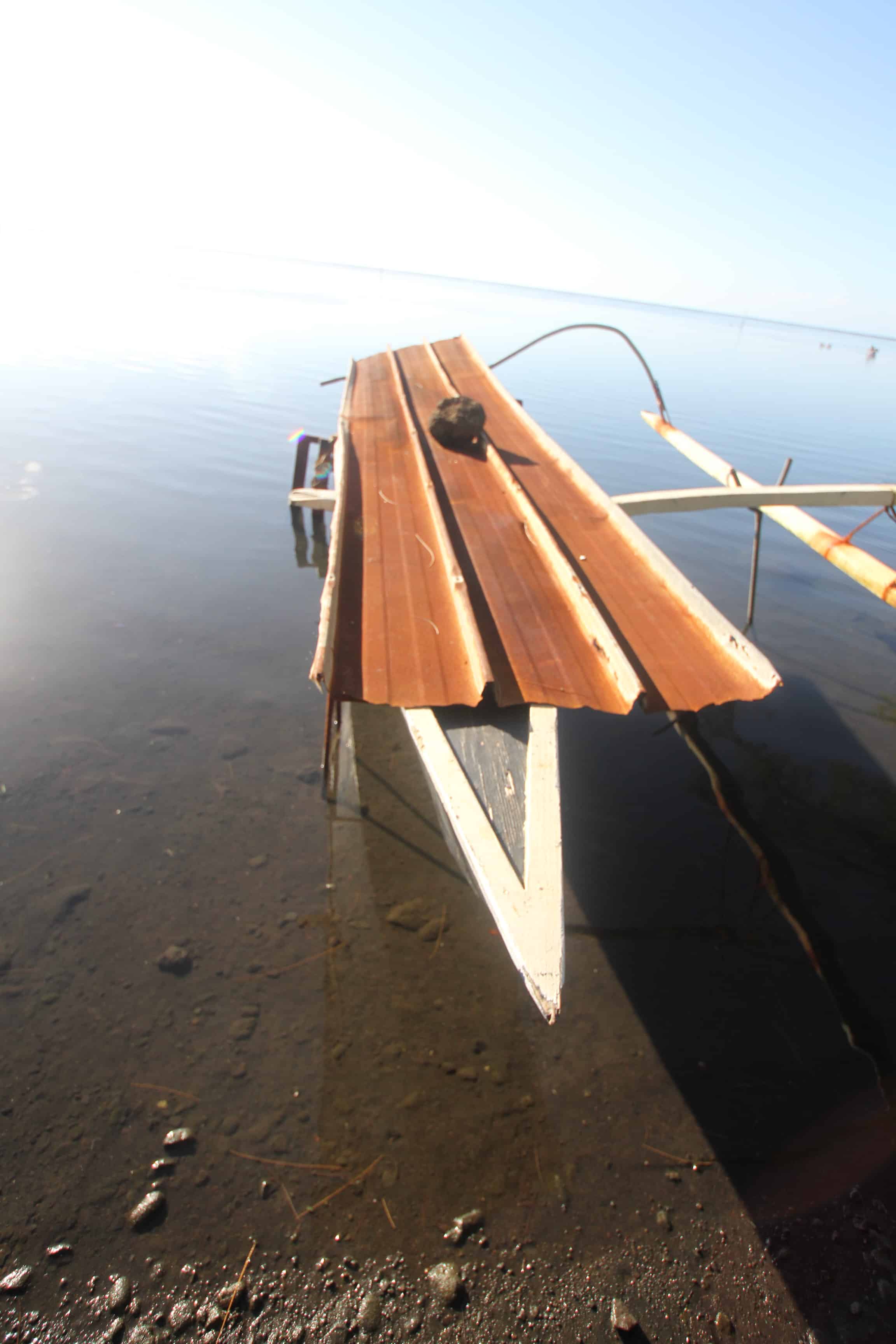
Charter a Boat
You can also charter a boat with or without a guide in Tahiti. Or, you can do a tour. We did several during the course of our day, including another snorkeling trip where you could look at ship wrecks as well.
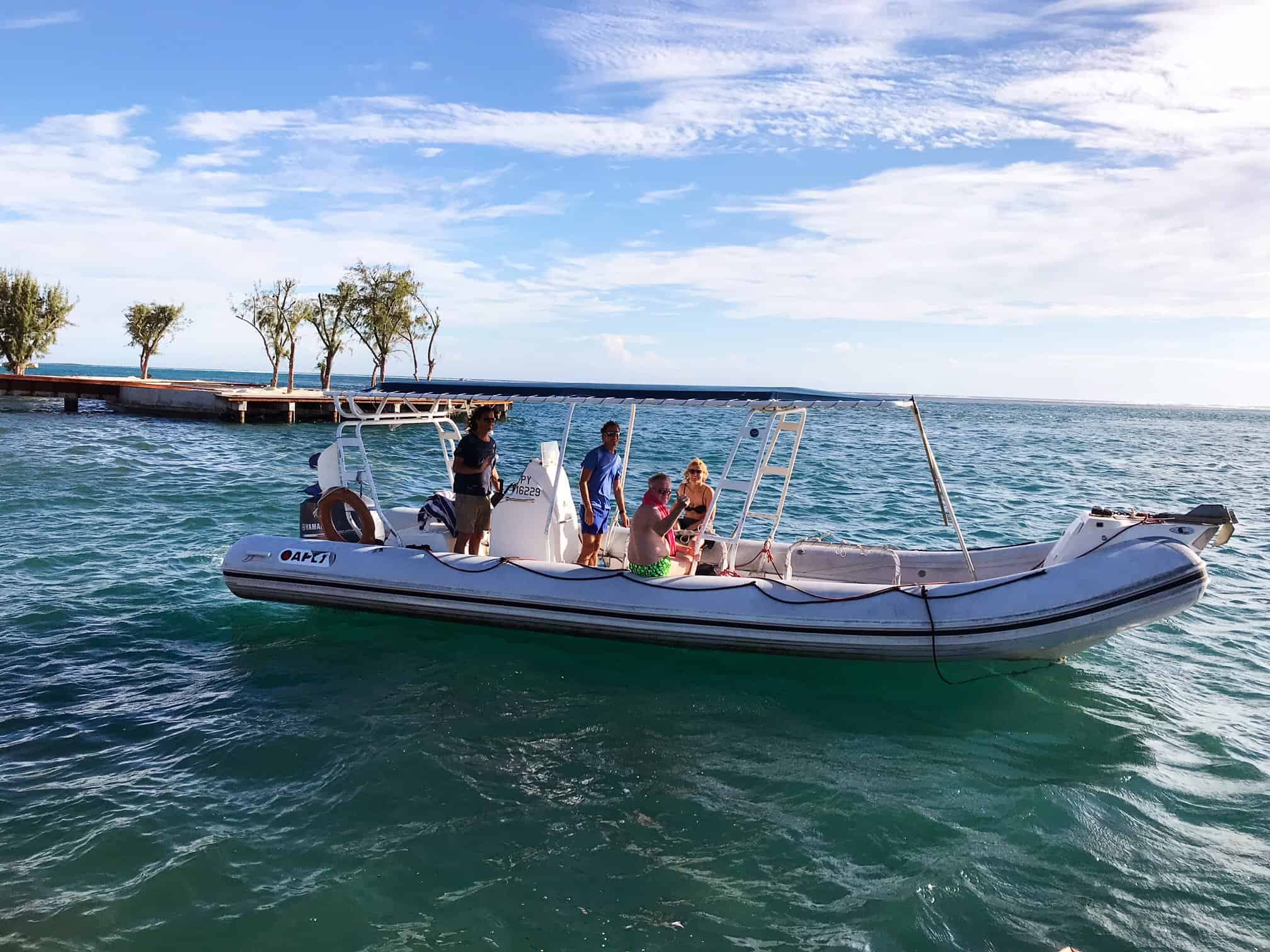
Another boat used for side trips
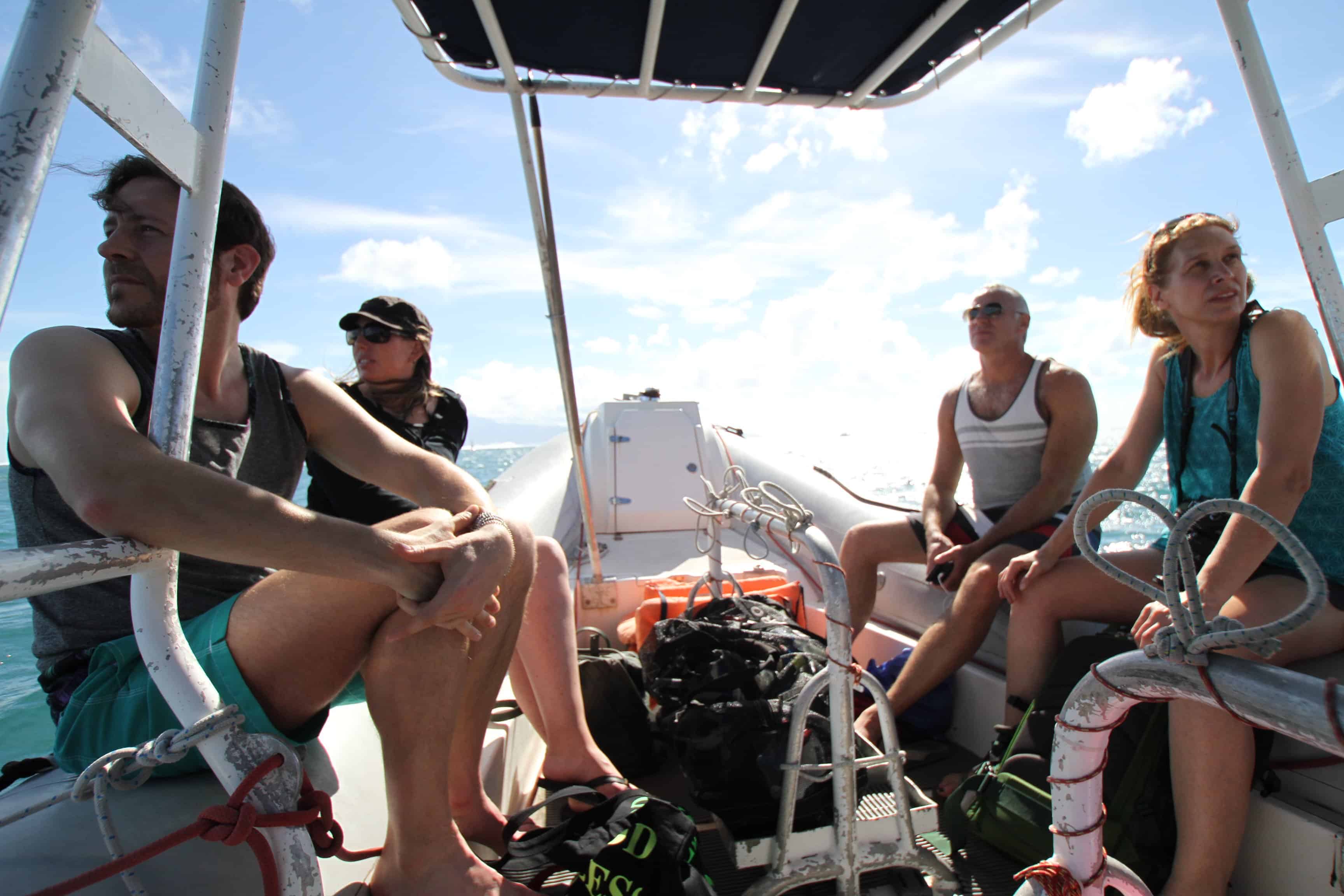
One of the boats used for snorkeling day trips
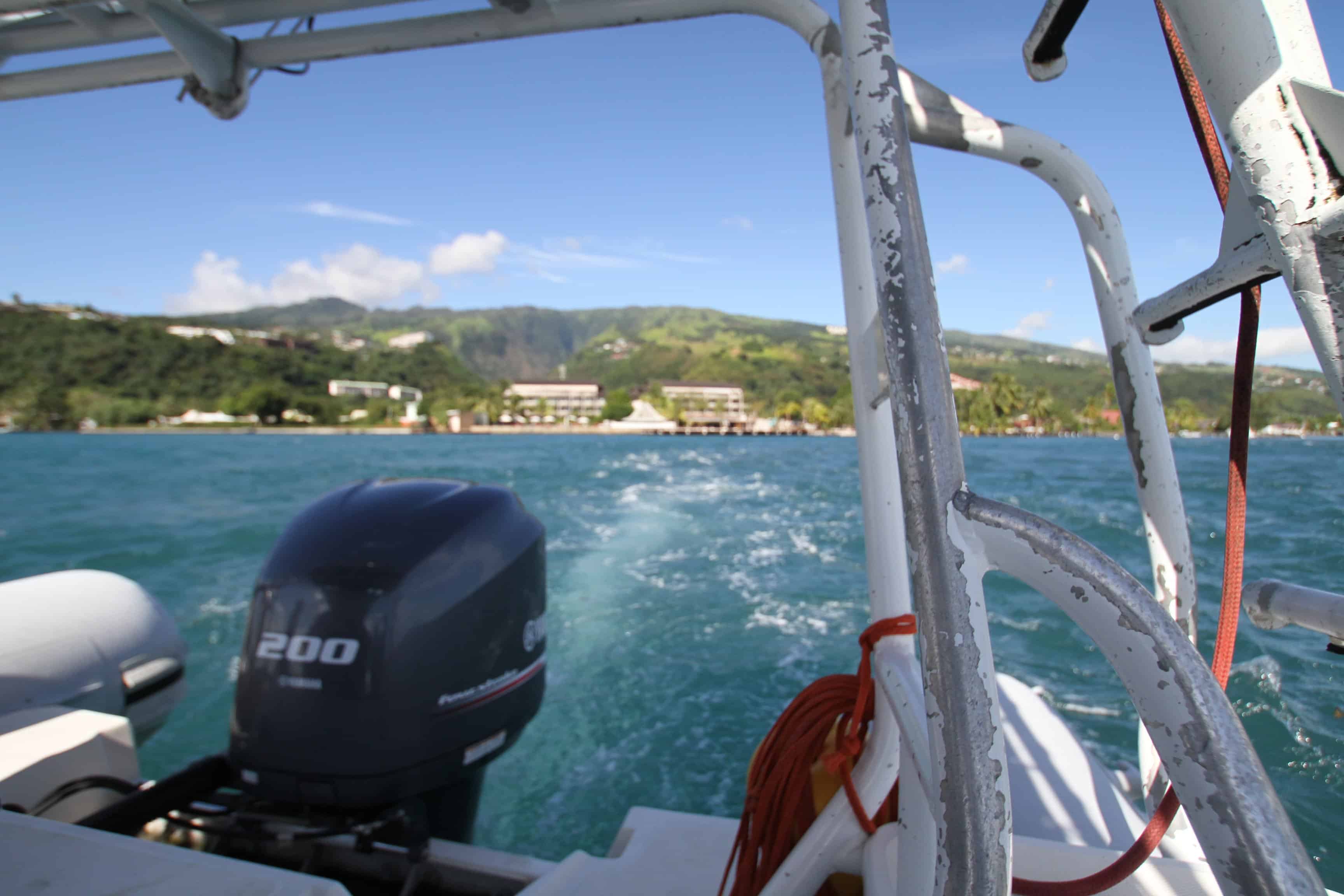
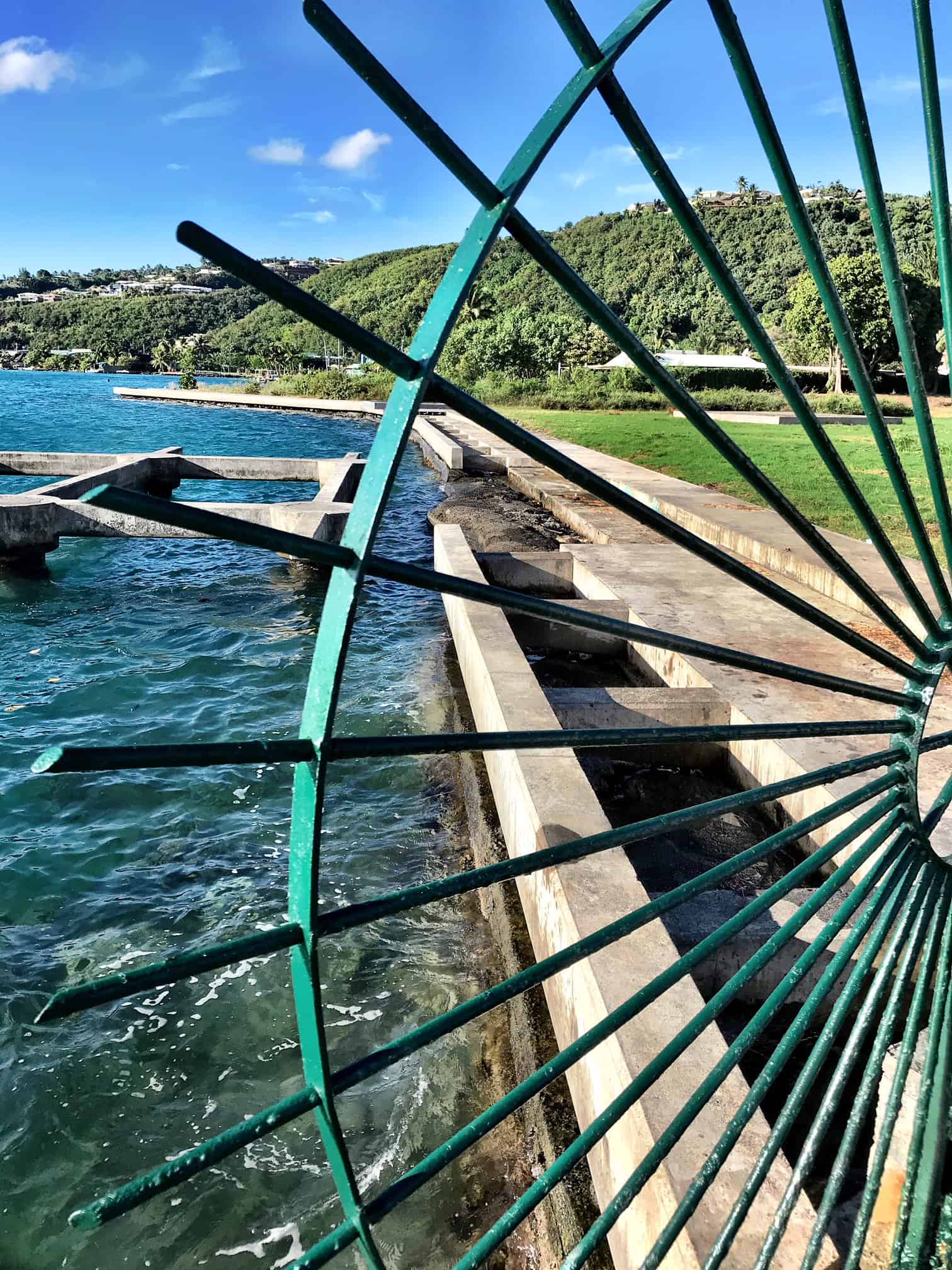
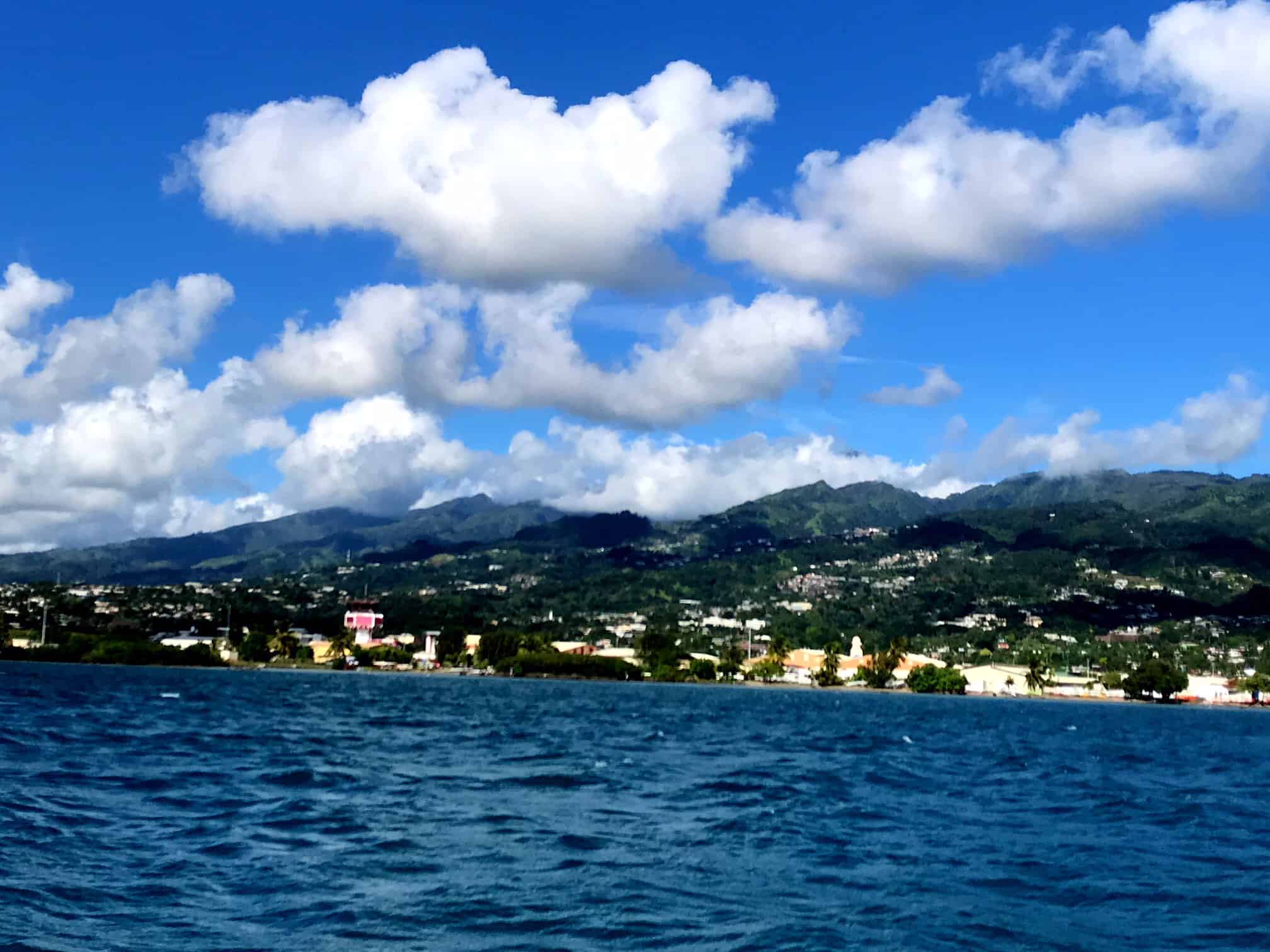
They also offer sunset cruises on a catamaran — two thumbs up for this one!!

Catamaran Sunset Cruise in Mo’orea
Lunch at Restaurant Gauguin
This well known restaurant is owned by Julia and Roger, who also own a charming house not far away which boasts a ton of medicinal plants on the property — Julia gives tours (more about them in our Tahiti & Mo’orea Travel Guide by Land.
Restaurant Gauguin is about 800 meters to the west of the museum, in a beautiful little setting on the lagoon. The menu is eclectic, with an emphasis on seafood and there’s a full buffet, which also means plenty of salads and desserts as well.
Why it’s on our Mo’orea & Tahiti Travel Guide for Water opposed to land, is mainly because of the views from the dock at the restaurant. I could have sat here all day (and I mean all day) just staring out into the beautiful nothingness and serenity beyond.
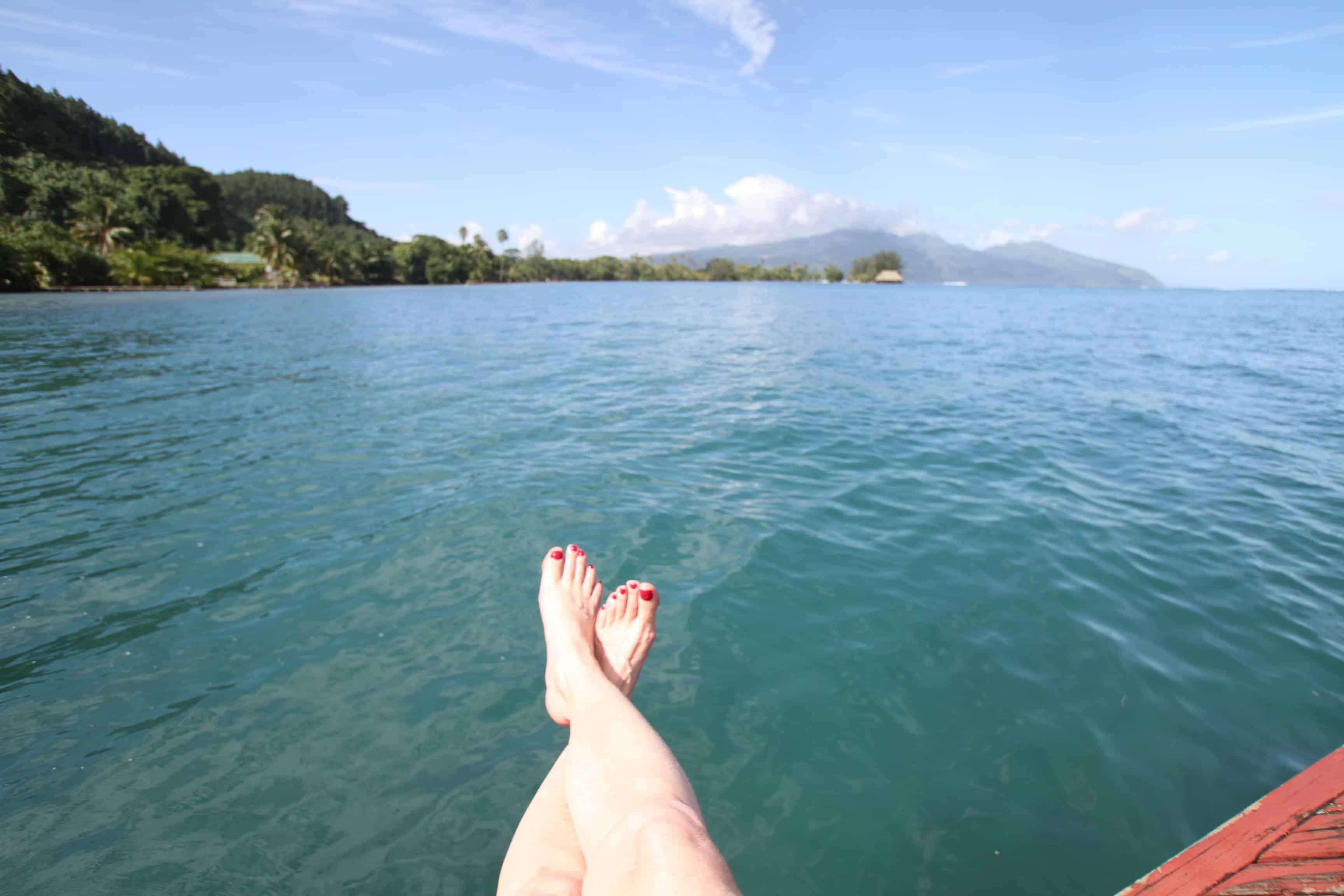
On the Dock at Restaurant Gauguin
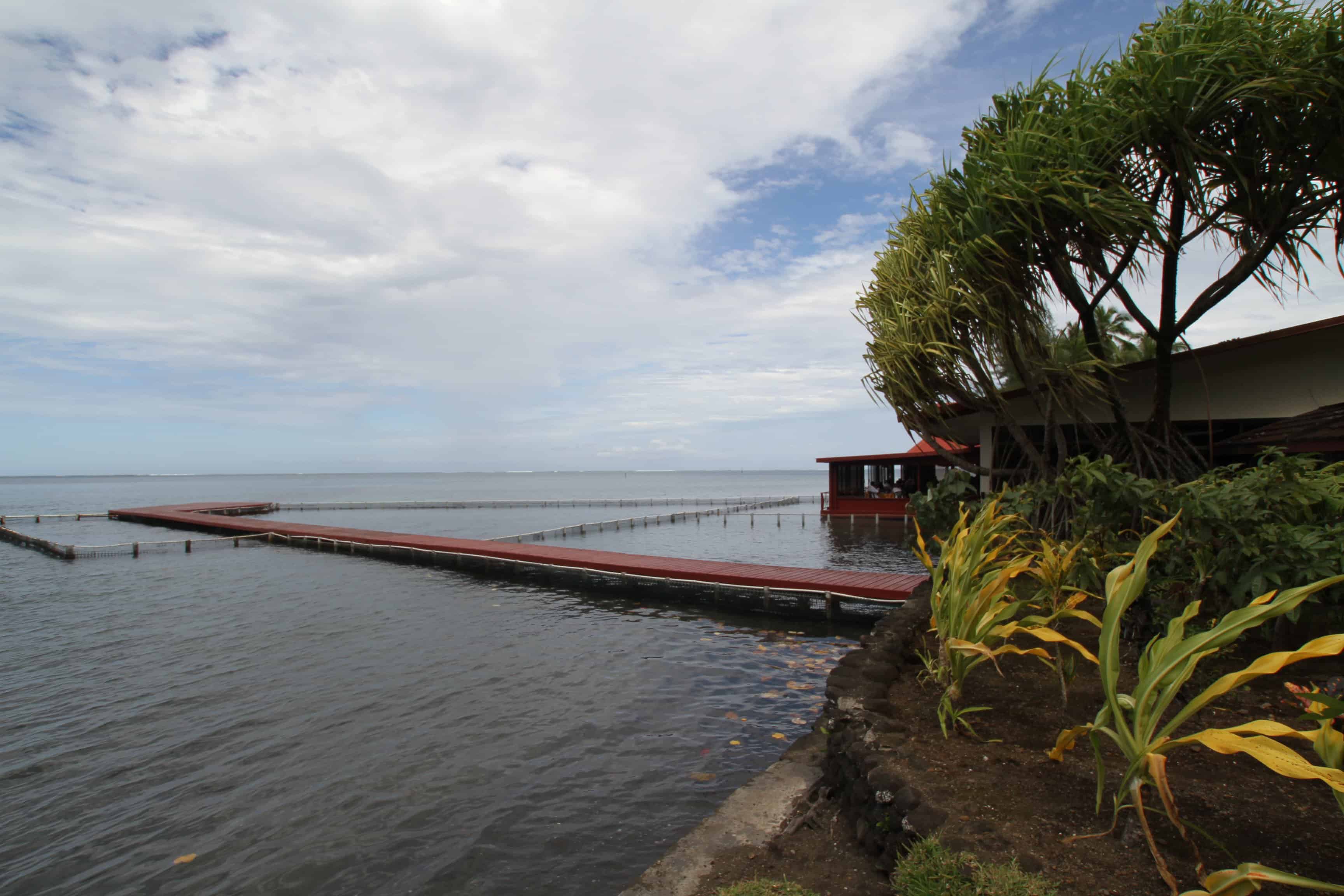
Views from Restaurant Gauguin
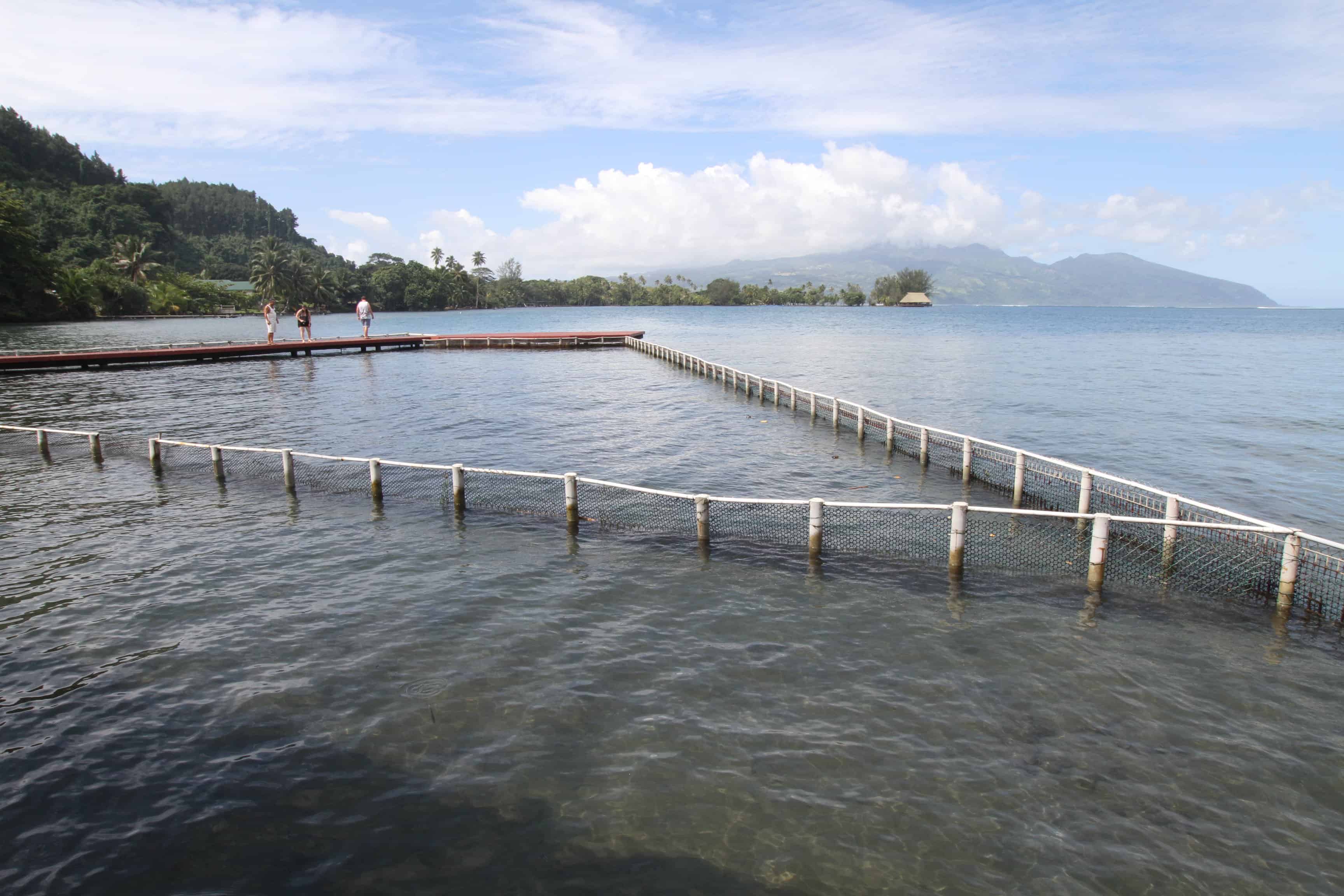
Views from Restaurant Gauguin
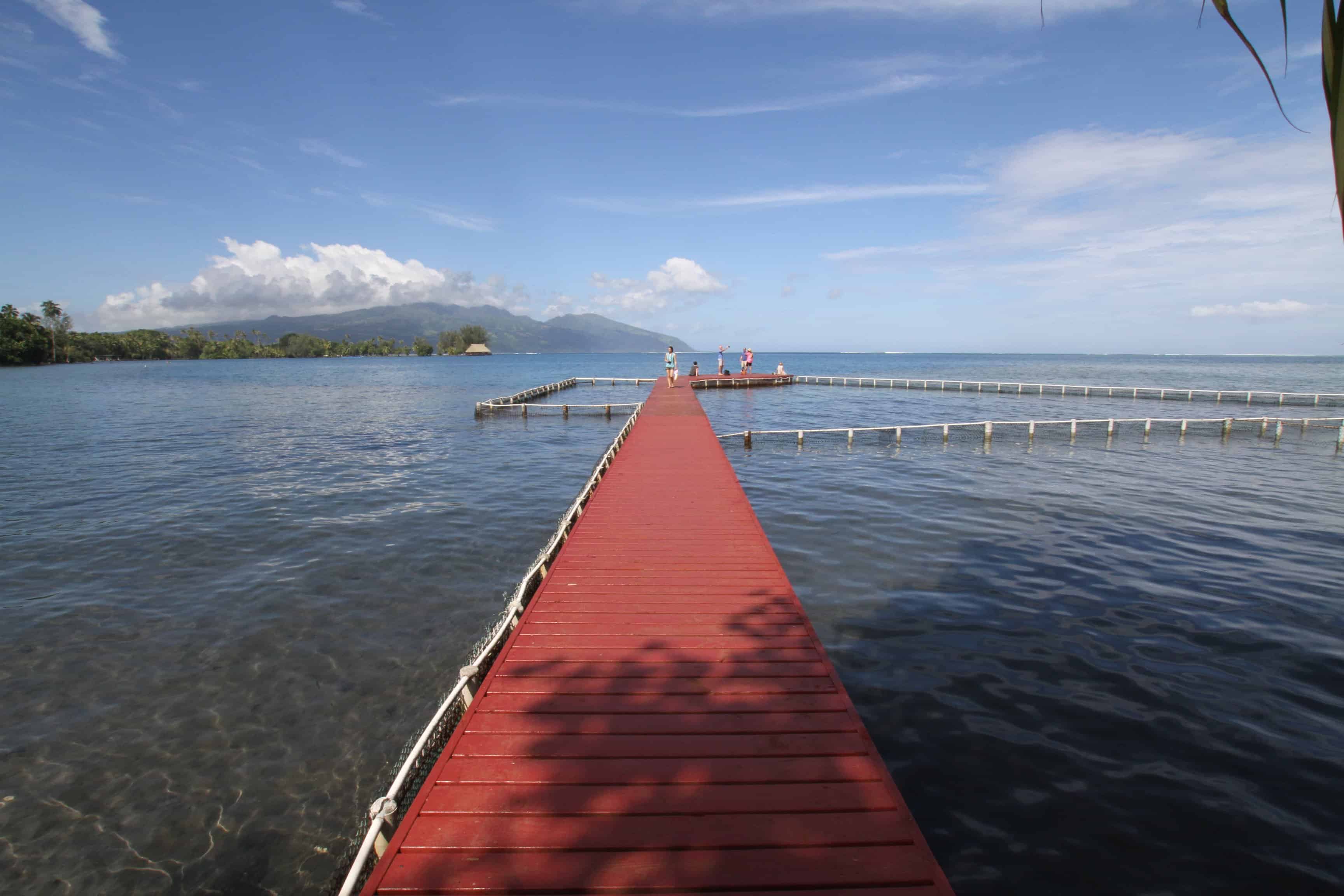
The dock at Restaurant Gauguin
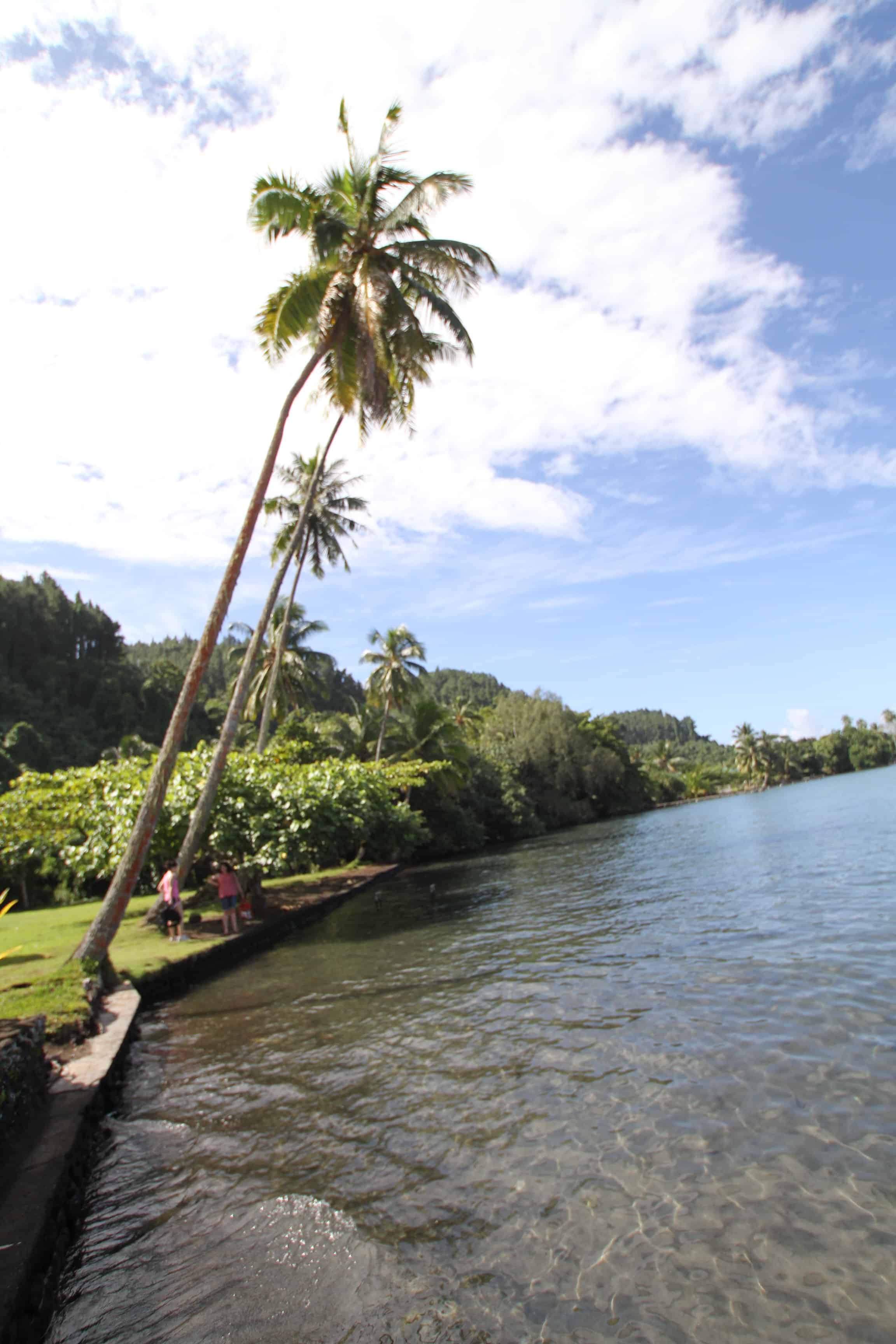
The coastline near the Gauguin Museum

Where I sat on the docks (and wanted to absorb this view for more hours than we had on that glorious afternoon)
Arahoho Blowhole
The Arahoho Blowhole is just off the side of PK22 coastal road in Tiarei and most tourists stop here because it’s an interesting experience. You can stand in front of the hole and feel the wind push out into your face when it bursts.
Essentially a lavatube or tunnel opens into the sea. This geological occurence was originally created by liquid lava flowing under cold and hard lava and when water crashes into the tunnel, the air inside gets compressed causing a powerful sea geyser effect as the water shoots out through a hole in the rocks.
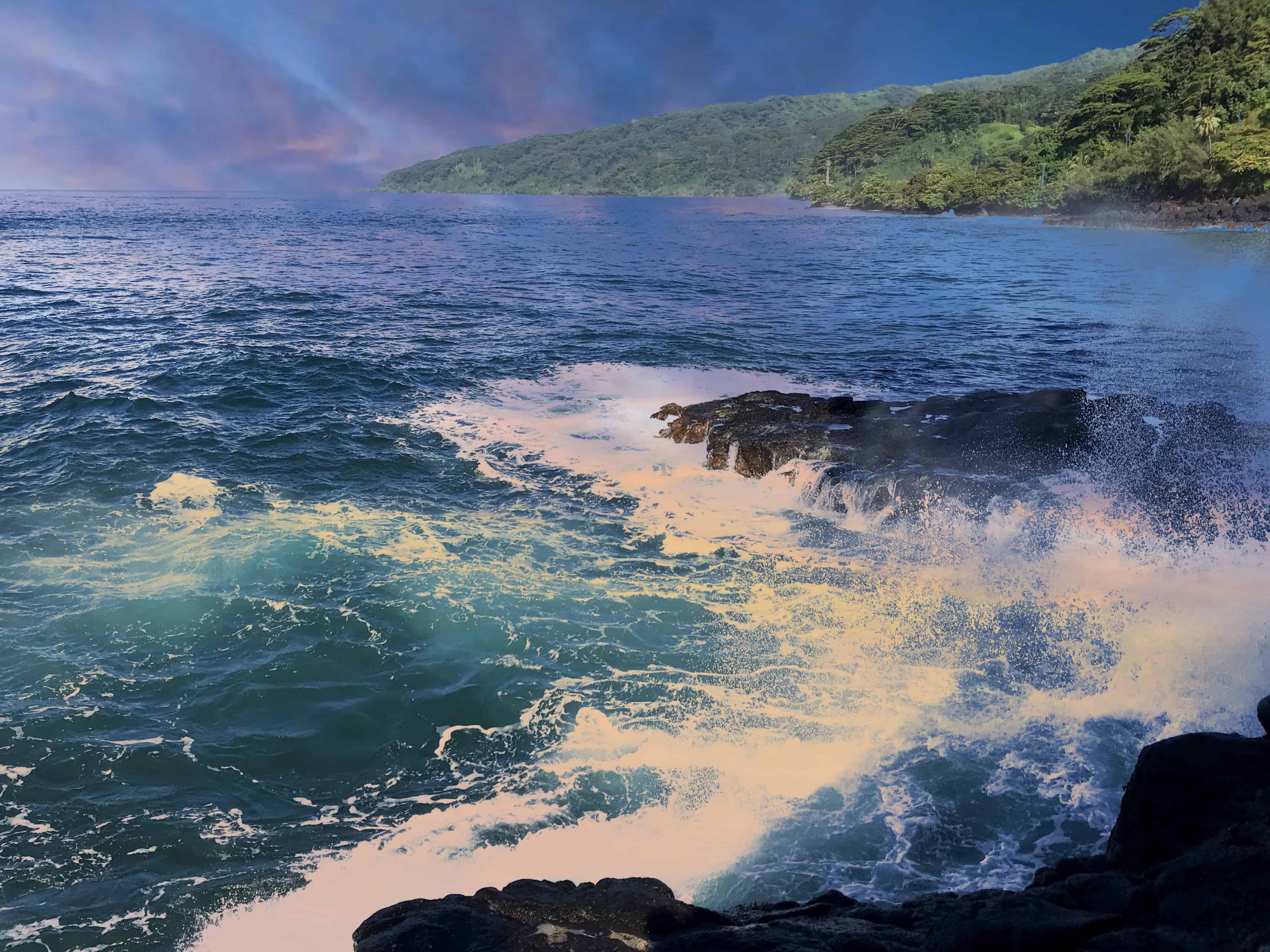
Views on the other side of the Blow Hole – makes for great wave action as they crash up against the rocks
On the other side, you’ll see plenty of surfers so be sure to bring binoculars or a zoom lens. And, on this part of Tahiti, you’ll find nearly black sand beaches opposed to the sandier ones you find elsewhere in Tahiti, Mo’orea and surrounding islands.
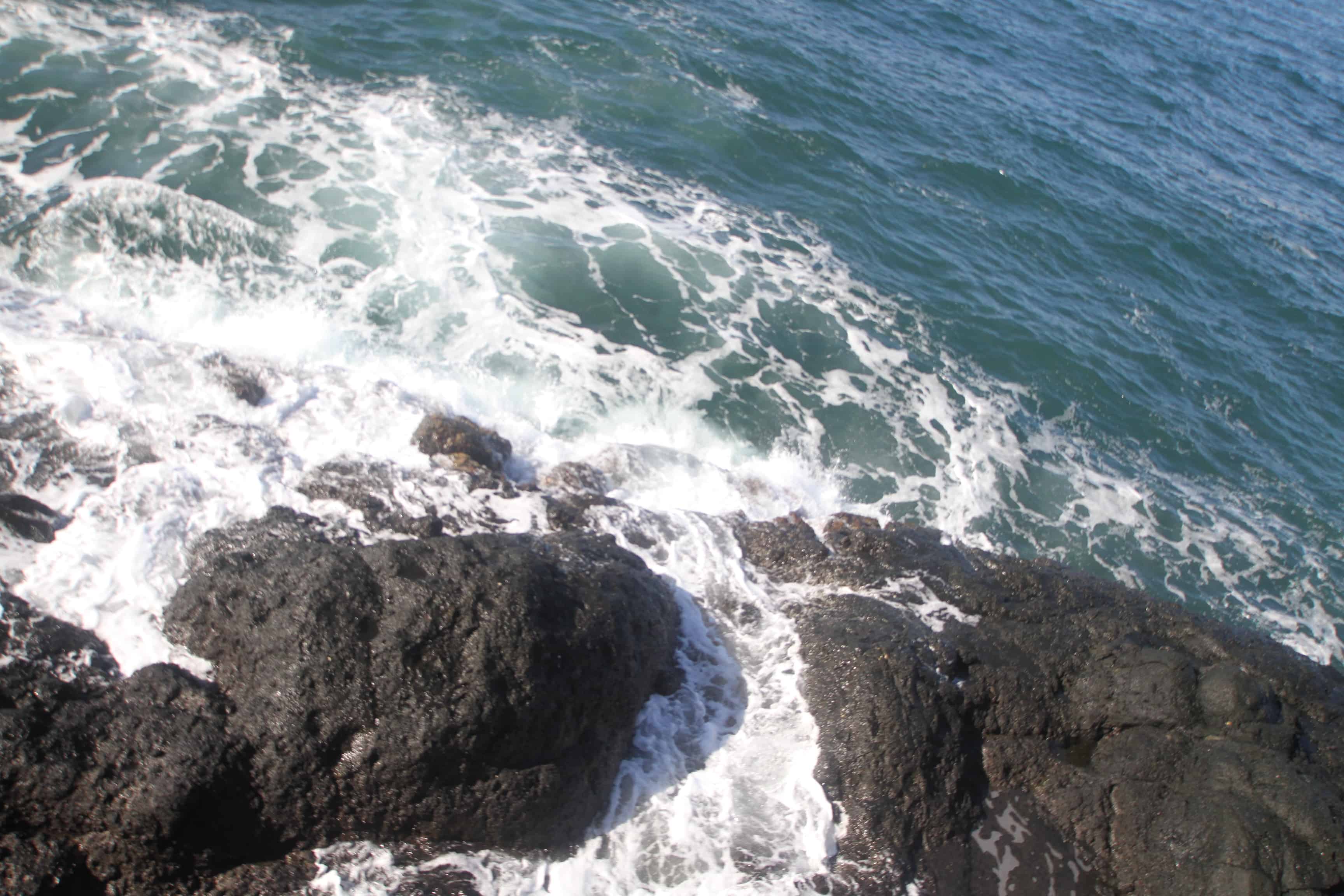
The waves crash up against the rocks at the Blow Hole
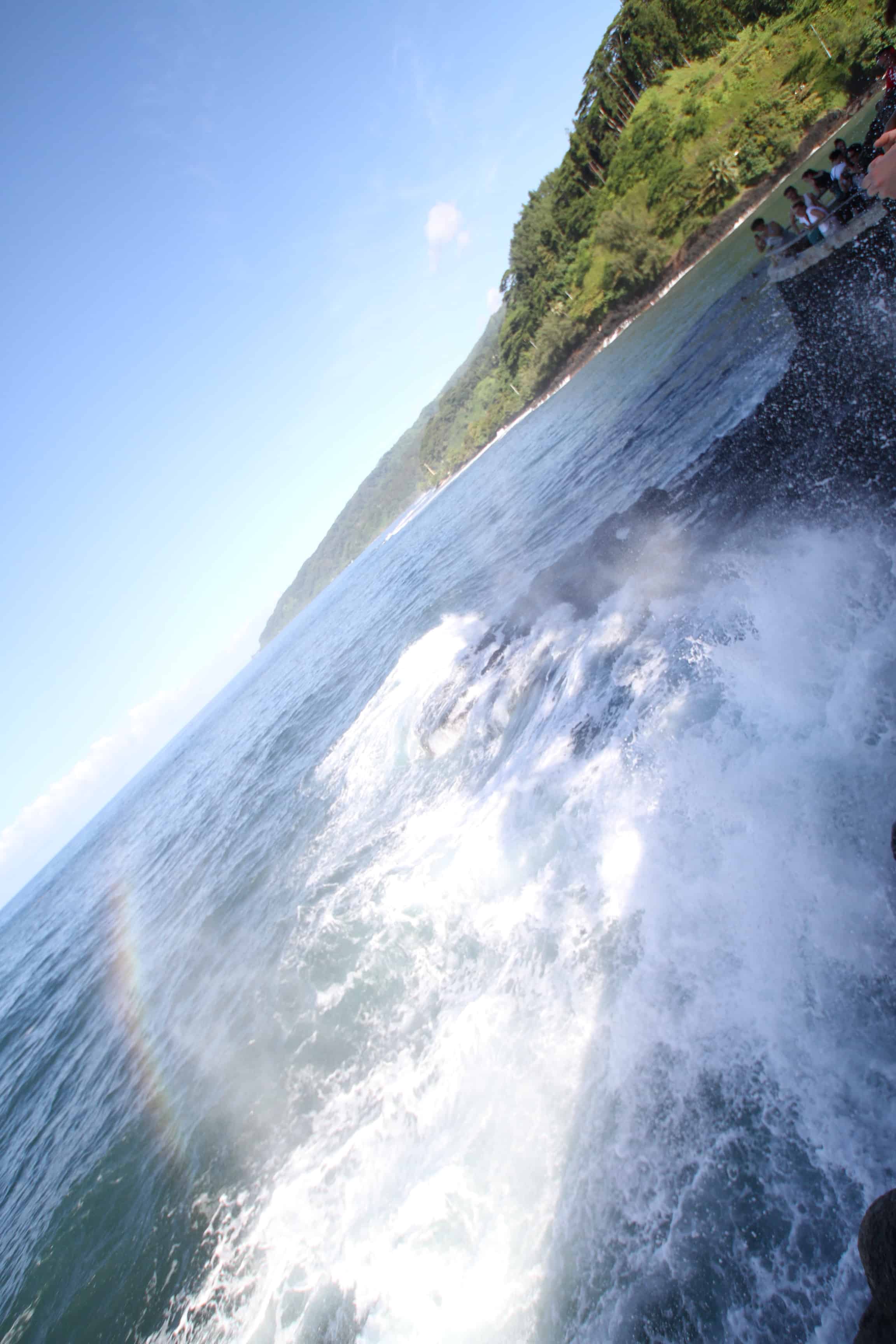
A rainbow greets us at the Blow Hole
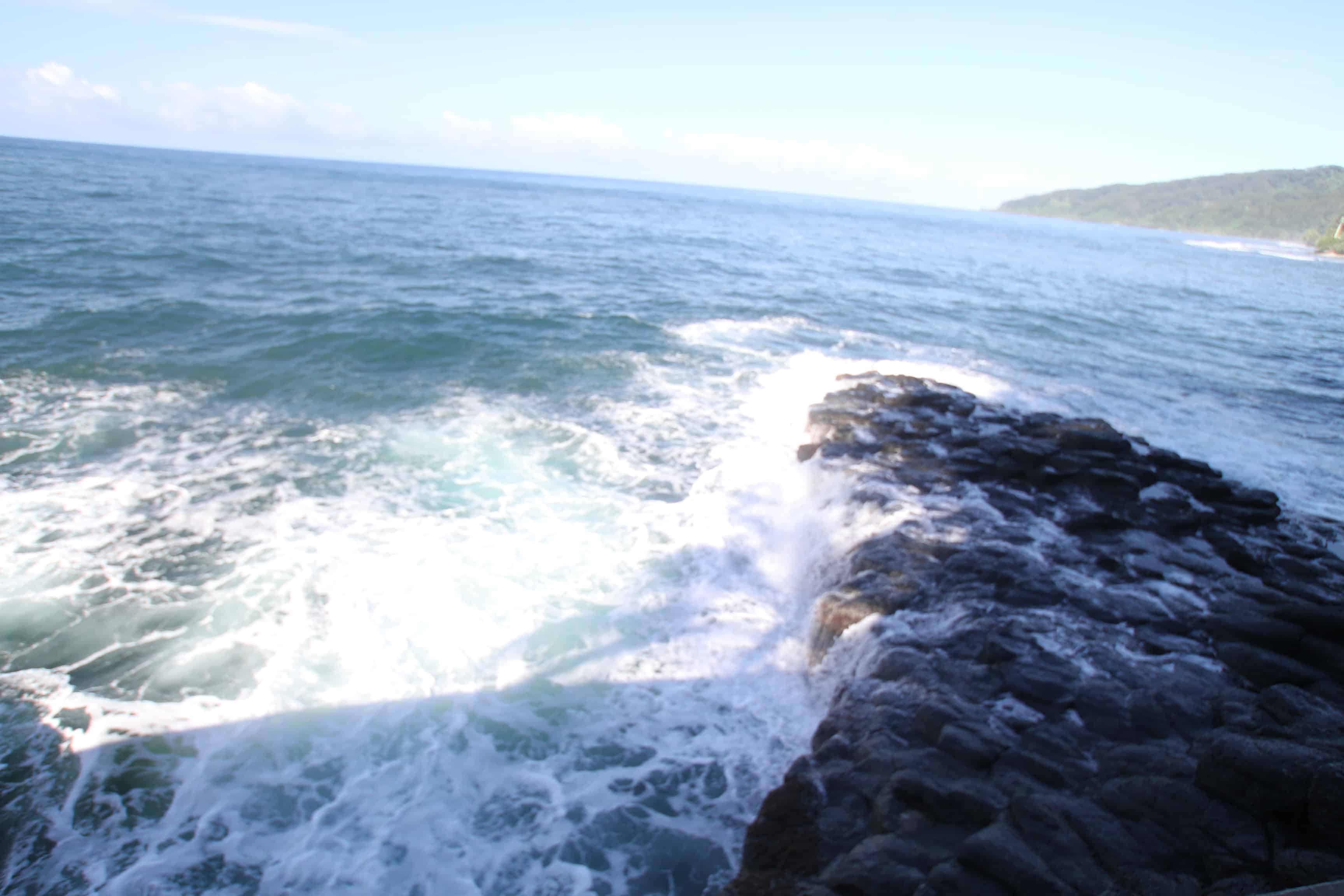
Tahiti’s Big Waves in Teahupoʻo
Speaking of surfing, Tahiti is internationally renowned for its big waves and surfers come here to catch those big waves.
Teahupoʻo (Te-a-hu-po-o, popular pronunciation is CHO-PO) is a village on the southeast coast of Tahiti. It is most known for the surf break and heavy, glassy waves offshore, often reaching 2 to 3 meters (6.6 to 9.8 feet), and sometimes up to 7 meters (23 feet).
We went out to see what we could see (and feel) on our last day in Tahiti. It happened to be a cloudy day with spurts of rain, so our visibility wasn’t the best. Even when it’s cloudy, the views are breathtaking and transformative in French Polynesia.
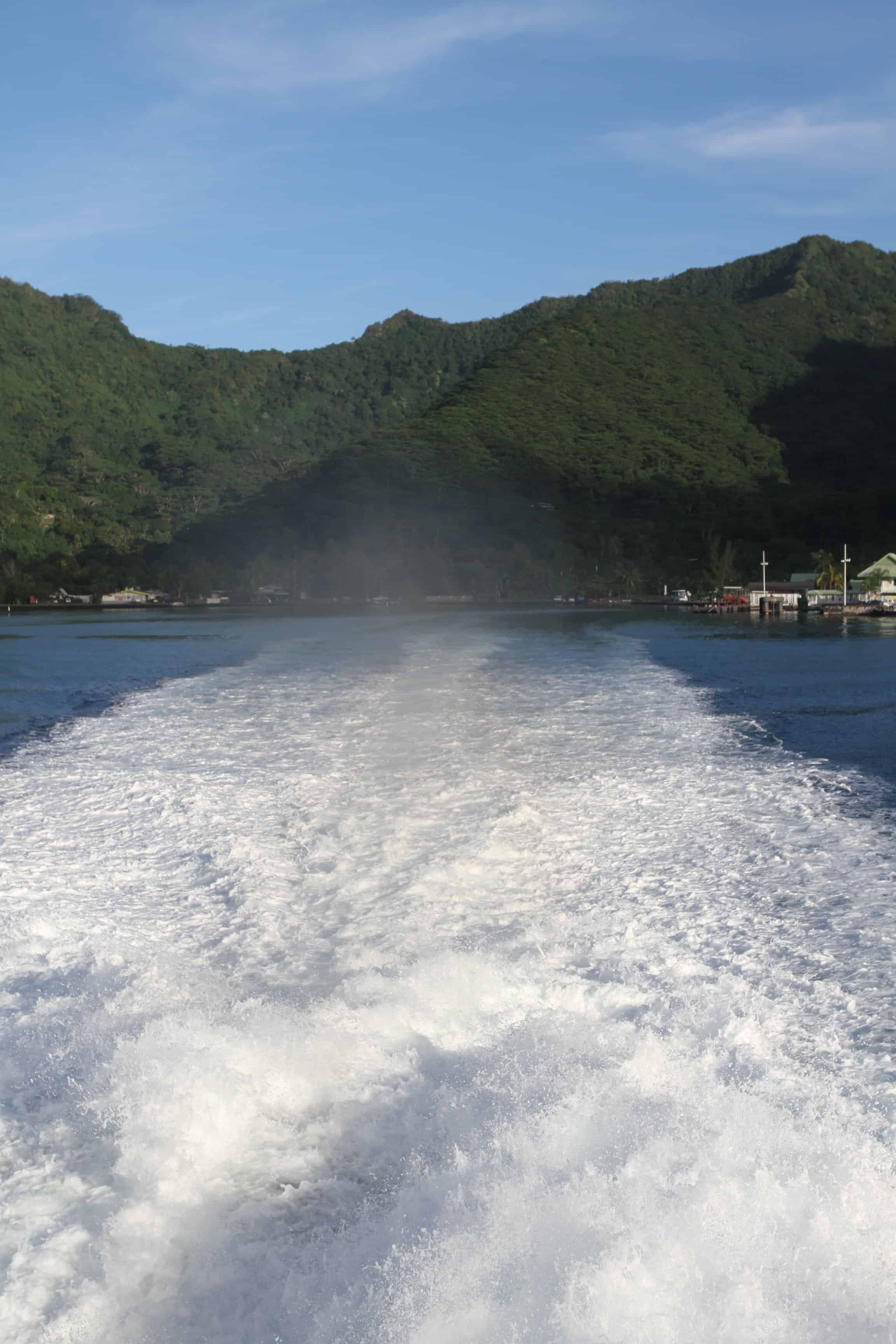
Leaving the port in a motor boat for the big waves of Teahupoʻo
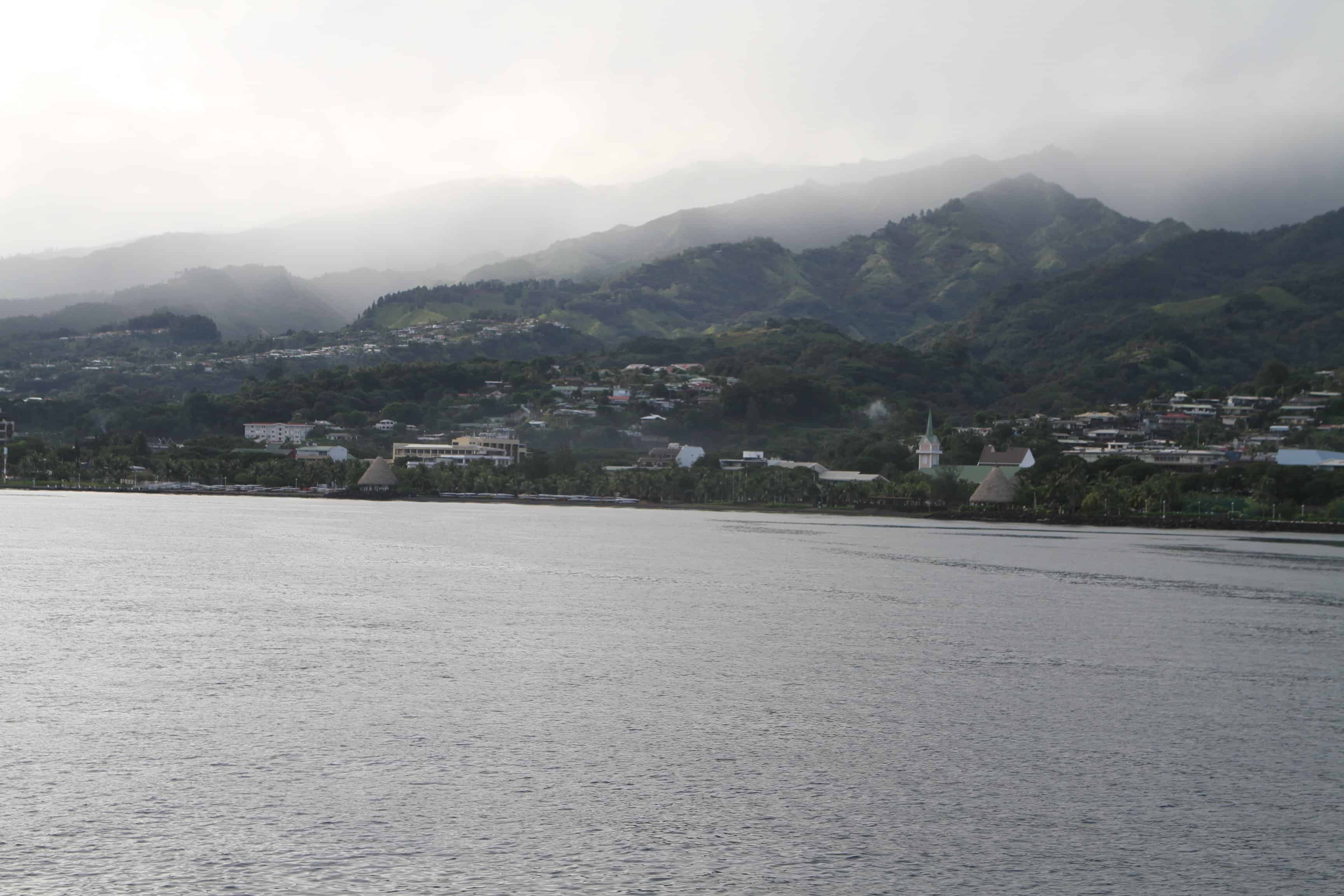
Tahiti on a cloudy day
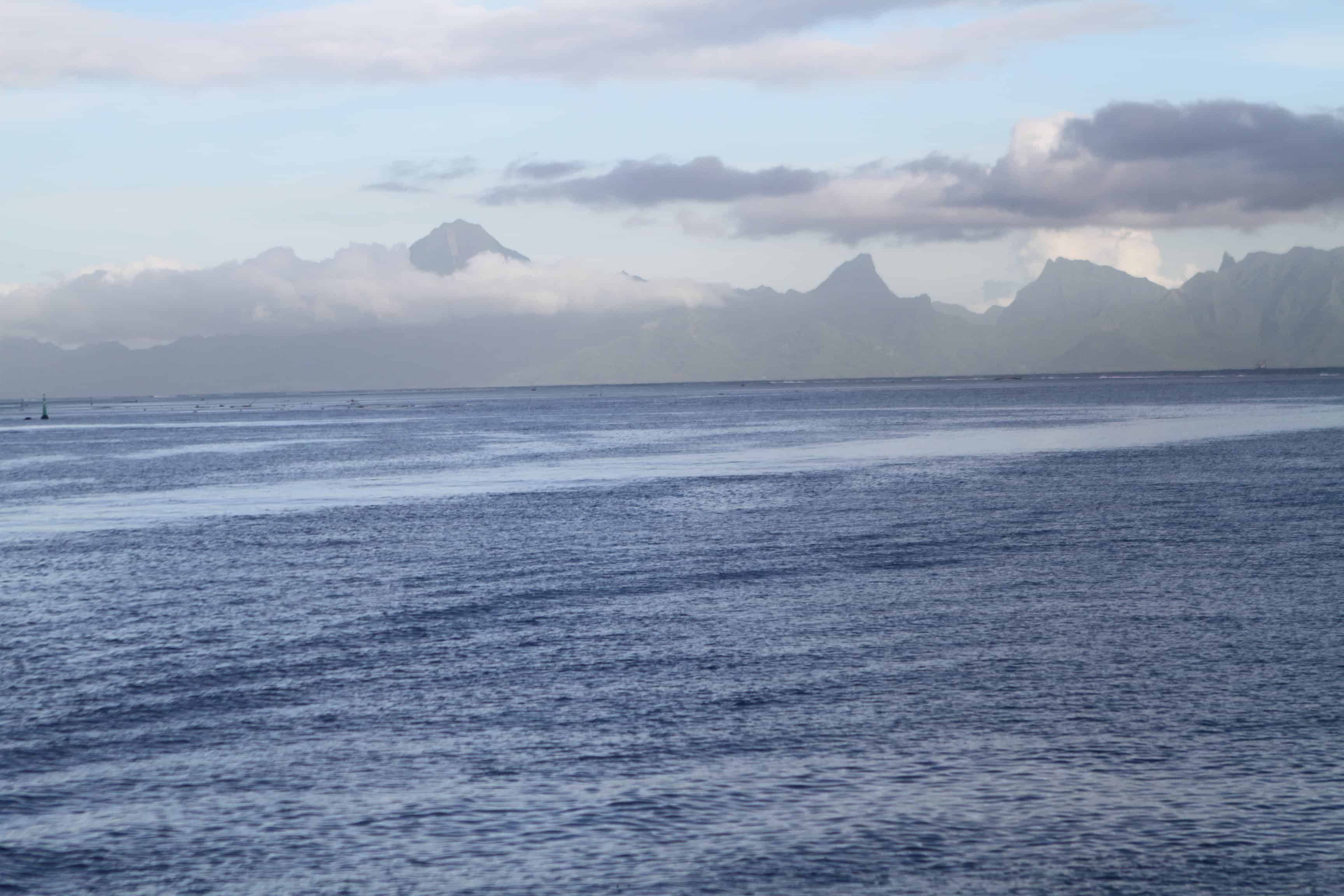
Tahiti’s cloud formations right before a rain
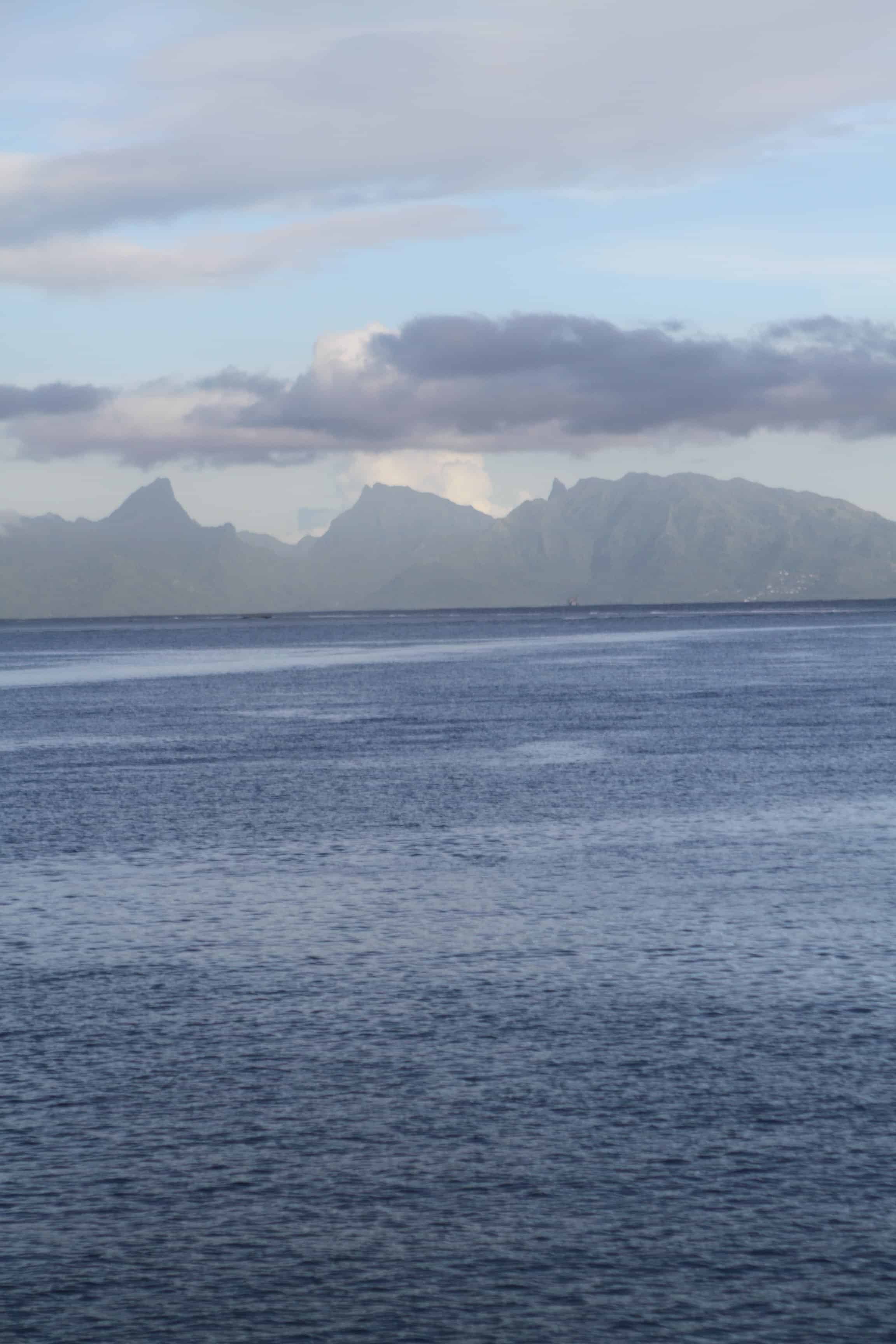
Cloud beauty in Tahiti
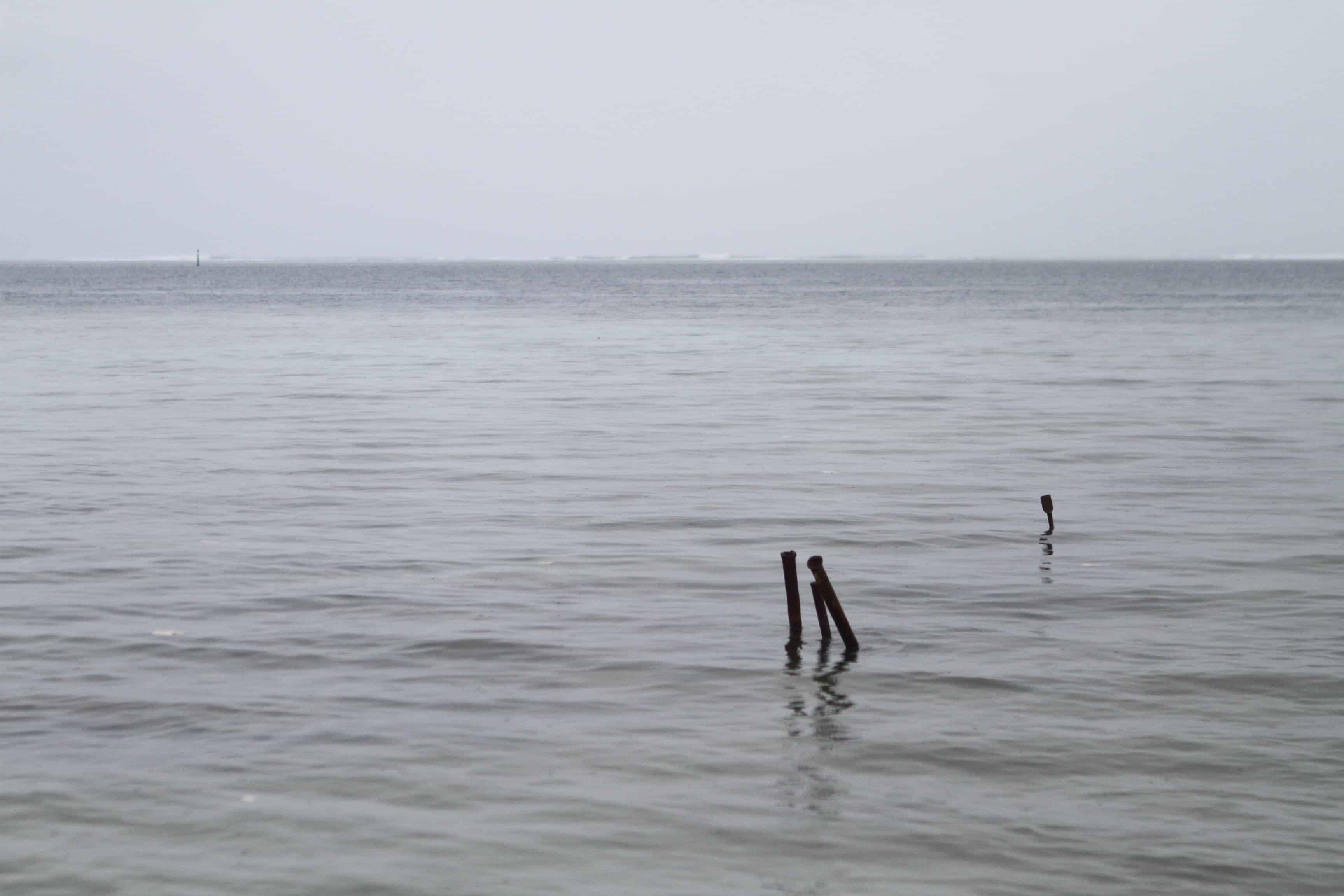
Stillness after a rainfall
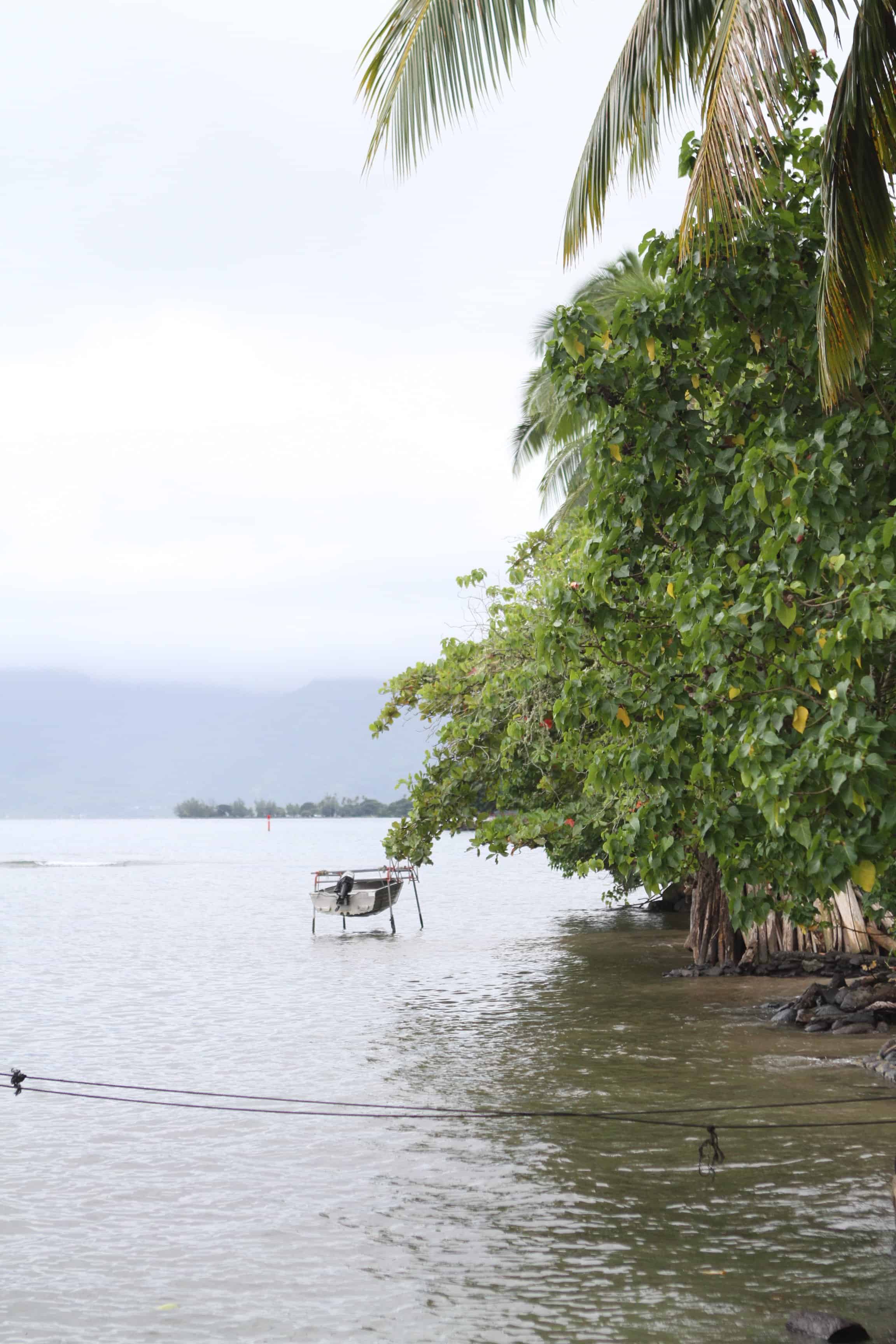
Stillness and clouds on our last day in Tahiti
I’d recommend if you are going to venture out to where the waves are the biggest in Tahiti, get a qualified driver and pick a sunny day for better visibility and overall comfort.
Hope you enjoyed this Mo’orea & Tahiti Travel Guide on Water. We’d love to hear your thoughts on what you enjoyed in Tahiti on or under the water or other any ideas you may have – feel free to leave comments below. Also be sure to check out our Tahiti & Mo’orea Travel Guide on Land.
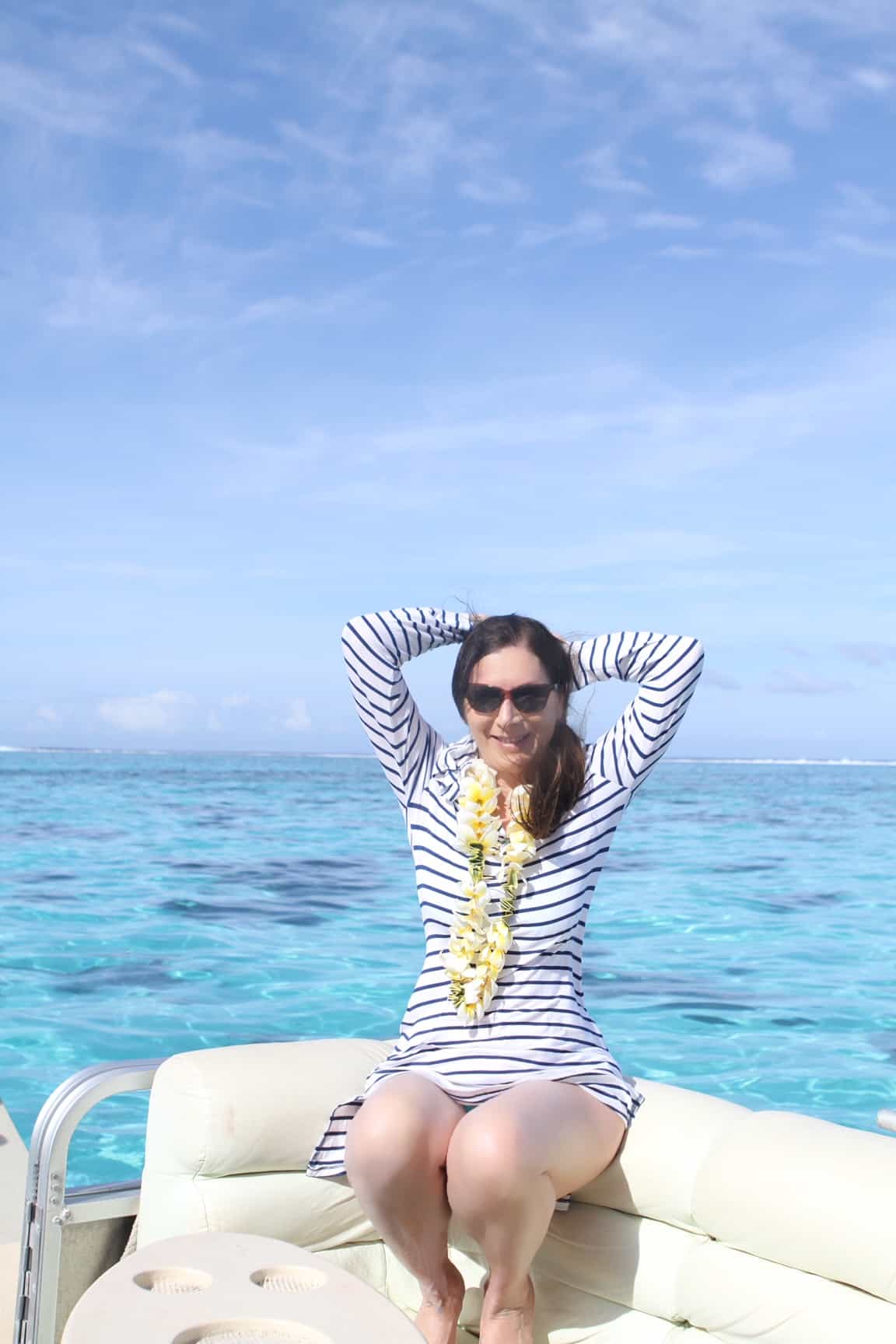
On the Lagoon tour on a sunnier and warmer day in Mo’orea

Renee Blodgett is the founder of We Blog the World. The site combines the magic of an online culture and travel magazine with a global blog network and has contributors from every continent in the world. Having lived in 10 countries and explored over 90, she is an avid traveler, and a lover, observer and participant in cultural diversity. She is also the founder of the Magdalene Collection, a jewelry line dedicated to women’s unsung voices and stories, and the award-winning author of the bestselling book Magdalene’s Journey
She is founder of Blue Soul Media and co-founder of Blue Soul Earth as well as the producer and host of the award-winning Blue Soul CHATS podcast, that bridges science, technology and spirituality. Renee also founded Magic Sauce Media, a new media services consultancy focused on viral marketing, social media, branding, events and PR. For over 20 years, she has helped companies from 12 countries get traction in the market. Known for her global and organic approach to product and corporate launches, Renee practices what she pitches and as an active user of social media, she helps clients navigate digital waters from around the world. Renee has been blogging for over 16 years and regularly writes on her personal blog Down the Avenue, Huffington Post, BlogHer, We Blog the World and other sites. She was ranked #12 Social Media Influencer by Forbes Magazine and is listed as a new media influencer and game changer on various sites and books on the new media revolution. In 2013, she was listed as the 6th most influential woman in social media by Forbes Magazine on a Top 20 List.
Her passion for art, storytelling and photography led to the launch of Magic Sauce Photography, which is a visual extension of her writing, the result of which has led to producing six photo books: Galapagos Islands, London, South Africa, Rome, Urbanization and Ecuador.
Renee is also the co-founder of Traveling Geeks, an initiative that brings entrepreneurs, thought leaders, bloggers, creators, curators and influencers to other countries to share and learn from peers, governments, corporations, and the general public in order to educate, share, evaluate, and promote innovative technologies.


